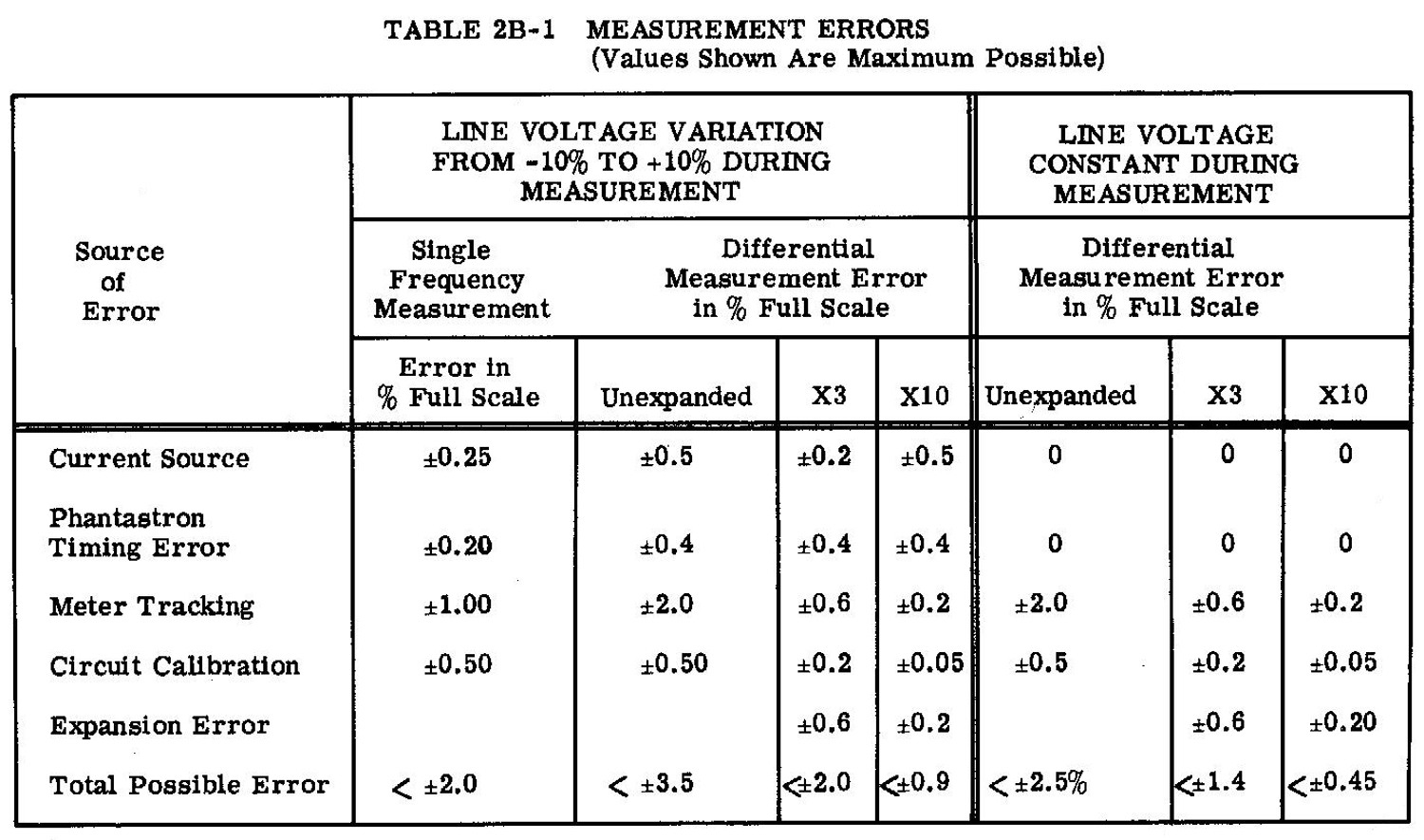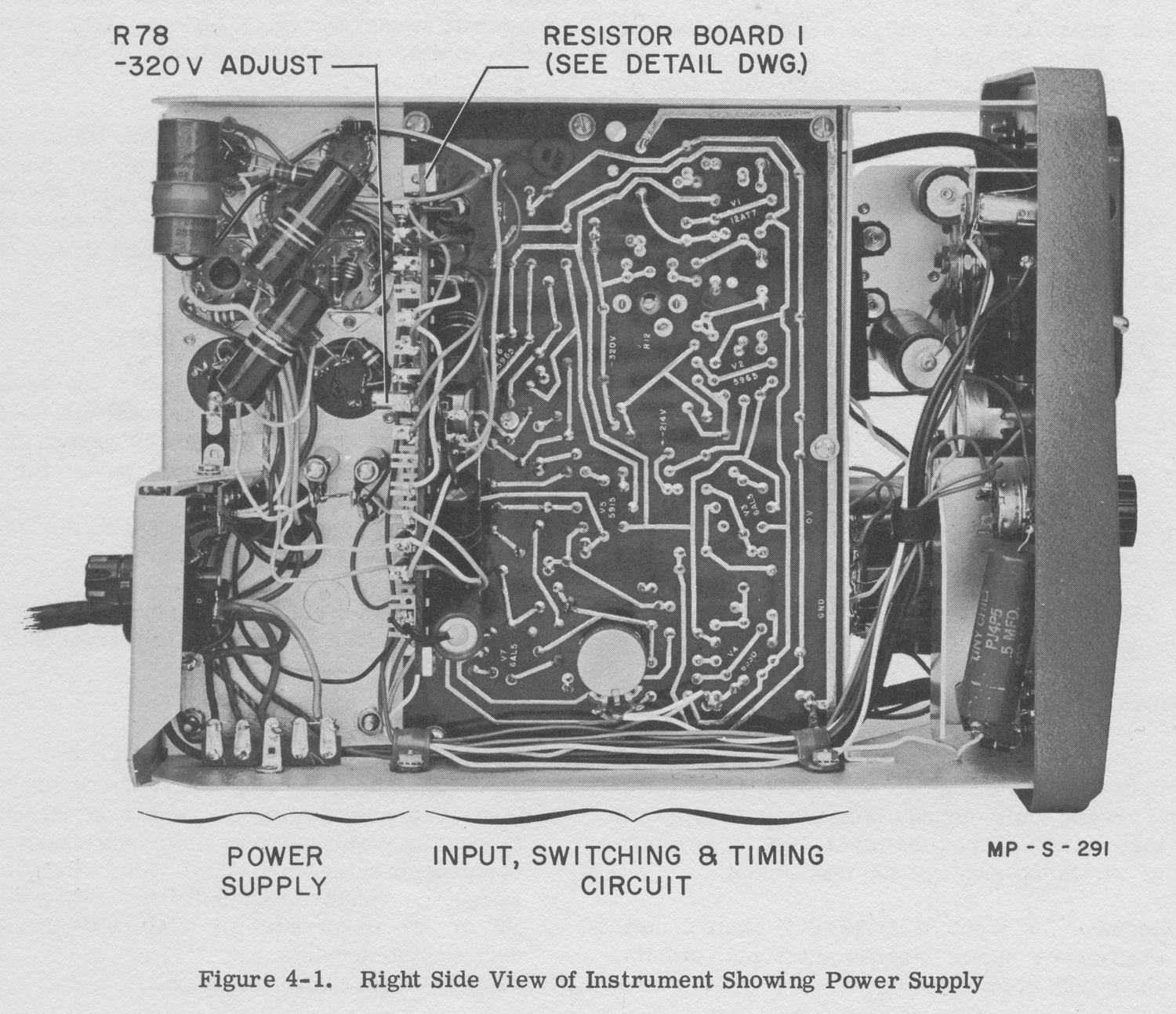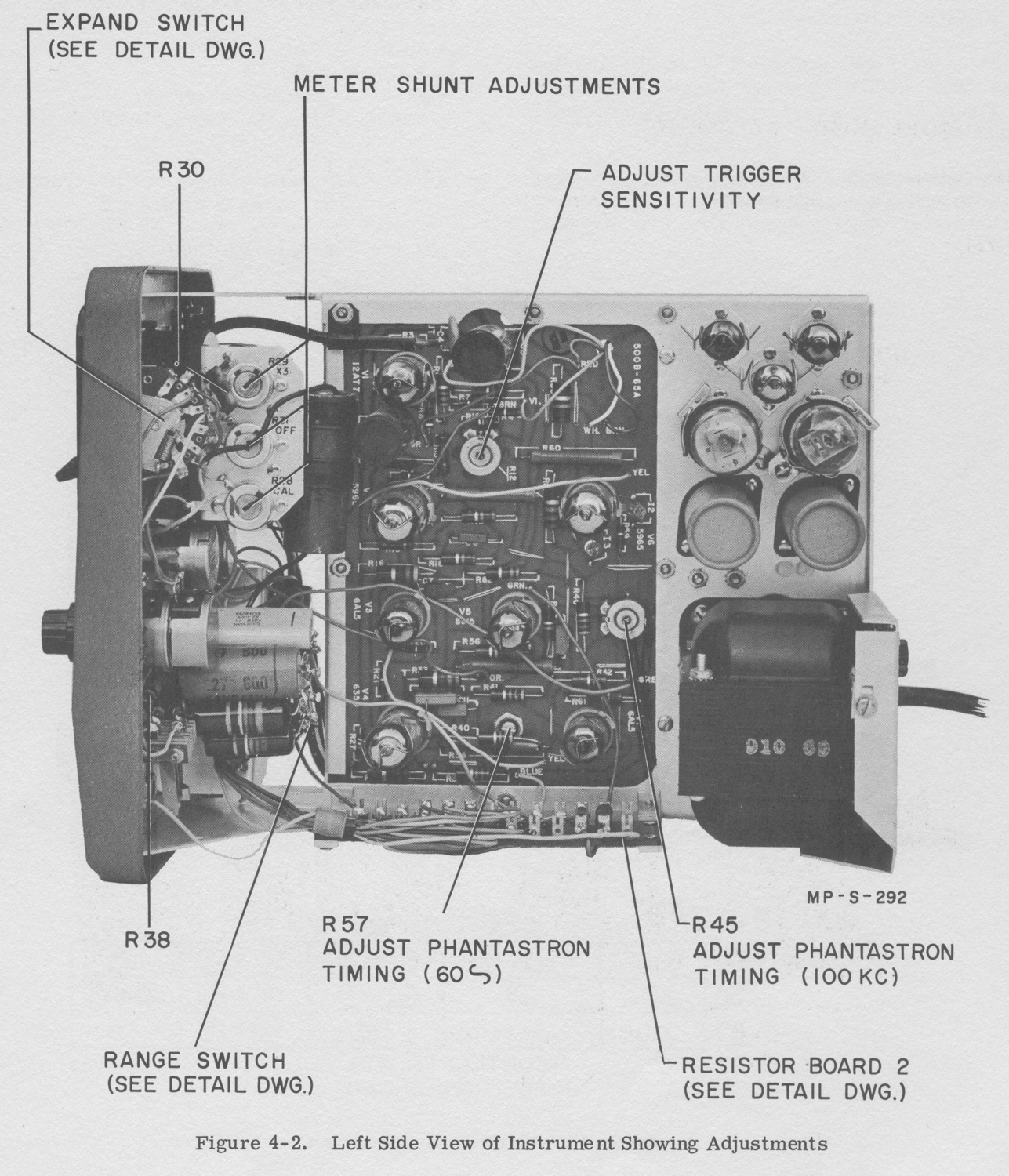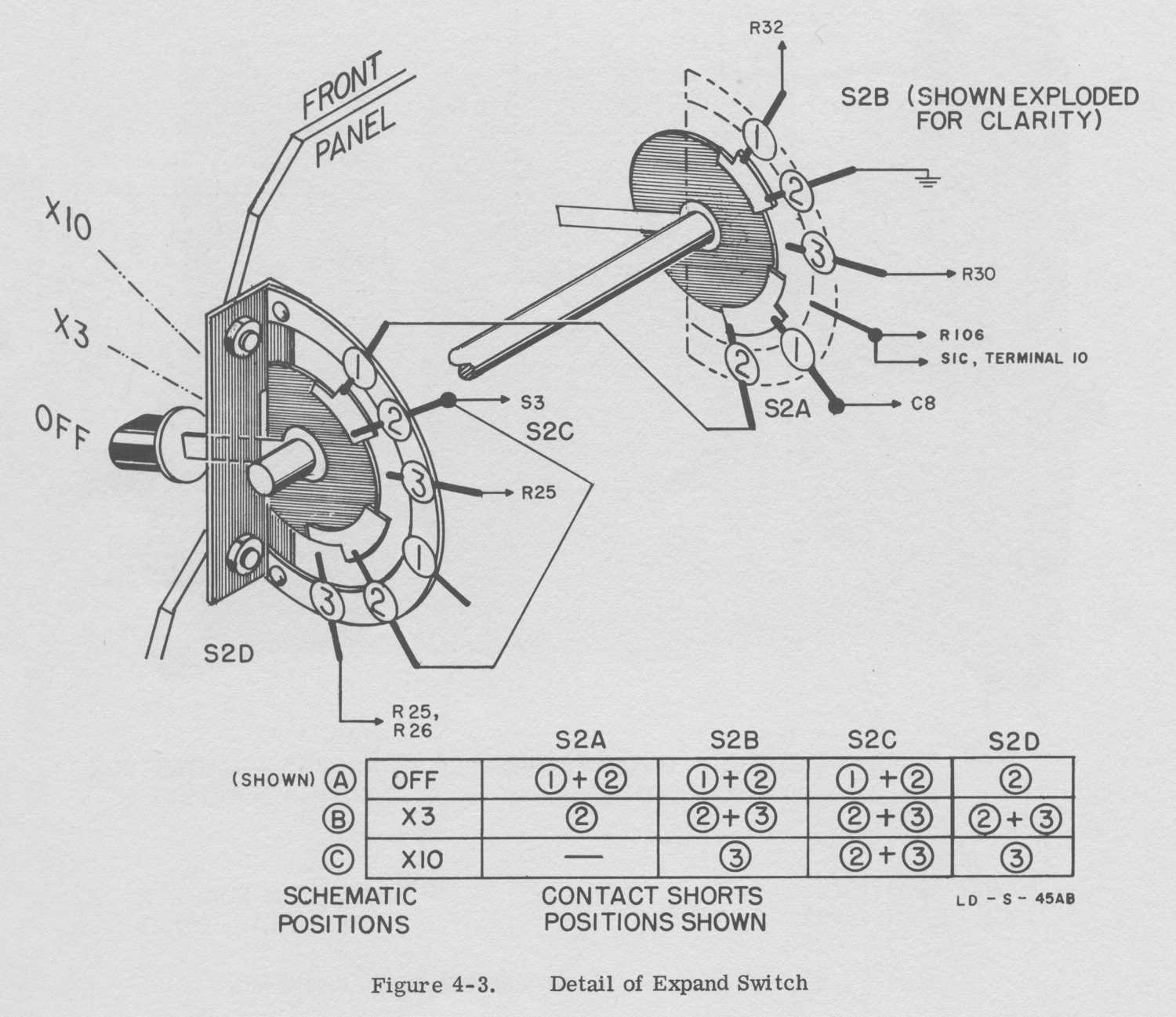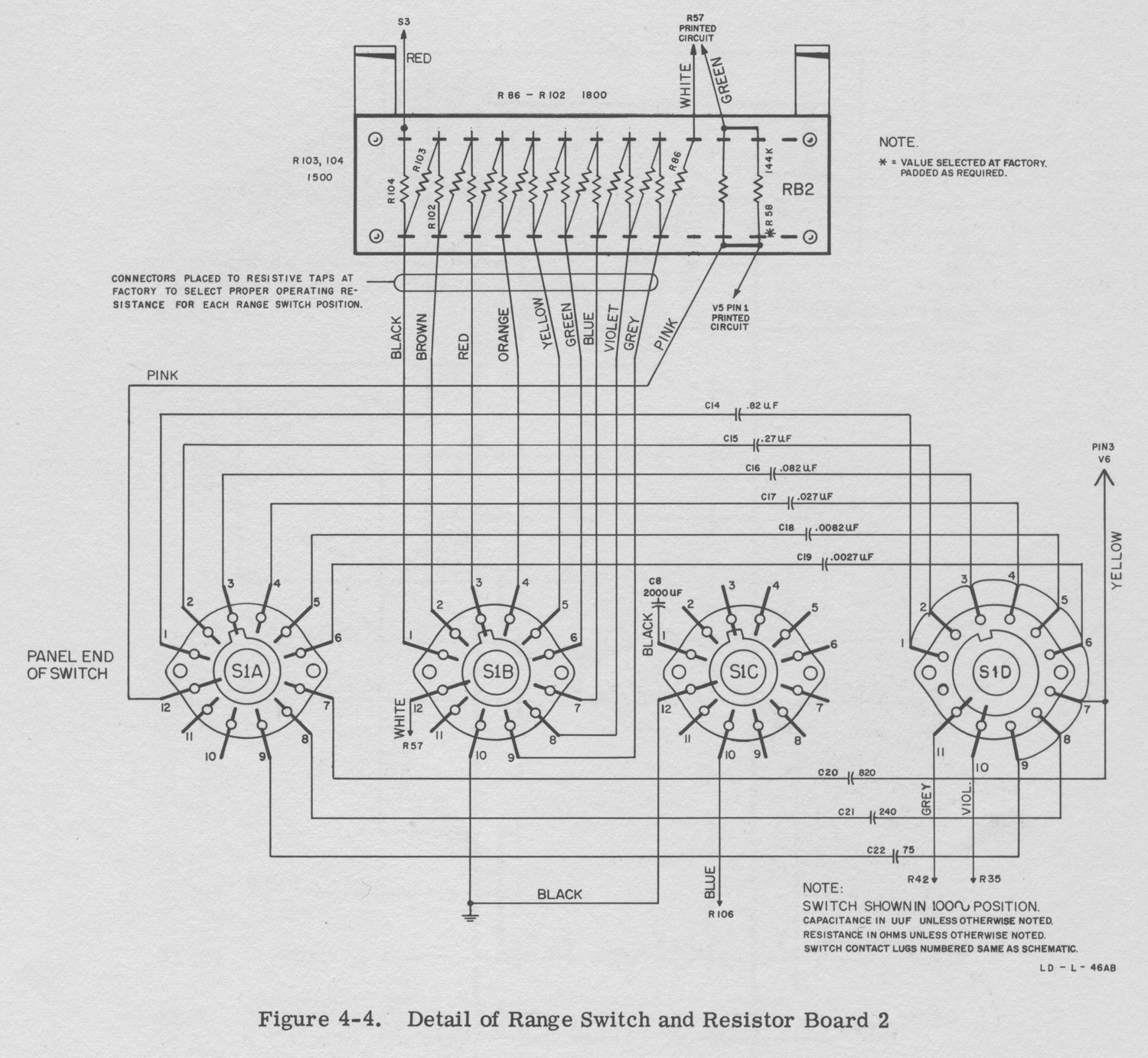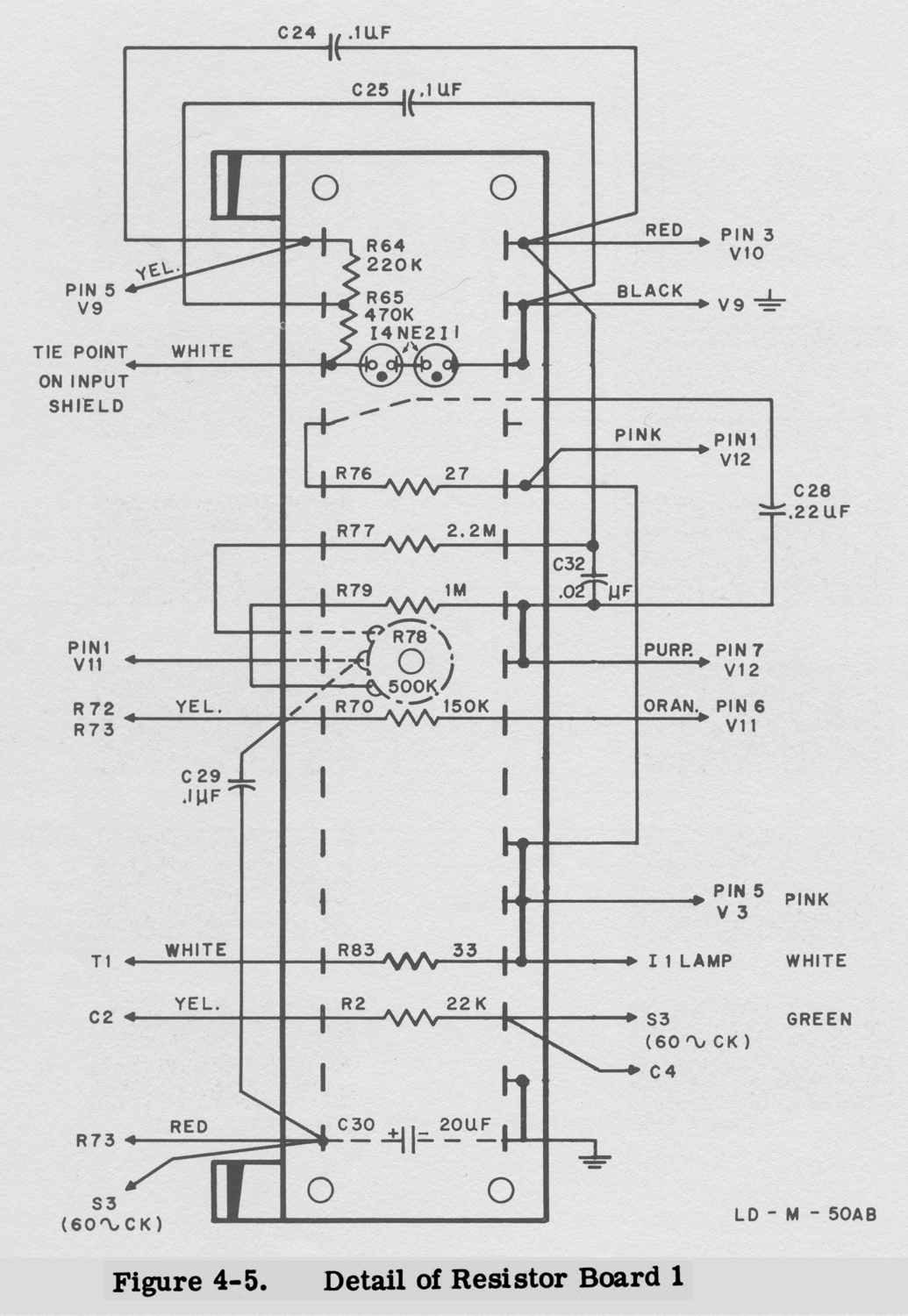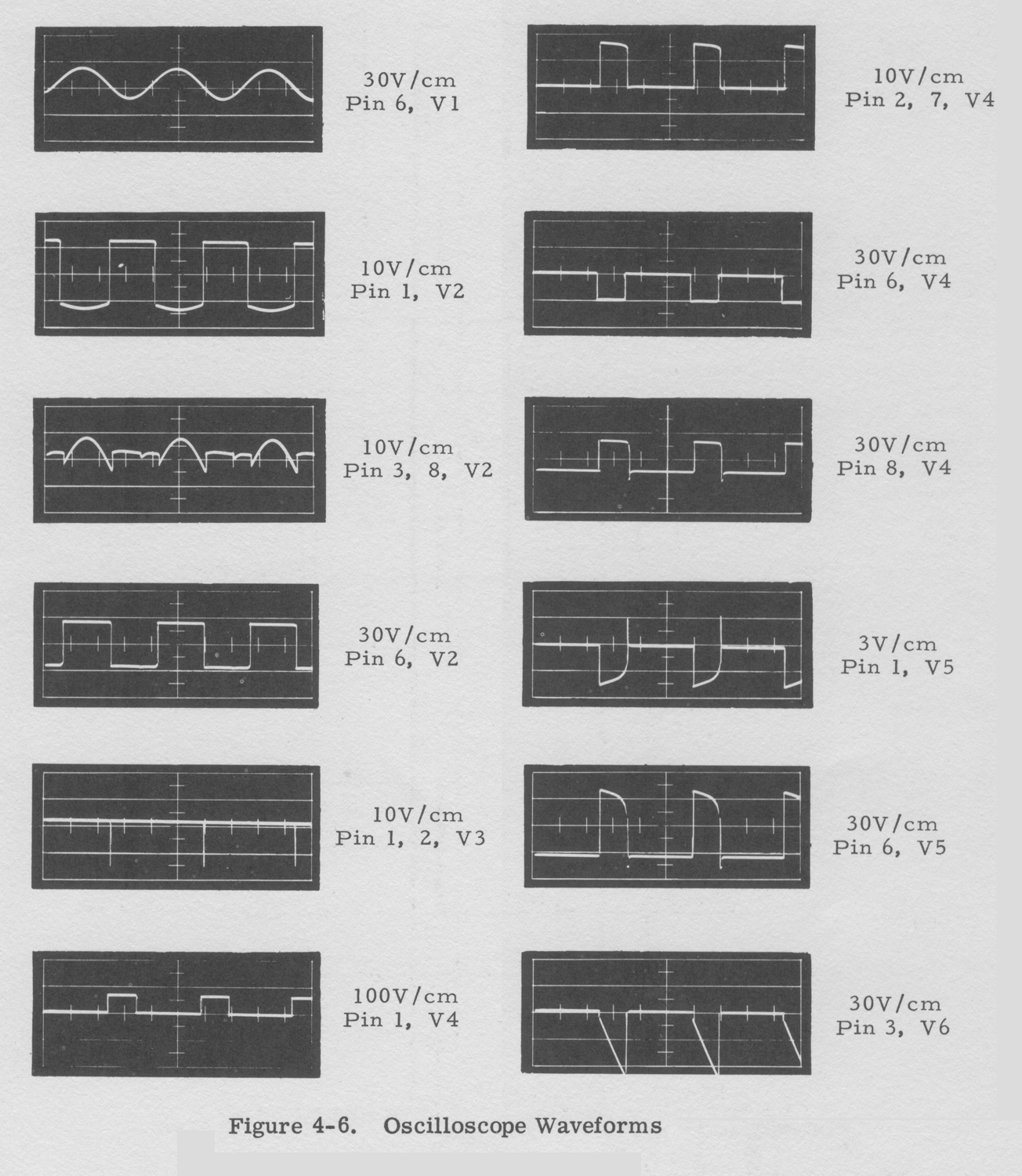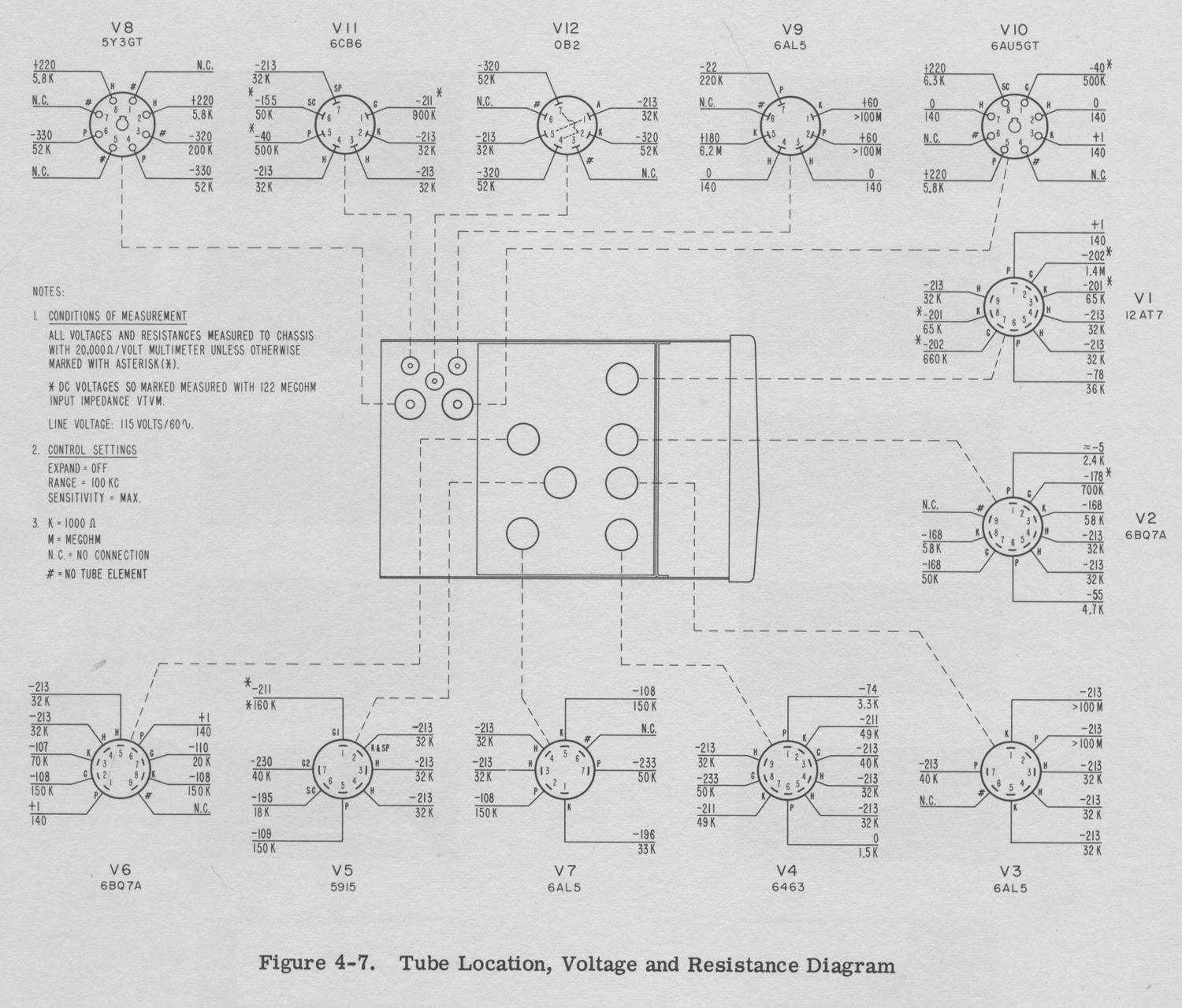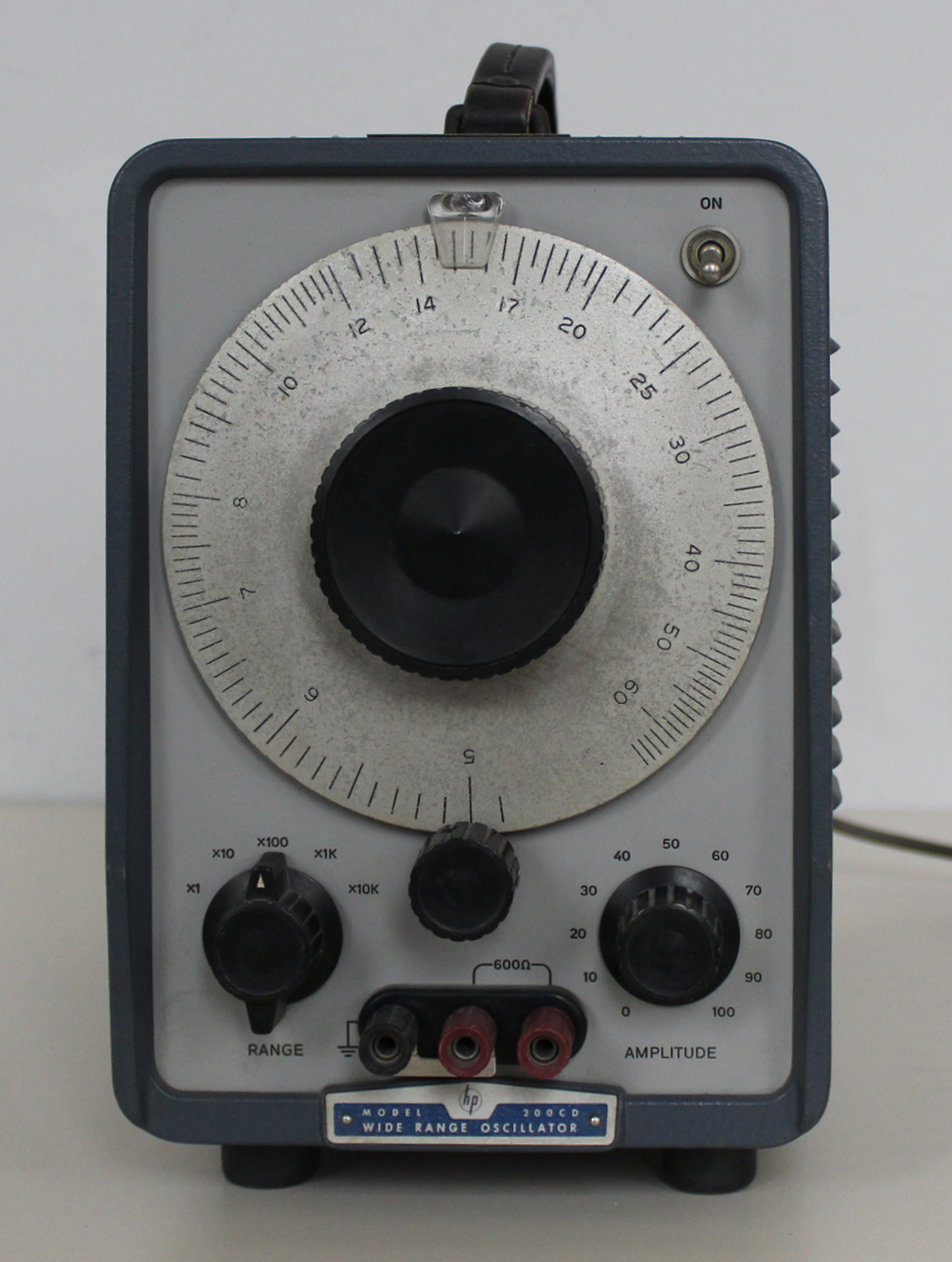
Wide Range Oscillator Hewlett Packard, mod. 200CD, matr. G 730-03469,W.-Germany, in italiano.
Dono della Fondazione Carlo e Giuseppe Piaggio – Genova.
Nell’estratto di inventario della Sezione Elettronica, in data febbraio 1968 al n° 198 si legge: “N° D 42324-35. Oscillatore 230 V ( HP 200CD)”.
Mentre scriviamo questa scheda purtroppo non disponiamo dell’inventario generale D dell’epoca per ulteriori dettagli, ma sappiamo che gli esemplari acquistati erano due.
In internet si trova molta documentazione che riguarda lo strumento; per consultare il manuale di istruzioni si può andare all’indirizzo:
http://www.hparchive.com/Manuals/HP-200CD-Manual-SNP_605.PDF
Nella Sezione Elettronica sono custoditi sia due diversi manuali originali di istruzioni, sia una traduzione in italiano. Riportiamo qui solo alcune pagine delle istruzioni in italiano poiché esse sono state tradotte da un manuale ancora diverso.
§§§
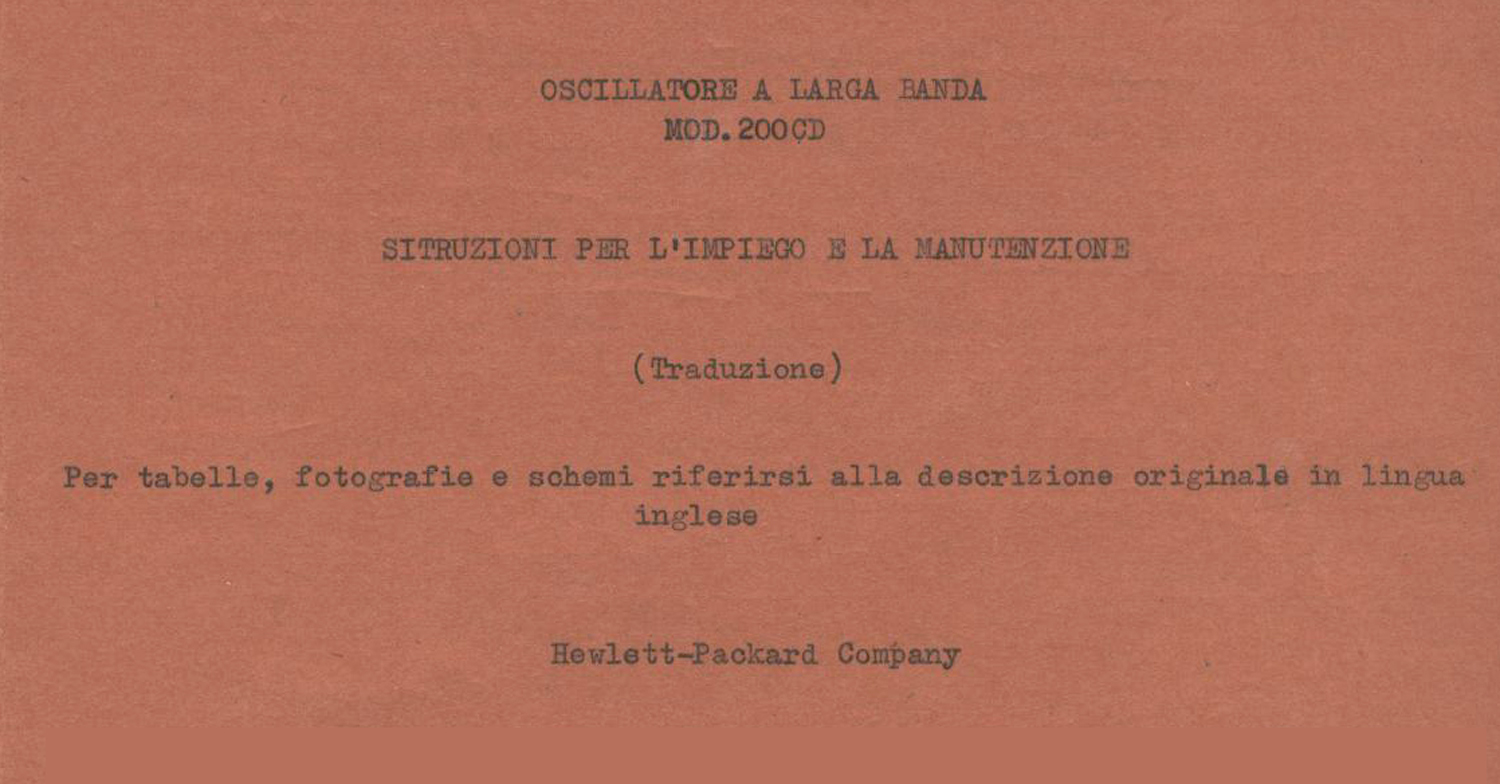

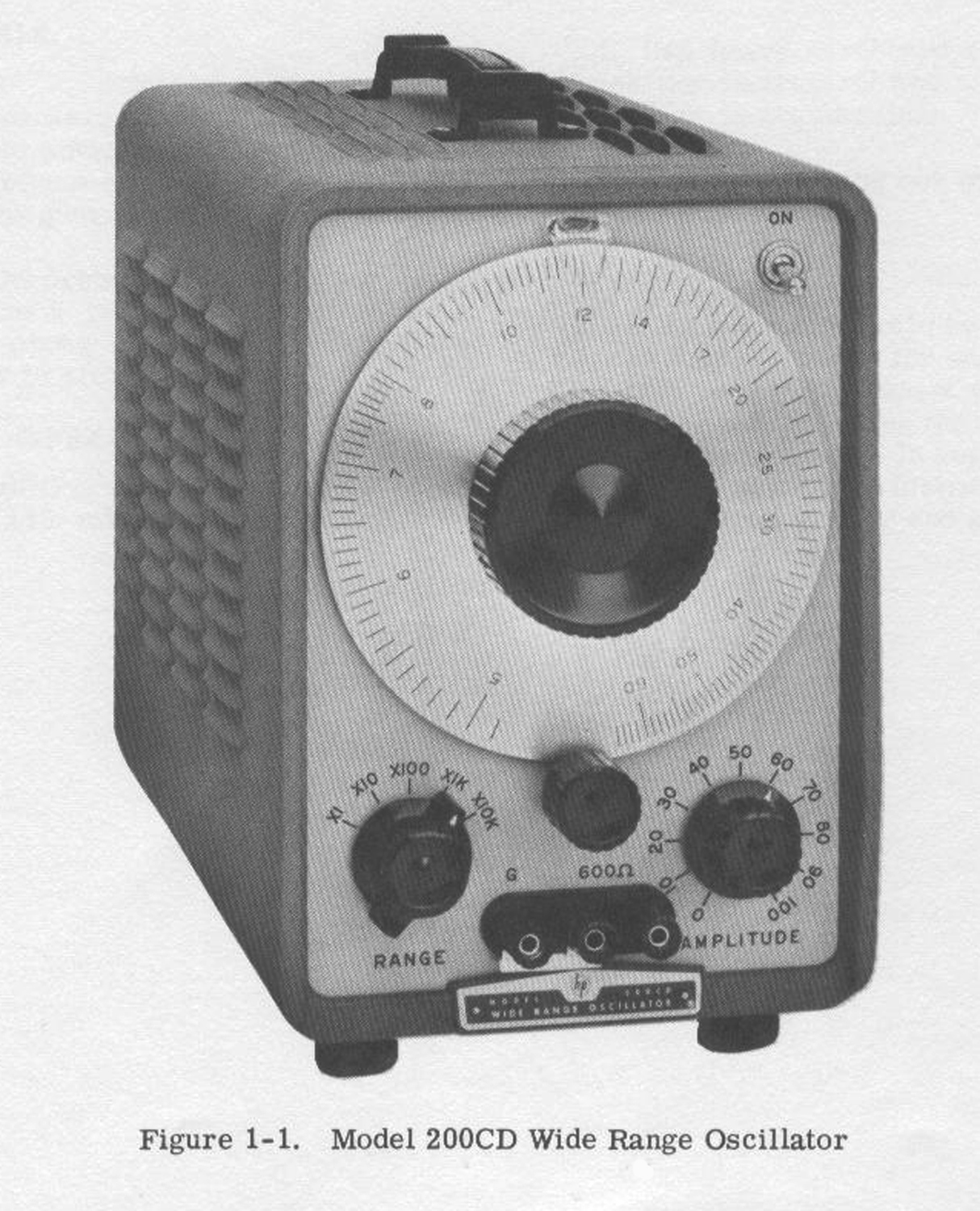
«OSCILLATORE A LARGA BANDA MOD. 200 CD
ISTRUZIONI PER L’IMPIEGO E LA MANUTENZIONE
(TRADUZIONE)
CARATTERISTICHE PRINCIPALI
Frequenza
Portata in frequenza: da 5 Hz a 600 kHz in 5 portate
Graduazione del quadrante: da 5 a 60
Portate: ×1 da 5 a 60 Hz
×10 da 50 a 600 Hz
×100 da 500 Hz a 6 kHz
× 1k da 5 a 60 kHz
×10k da 50 a 600 kHz
Precisione della calibrazione: ± 2% a temperatura ambiente normale, comprensiva dell’errore di taratura, riscaldamento e variazioni dovute all’invecchiamento delle valvole e dei componenti.
Risposta: ± 1 dB sull’intera gamma di frequenza (riferimento 1 kHz).
Stabilità di frequenza: variazioni della tensione di rete del ± 10% causano slittamenti insensibili nella frequenza di uscita.
Tempo di recupero: minore di 5 sec. Da 5 Hz a 600 kHz.
Potenza di uscita:
Potenza di uscita: 160 mW (10V) su 600 ohm, 20 V a circuito aperto.
Distorsione: minore di 0,5% al di sotto di 500 kHZ; minore di 1% da 500 kHz in su. Indipendente dall’impedenza del carico.
Fondo e rumore: minore di 1% della potenza di uscita; diminuisce col diminuire della potenza di uscita.
Bilanciamento dell’uscita: migliore di 0,1% sulle frequenze più basse e circa 1% su quelle più alte con il comando AMPLITUDE predisposto per la massima uscita. L’apparecchio può anche essere predisposto per il funzionamento sbilanciato.
Impedenza interna: 600 ohm. Su posizione di massima uscita del comando AMPLITUDE, l’uscita è bilanciata verso massa.
Alimentazione: 115 o 230 V, ± 10%, 50-1000 Hz, consumo 95 W.
Dimensioni in pollici:
Tipo
In cofano: larghezza 7.½ ; altezza 11-½ ; profondità 14-½
Tipo per telaio: larghezza 19 ; altezza 7 ; profondità 14-¼
Profondità dietro il frontale: 13-¼
Peso in libbre:
Tipo in cofano: ca. 23. Peso di spedizione 29.
Tipo per telaio: ca. 27. Peso di spedizione 42.
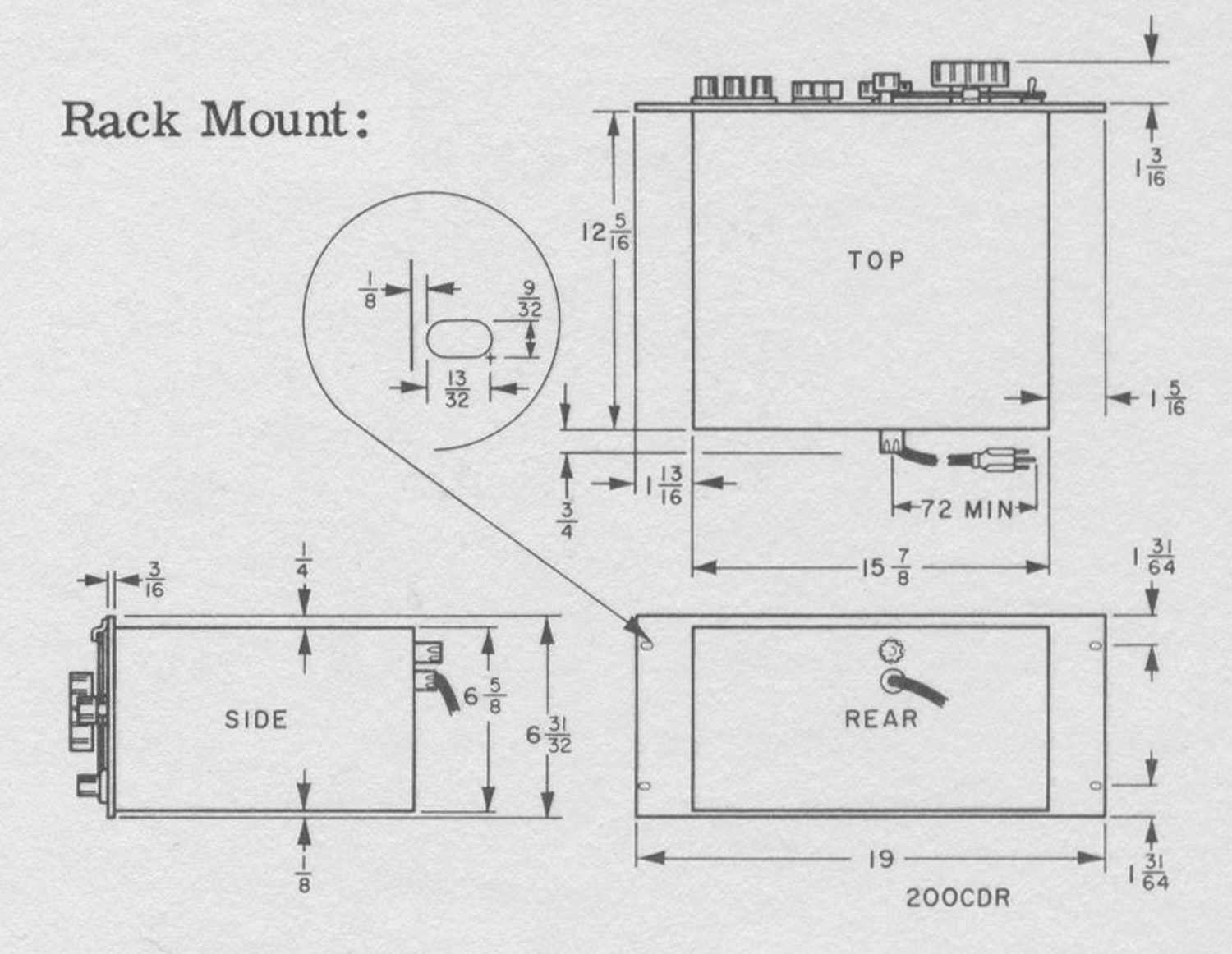 SEZIONE I
SEZIONE I
DESCRIZIONE GENERALE
1.1 Generalità.
L’oscillatore a larga banda mod. 200CD genera frequenze di eccellente forma d’onda nelle bande sotto soniche, audio e supersoniche (da 5 Hz a 600 kHz in cinque portate decimali). L’apparecchio è stato costruito secondo i più moderni dettami della tecnica, la qual cosa gli conferisce prestazioni superiori ai tipi precedenti. Circuiti speciali assicurano una uscita a bassa distorsione e alta stabilità con qualsiasi impedenza di carico, da zero a circuito aperto. La flessibilità dell’oscillatore è stata incrementata rendendo il circuito d’uscita adatto a funzionamento sbilanciato e bilanciato e provvedendo un adattamento di impedenza di 600 ohm.
L’apparecchio è di facile impiego, la voluta ampiezza e frequenza si ottengono predisponendo i comandi che si trovano tutti sul pannello frontale. Il quadrante di frequenza è di facile definizione, ha un diametro di 6 pollici e uno sviluppo effettivo di circa 80 pollici. La graduazione si estende su un arco di 300°.
L’apparecchio fornisce fino a 10 V su di un carico di 600 ohm (20 V a circuito aperto) su qualsiasi frequenza compresa fra i 5 Hz e 600 kHz. La potenza d’uscita è controllata mediante un attenuatore variabile a ponte inserito nel circuito di uscita.
L’oscillatore mod. 200CD costituisce un flessibile generatore di segnali adatto per misure su sistemi vibratori e servo ripetitori, apparecchiature geofisiche ed elettromedicali, circuiti amplificatori audio, trasduttori, apparecchiature sonar e supersoniche, sistemi telefonici a frequenze vettrici e apparecchiature radio a bassa frequenza.
1-2 Cavo di alimentazione [Omissis…]
Il cavo di alimentazione a tre conduttori fornito con l’apparecchio è terminato con un connettore a tre piedini e posizione obbligata raccomandata dalla National Manufacturers’s Association. Il terzo piedino è di forma cilindrica ed è aggiunto ad una spina standard a due lame. Quando la spina è usata unitamente ad una adatta presa di corrente il connettore cilindrico serve a mettere a massa l’apparecchio. Per impiegare questo connettore con una spina normale a due reofori soltanto, è necessario servirsi di un adattatore da tre piedini a due piedini.
1.3 e 1.4 [Omissis…]
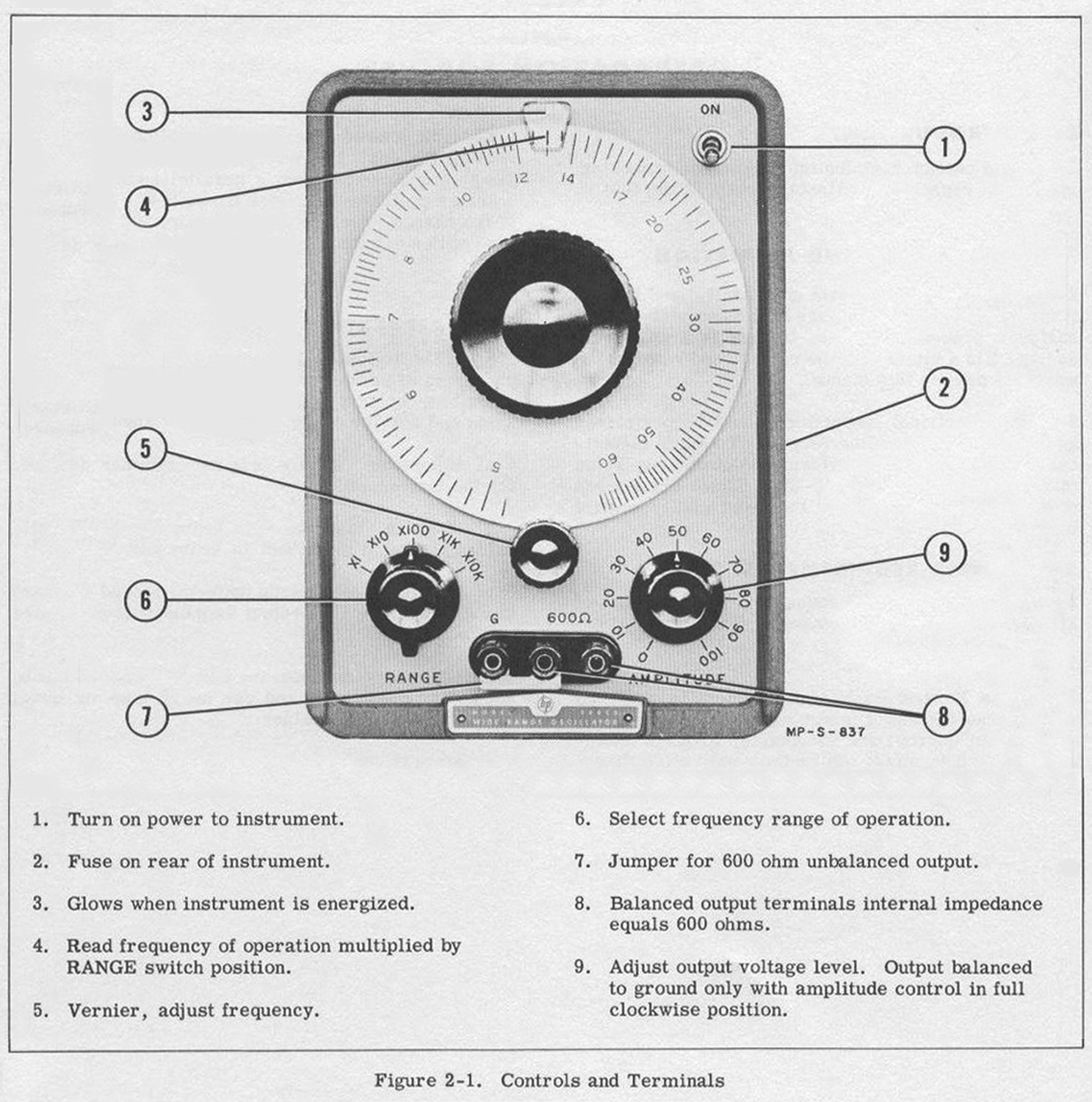
Fig. 2.1 Comandi e morsetti
[la numerazione è in ordine diverso così come la traduzione è diversa e forse si riferisce ad una figura leggermente diversa. N.d.R.]
– (7) Ponticello per uscita [sbilanciata da (N.d.R.)] 600 ohm sbilanciati.
– (6) Moltiplicatore per le portate di frequenza.
– (4) Lettura della frequenza da moltiplicarsi per il potere di moltiplicazione indicato dal commutatore in basso a sinistra.
– (3) Si illumina quando l’apparecchio è acceso.
– (2) Fusibile sul lato posteriore, 1 Amp. a lenta azione per rete 115 V.
– (1) Interruttore per l’accensione.
– (5) Verniero per la regolazione della frequenza.
– (9) Regolazione del livello d’uscita. Uscita bilanciata verso massa solo quando questo comando è girato completamente verso destra.
[ (8) terminali di uscita bilanciata impedenza interna eguale a 600 ohm (N.d.R.)]
SEZIONE II
ISTRUZIONI PER L’IMPIEGO
2.1 Procedimento per l’impiego
a) Inserire la spina in una presa sede di tensione e frequenza adatte, [far] scattare l’interruttore di accensione su On ed attendere cinque minuti circa per il riscaldamento.
Nota – Se si adopera una sorgente di tensione 230 V, accertarsi che il trasformatore di alimentazione sia conseguentemente predisposto ( riferirsi allo schema elettrico) e che il fusibile sia da 0,5 Amp. A lenta azione. Prendere visione del paragrafo 4.12.
b) La frequenza della tensione di uscita si determina predisponendo il quadrante di frequenza e ponendo il commutatore RANGE sulla adatta posizione. Per ottenere, ad esempio, una frequenza di 1 kHz all’uscita mettere il quadrante su 10 e il commutatore Range su X100 (10 X 100 = 1000 Hz).
c) Girare il comando AMPLITUDE sulla posizione 0. Collegare il carico ai morsetti d’uscita dell’apparecchio contrassegnati con 600 ohm. (Le connessioni sono discusse nel paragrafo 2.2).
L’oscillatore può essere connesso ad un carico di qualsiasi valore senza alterazione della forma d’onda d’uscita. Carichi con impedenza minore di 600 ohm diminuiranno la massima tensione di uscita; quelli maggiori di 600 Ohm l’aumenteranno. L’apparecchio può essere considerato coem un generatore a 20 V con una impedenza interna di 600 ohm.
d) Regolare il comando AMPLITUDE per la voluta tensione di uscita.
2.2. Commutazione del circuito di uscita.
L’uscita dell’apparecchio 200CD può essere predisposta per funzionamento bilanciato e sbilanciato.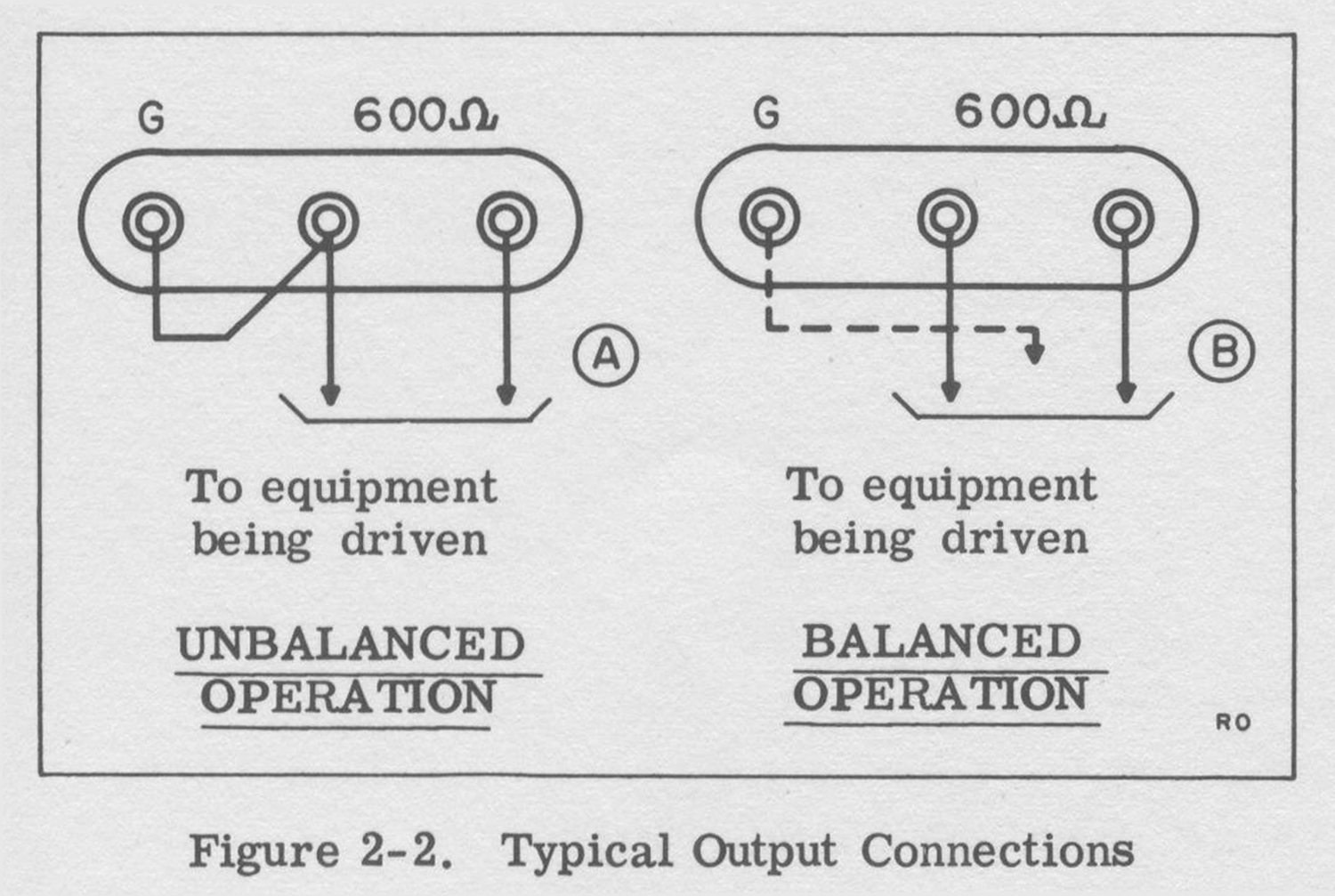 Fig. 2.2 connessioni tipiche d’uscita A B – al carico
Fig. 2.2 connessioni tipiche d’uscita A B – al carico
Funzionamento sbilanciato
Per il funzionamento con un capo a massa si pone il ponticello fra il terminale di sinistra G e quello centrale, come indicato in Fig. 2.2 A.
Funzionamento bilanciato
Le connessioni per il funzionamento bilanciato sono riportate in Fig. 2.2 B (la linea tratteggiata dal morsetto di massa indica il circuito di uscita bilanciato verso massa entro le tolleranze date prima).
Il comando AMPLITUDE nel circuito d’uscita è costituito da un attenuatore a T a ponte. Esso sbilancia il circuito su tutte le posizioni meno su quella corrispondente alla minima attenuazione. Per il funzionamento bilanciato, quindi, questo comando deve essere messo sulla massima uscita (posizione estrema in senso orario). L’uscita bilanciata è anche funzione della frequenza a causa delle reazioni capacitive sulle più alte frequenze. Fino a 10 kHz lo sbilanciamento è minore dello 0,1% e a 600 kHz esso è circa 1%. Se si desiderano delle uscite di basso valore e se il bilanciamento alle più alte frequenze è critico, girare il comando AMPLITUDE direttamente in senso orario e inserire un attenuatore esterno, progettato per le frequenze in gioco, fra l’oscillatore e il carico. La curva che segue indica l’area entro cui si può ottenere un bilanciamento dell’1%. La curva indica il bilanciamento che si può ottenere alle varie posizioni del comando AMPLITUDE con carico 600 ohm. Per carichi diversi da 600 ohm la curva non può essere applicata direttamente, ma fa predisporre il comando sulla posizione che darebbe la tensione voluta se il carico fosse 600 ohm; Fig. 2.3 Curva di bilanciamento per funzionamento su 600 ohm.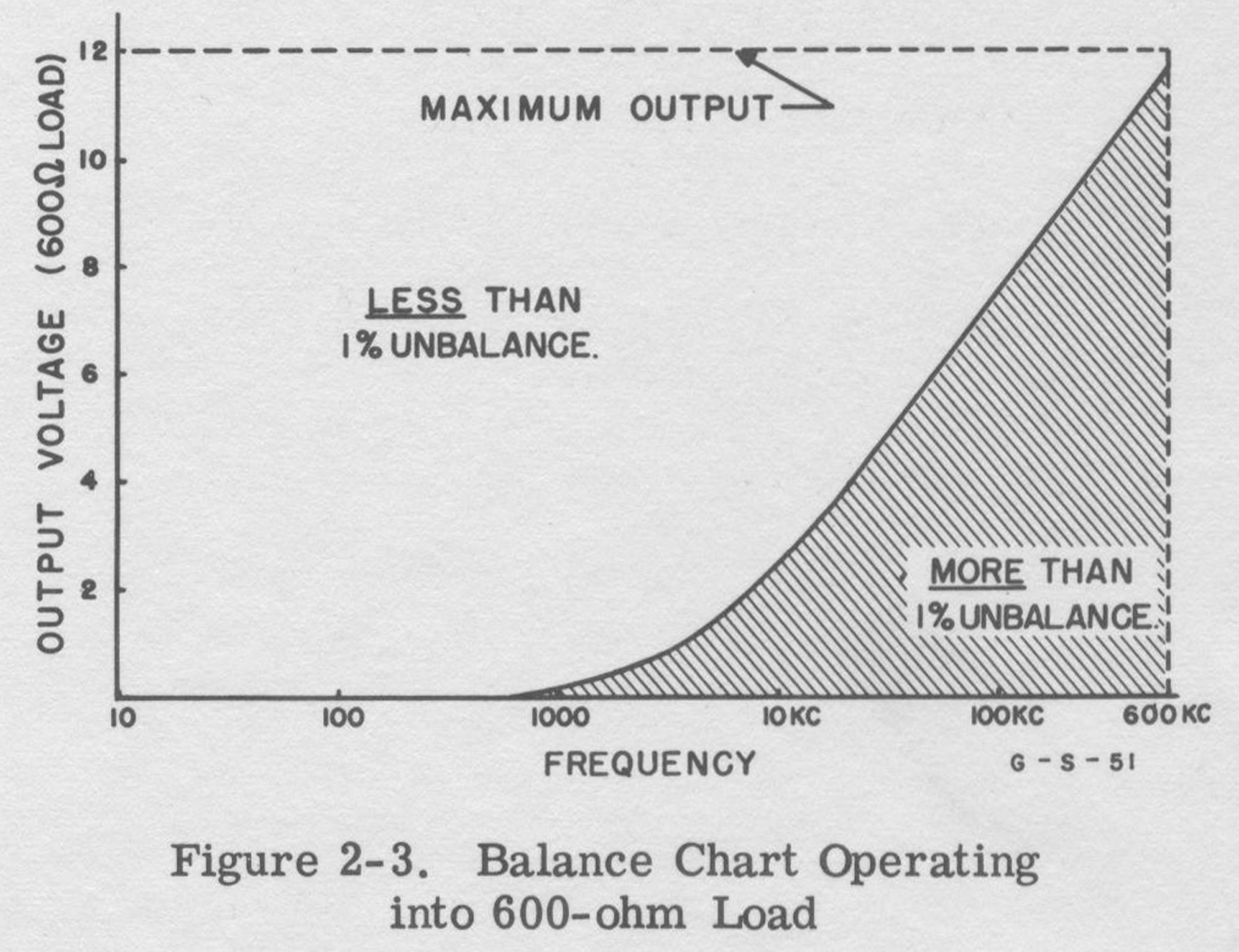 SEZIONE III
SEZIONE III
FUNZIONAMENTO
3.1 Generalità
L’oscillatore a larga banda mod. 200CD impiega un circuito oscillatorio bilanciato in push-pull, da cui l’uscita è presa direttamente, evitando così le complicazioni e le possibili distorsioni che servirebbero dall’impiego di un amplificatore separatore. La reazione del carico sull’oscillatore è eliminata con l’ausilio di uno stadio di uscita [ad (N.d.R.)] impedenza zero di [sorgente(N.d.R.)]. Questo montaggio da per risultato un circuito semplice e privo di disturbi, a bassa distorsione e alta stabilità sull’intera gamma di frequenza.
Funzionalmente, i circuiti dell’oscillatore comprendono un ponte per il controllo della frequenza con amplificatore bilanciato in controfase che costituisce il circuito oscillatorio, uno stadio di uscita predisponi bile per funzionamento bilanciato o sbilanciato e una sezione per l’alimentazione. Queste diverse unità sono riportate nello schema a blocchi di fig. 3.1 e in quello elettrico generale.
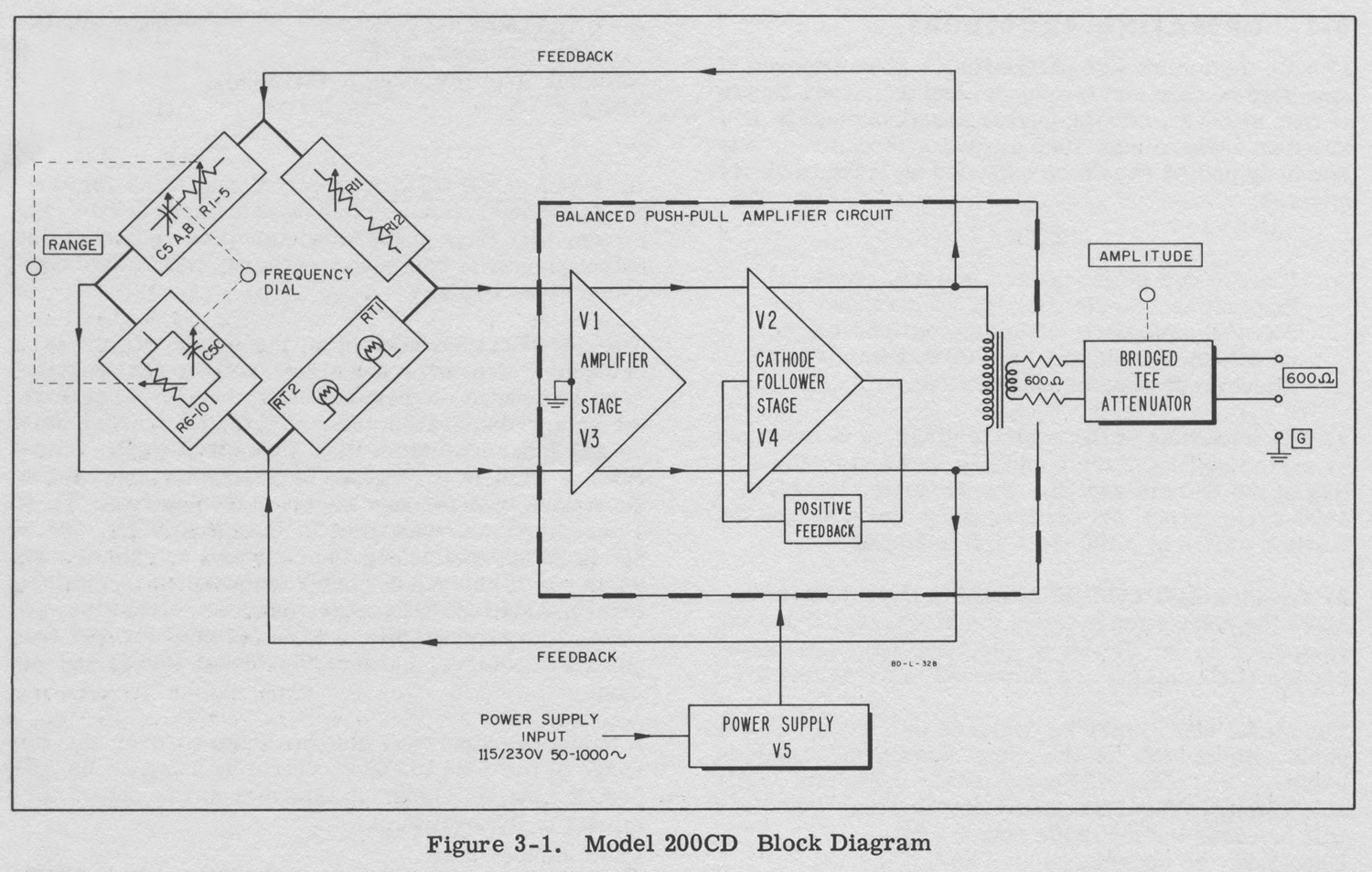
Fig 3.1 Schema a blocchi dell’oscillatore 200CD
Range switch = commutatore di portata
Frequency dial = Quadrante delle frequenze
Balanced …. Circuit = Amplificatore in push-pull bilanciato
Power supply= Alimentazione
Feedback = Reazione
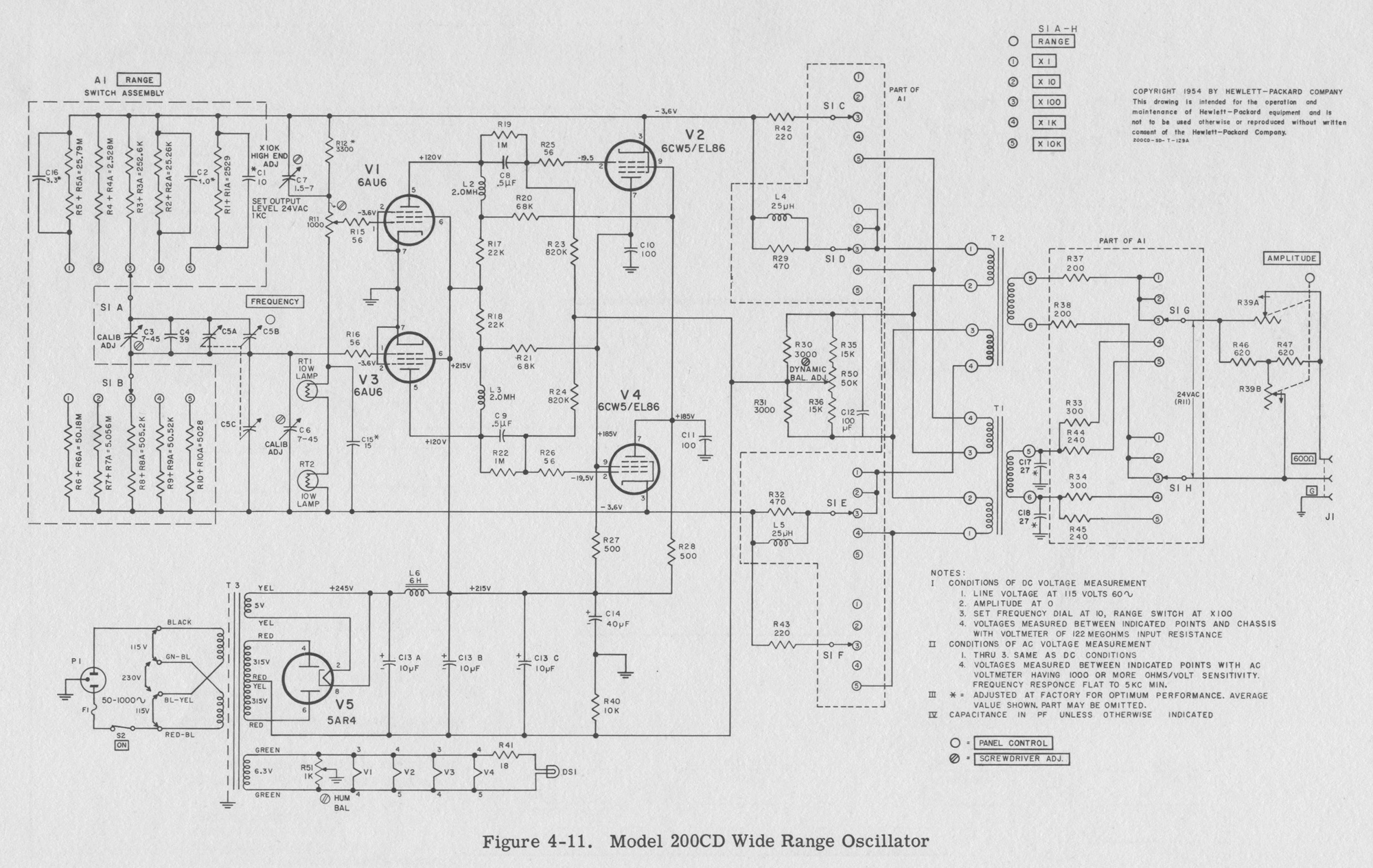
3.2 Ponte per il controllo della frequenza
Il circuito per il controllo della frequenza è montato a ponte simmetrico verso massa. Senza alcuna connessione con la massa a nessun capo del ponte, la stabilità della calibrazione è assicurata poiché qualsiasi capacità distribuita o concatenamento con la massa presente ai terminali di uscita del ponte non shuntano né il ramo per il controllo della frequenza né quello per la stabilizzazione dell’ampiezza. I componenti per il controllo della frequenza (rete RC comandata dal commutatore di portata e dalla manopola per il movimento del quadrante) comprendono due rami del ponte, mentre quelli per la stabilizzazione dell’ampiezza (un partitore di tensione che include una resistenza a sensibilità termica) sono montati negli altri due rami. L’ampiezza è stabilizzata ad un livello tale da far lavorare le valvole amplificatrici prevalentemente sulla porzione lineare delle loro caratteristiche, la qual cosa, insieme alla elevata controreazione alle frequenze armoniche, produce una oscillazione perfettamente sinusoidale.
Il ponte è alimentato dalla tensione bilanciata sviluppata ai catodi della V2 e della V4 in uscita all’amplificatore bilanciato. L’uscita del ramo di controllo della frequenza del ponte è portata alla griglia della V3, e l’uscita di quello per la stabilizzazione dell’ampiezza alla griglia della V1. La possibilità di utilizzare insieme ad un amplificatore le caratteristiche di tensione e di fase in funzione della frequenza in una rete RC, per ottenere un oscillatore ad alta stabilità ed eccellente forma d’onda è ampiamente tracciata in molti testi, quale ad esempio “Electronic Measurements” di Termann e Pettit.
La resistenza variabile R11 serve alla regolazione del ramo per la stabilizzazione dell’ampiezza del ponte in caso di sostituzione delle lampade R13 o R14 che comporta una variazione nel livello di tensione mandato ai terminali di uscita.
I condensatori variabili C3, C6 e C7 sono regolati in fabbrica per il punto ottimo di calibrazione e costanza di ampiezza con la frequenza. Non sono richiesti ulteriori interventi su questo componente eccetto in caso di sostituzione del commutatore RANGE.
3.3 Amplificatore
L’amplificatore-oscillatore è costituito da un circuito in push-pull bilanciato comprendente uno stadio amplificatore di tensione (V1 e V3) e uno speciale stadio inseguitore catodico (V2 e V4). In questo stadio è usata una controreazione incrociata per provvedere una impedenza di uscita essenzialmente zero vista fra catodo e catodo e il carico. Il percorso della controreazione va dall’anodo della V2 alle griglie controllo e schermo della V4, e dall’anodo della V4 alle griglie controllo e schermo della V2. Il grado di reazione positiva è funzione del carico e aumenta col diminuire dell’impedenza di questo, [tendendo (N.d.R.)] quindi a mantenere costante l’uscita per qualsiasi impedenza di carico. L’auto-oscillazione dell’amplificatore è evitata mediante la scelta di un appropriato valore di resistenza nel circuito di reazione e controllando le impedenze di catodo e di placca sull’intera gamma di frequenza dell’oscillatore. Lo stadio di uscita è protetto contro un eventuale corto circuito fra i catodi da alcune resistenze in serie con i secondari del trasformatore. Codeste resistenze presentano all’oscillatore una impedenza di 600 ohm verso l’attenuatore.
Lo stadio di uscita ha una sufficiente capacità da evitare sovraccarichi anche se i terminali di uscita sono in corto circuito. I condensatori C10, C11 e C12 e le bobine 12 e 13 fanno parte del circuito di compensazione di frequenza.
L’uscita dall’inseguitore catodico restituisce la reazione al onte di controllo della frequenza e alimenta l’avvolgimento primario dei trasformatori d’uscita che accoppiano l’oscillatore al circuito d’uscita.
3.4 Circuito d’uscita
Il trasformatore di accoppiamento fornisce un isolamento tra i circuiti oscillatorio e di uscita e permette di poter avere una uscita bilanciata o sbilanciata. Poiché un trasformatore singolo funzionerebbe in modo adatto solo su una parte della banda coperta dall’apparecchio, è previsto un trasformatore doppio. I collegamenti fra l’inseguitore catodico V2 e V4 e il proprio trasformatore per la banda in uso sono effettuati con il commutatore RANGE. I secondari dei due trasformatori di accoppiamento alimentano un attenuatore a T convenzionale, la cui posizione è determinata dall’azione sul comando AMPLITUDE sul frontale. Girando questa manopola da destra verso sinistra, l’attenuazione introdotta dall’attenuatore aumenta. L’impedenza del generatore ai terminali di uscita è 600 ohm.
Con l’attenuatore predisposto per la minima attenuazione, il circuito di uscita è predisposto per il funzionamento bilanciato. L’attenuatore è progettato in modo che per frequenze fino a 10 kHz la capacità parassita e la resistenza di concatenamento causano uno sbilanciamento minore di 0,1%. Lo sbilanciamento a 600 kHz è ca. 1%.
Quando si desidera il funzionamento sbilanciato, bisogna collegare la massa a morsetto centrale di uscita e la terminazione per la connessione prelevata dal terminale 6 dei trasformatori di uscita T1 e T2. Il funzionamento non sarà regolare se la massa è connessa al lato del circuito che include l’attenuatore».
§§§
La sezione Manutenzione è stata omessa insieme ad altre parti. Di queste abbiamo riportato alcune figure che riteniamo interessanti.
Per consultare la versione in inglese scrivere “200CD” su Cerca.
Foto di Claudio Profumieri, elaborazioni e ricerche di Fabio Panfili.
Per ingrandire le immagini cliccare su di esse col tasto destro del mouse e scegliere tra le opzioni.
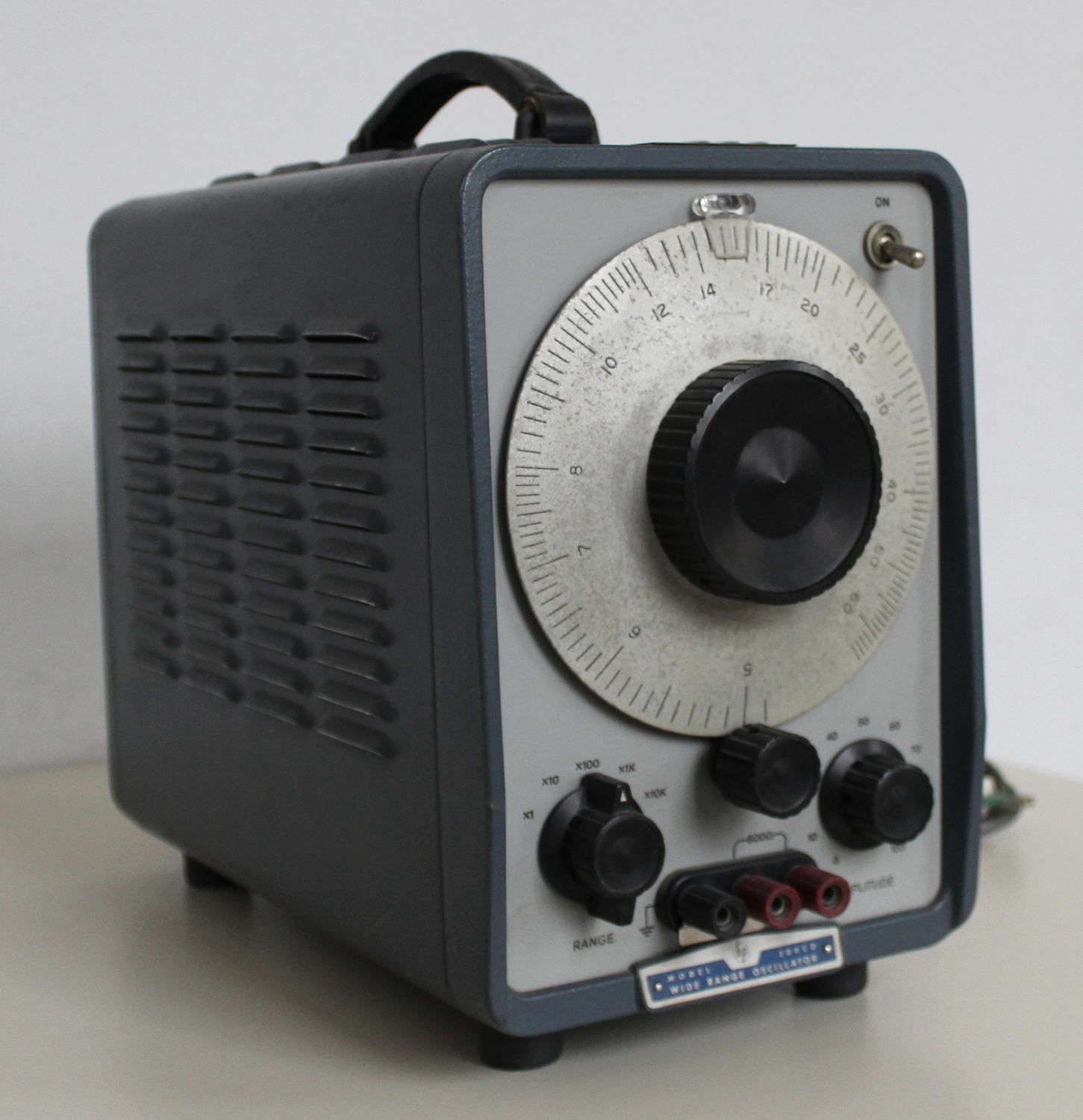
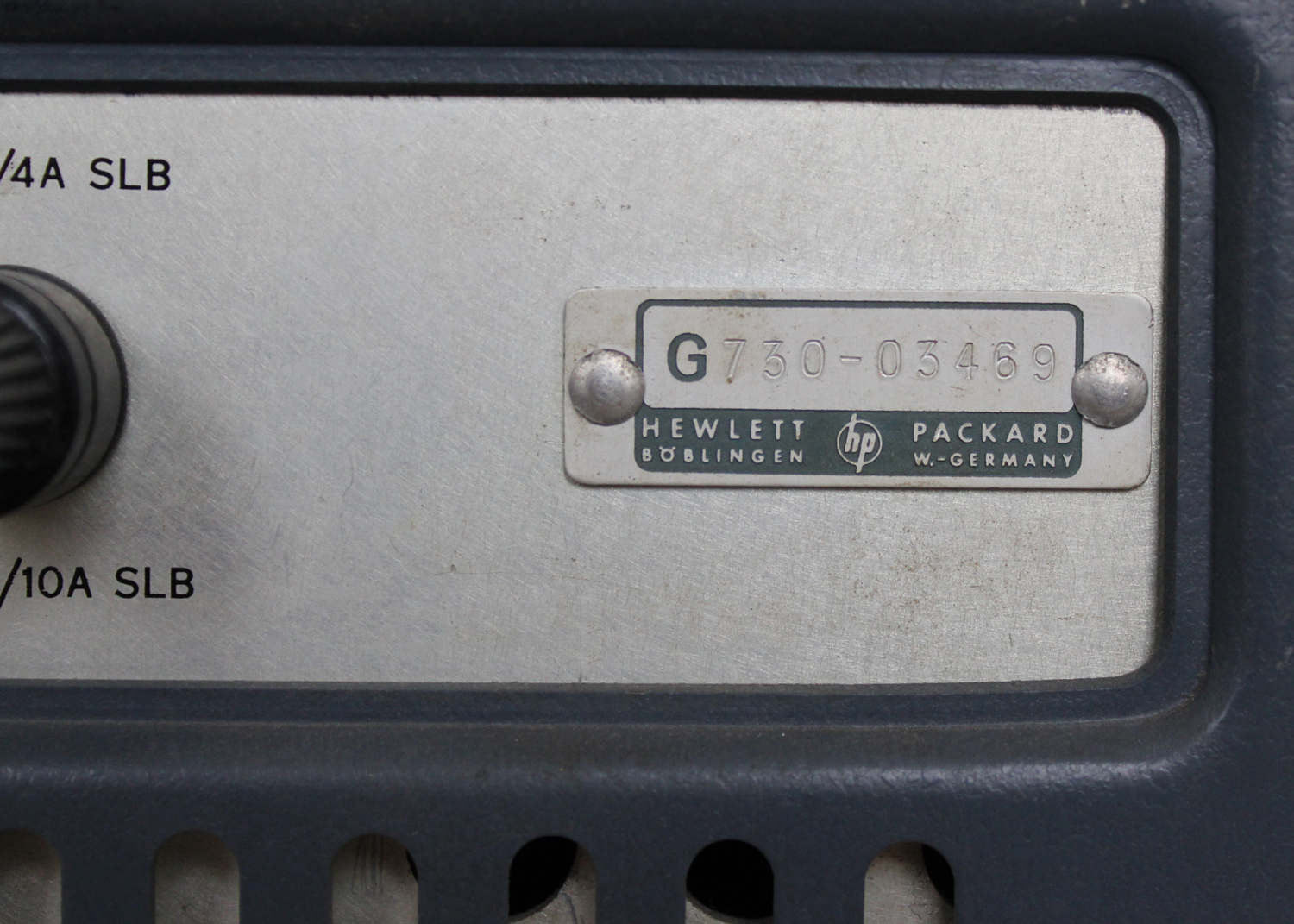
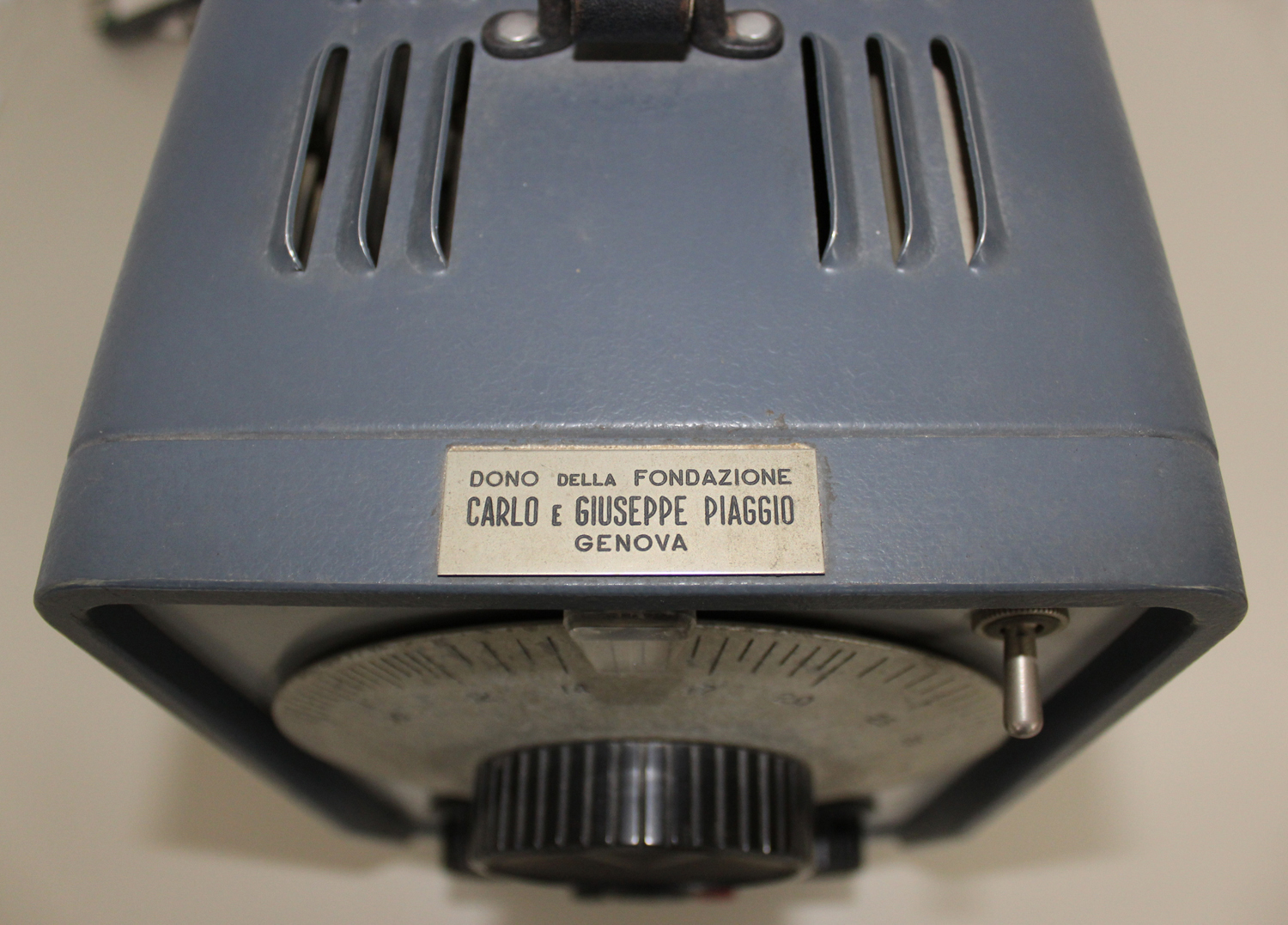

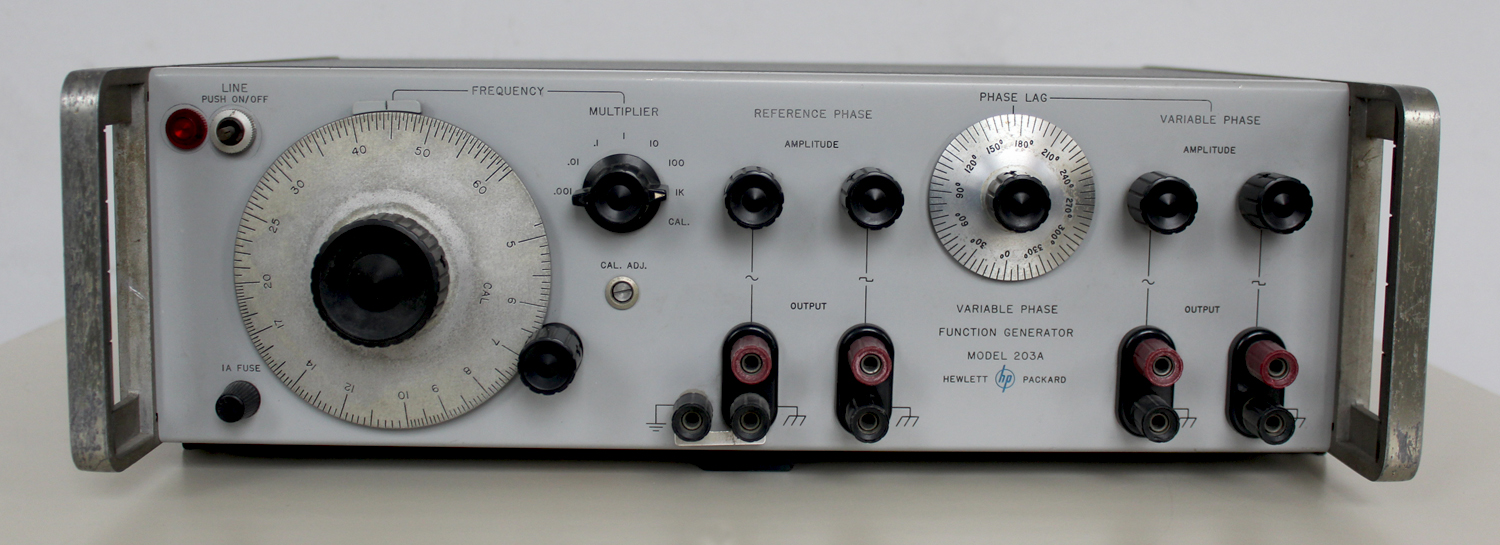
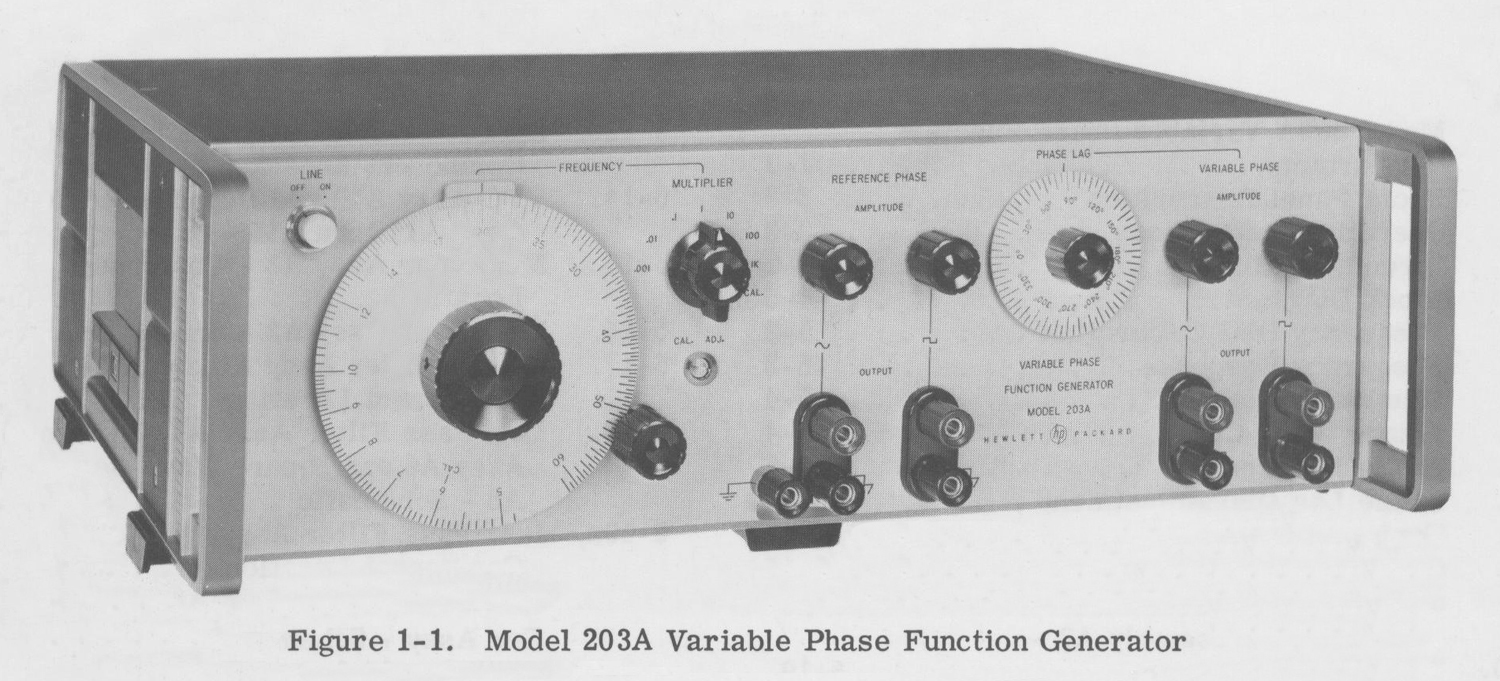
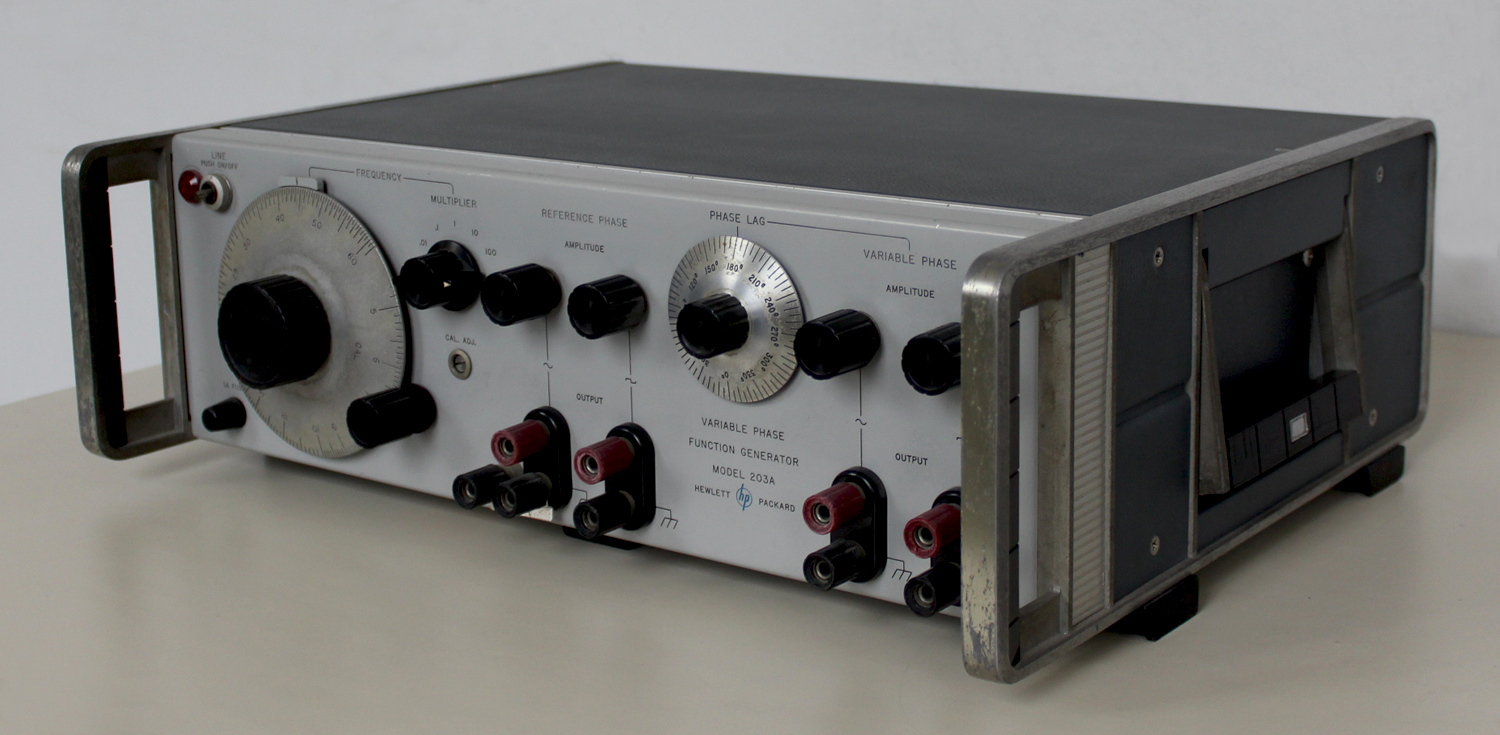
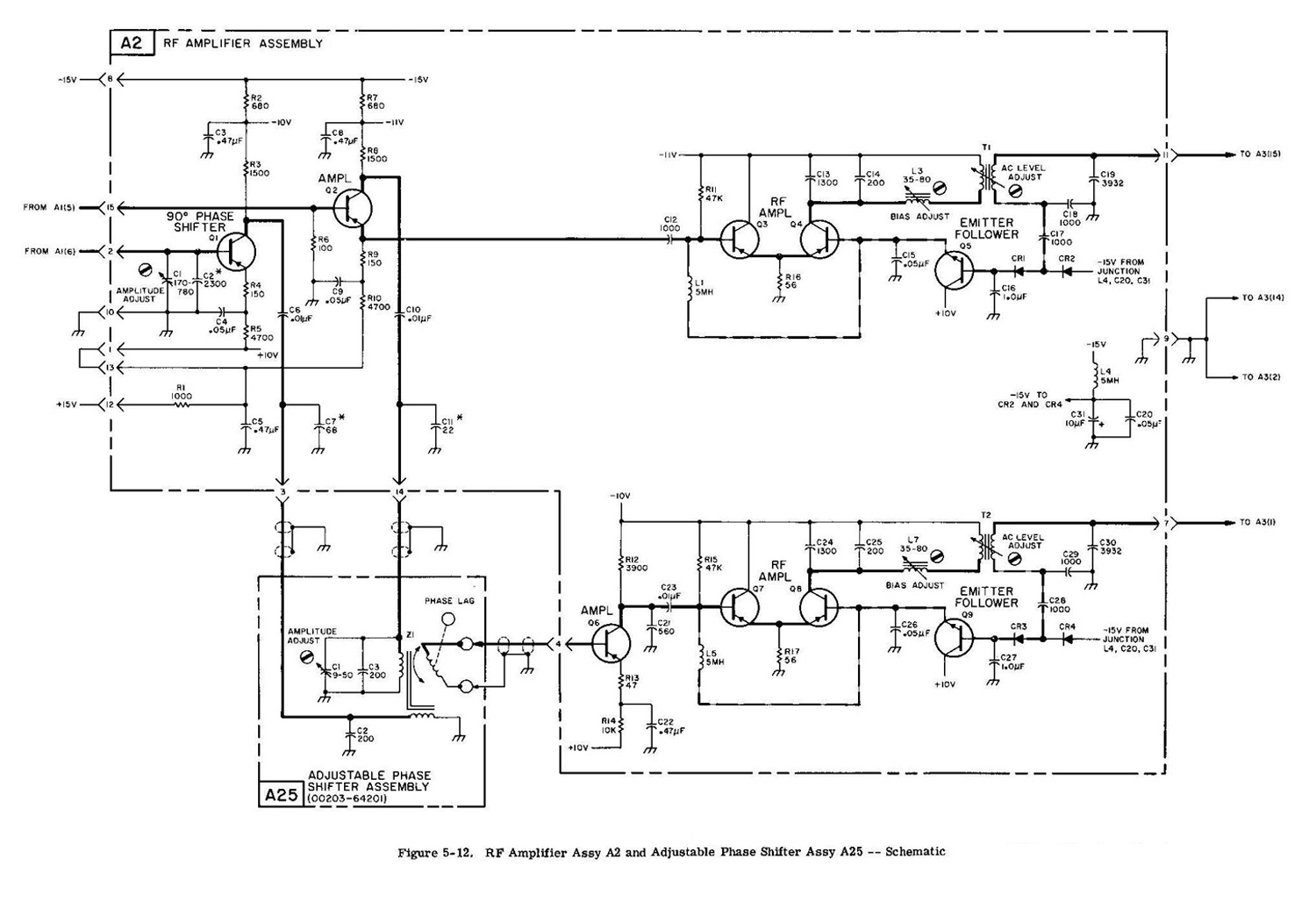
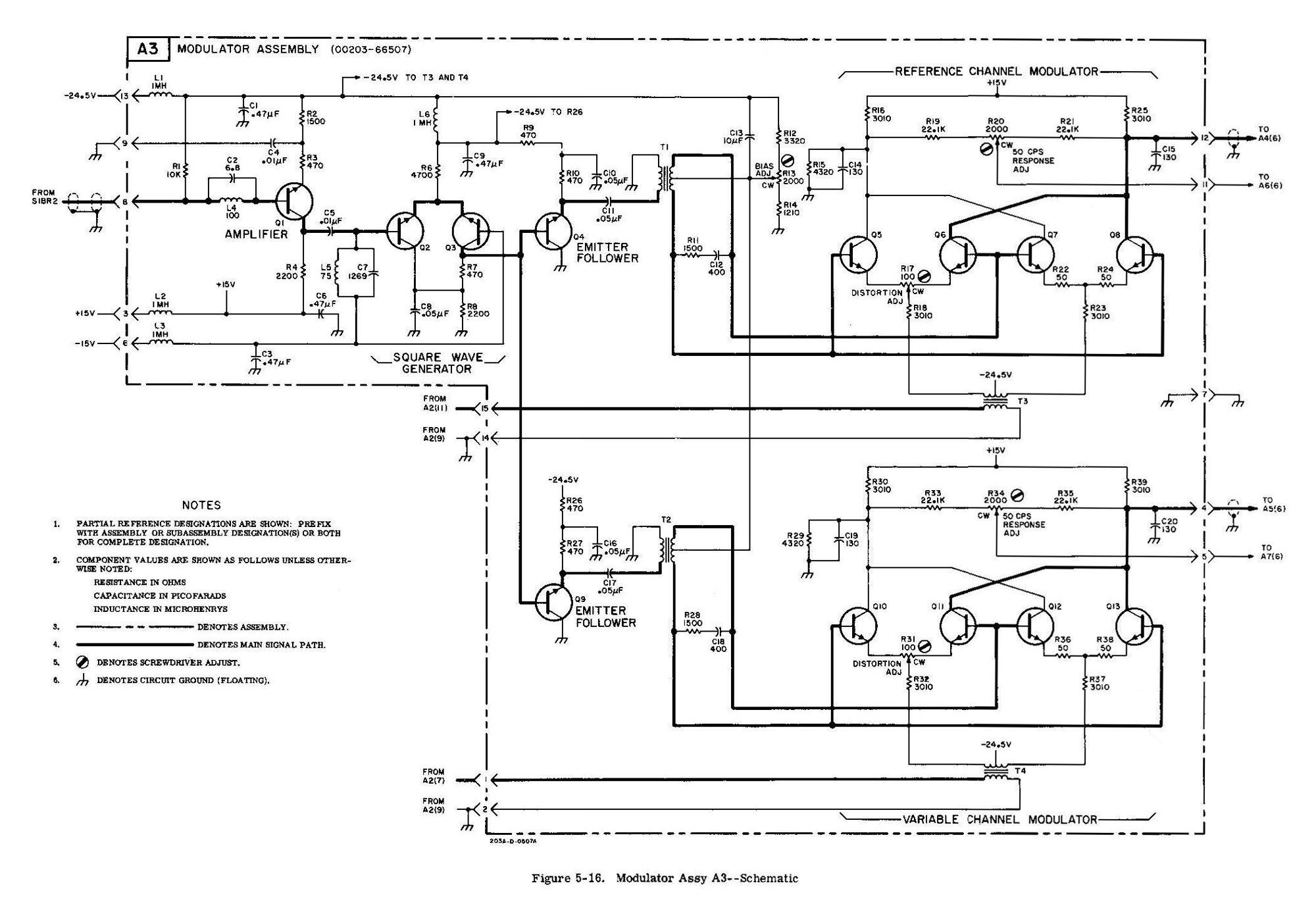
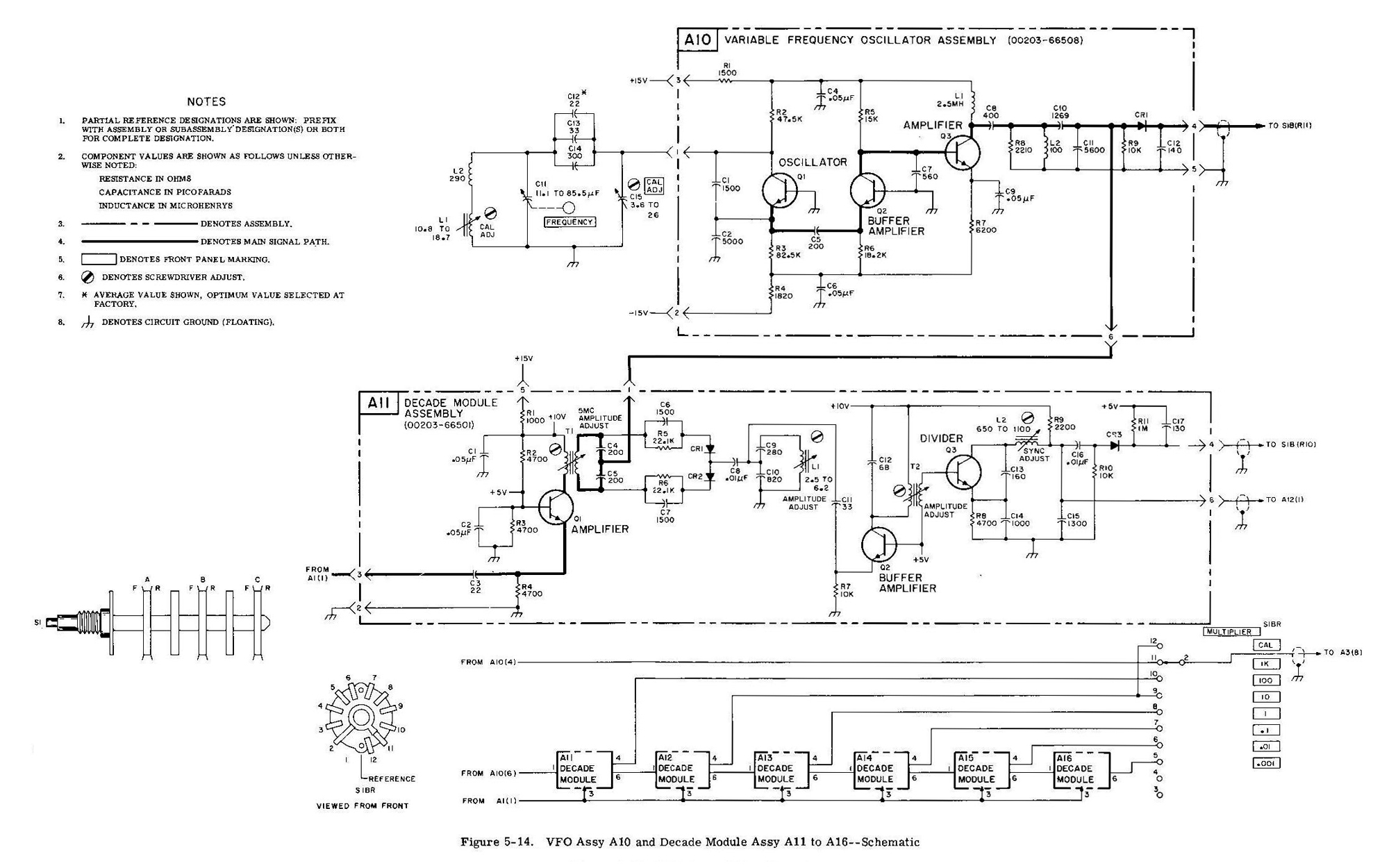
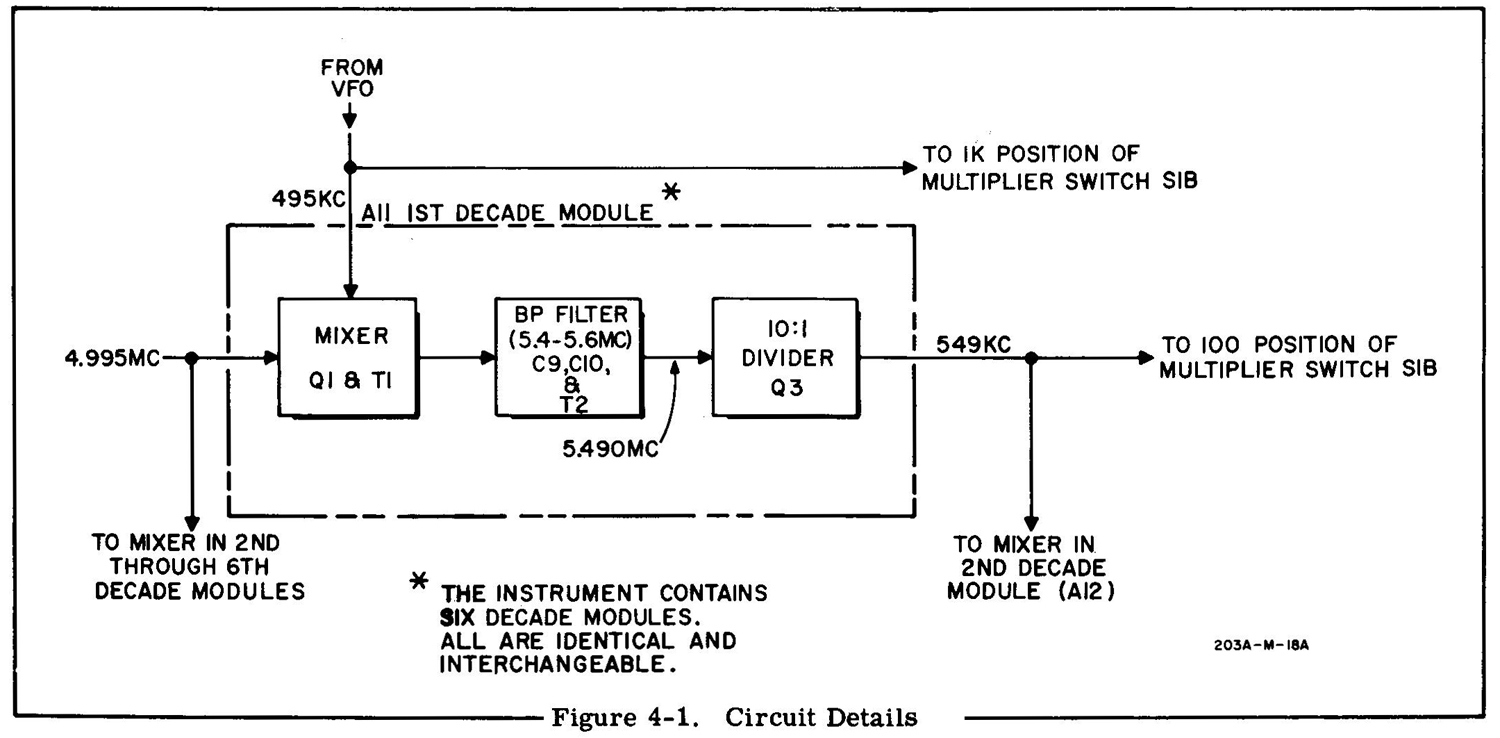
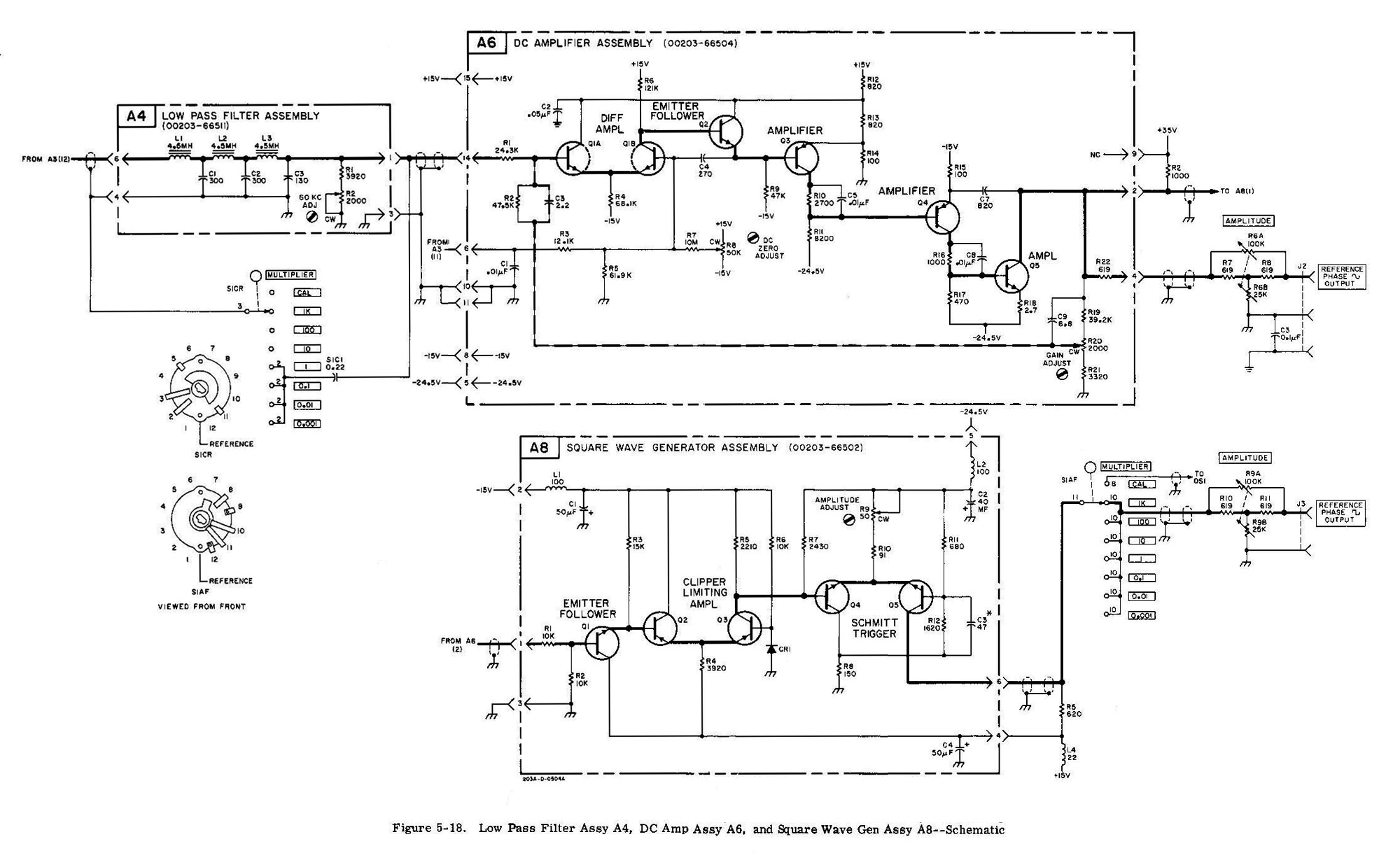
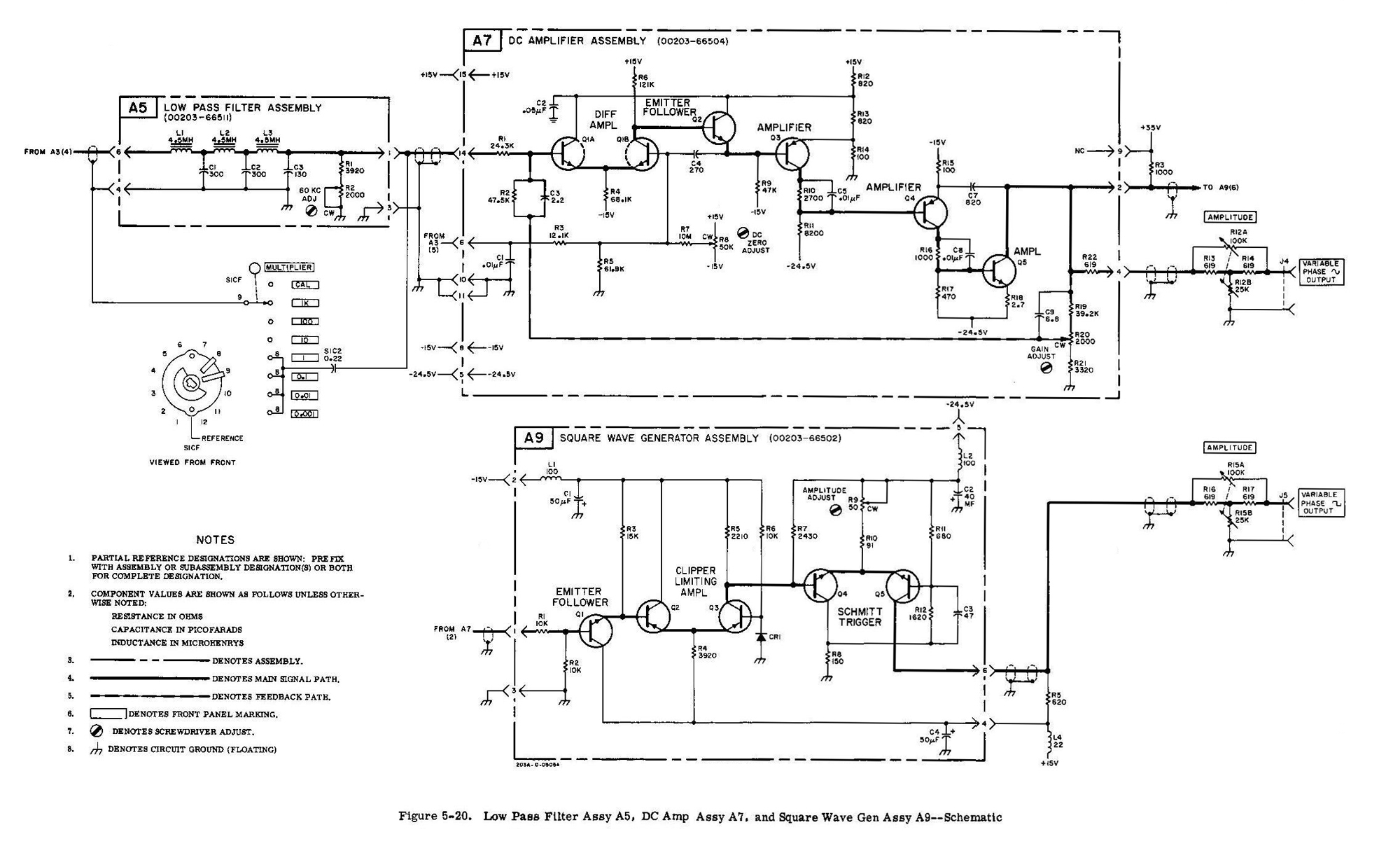
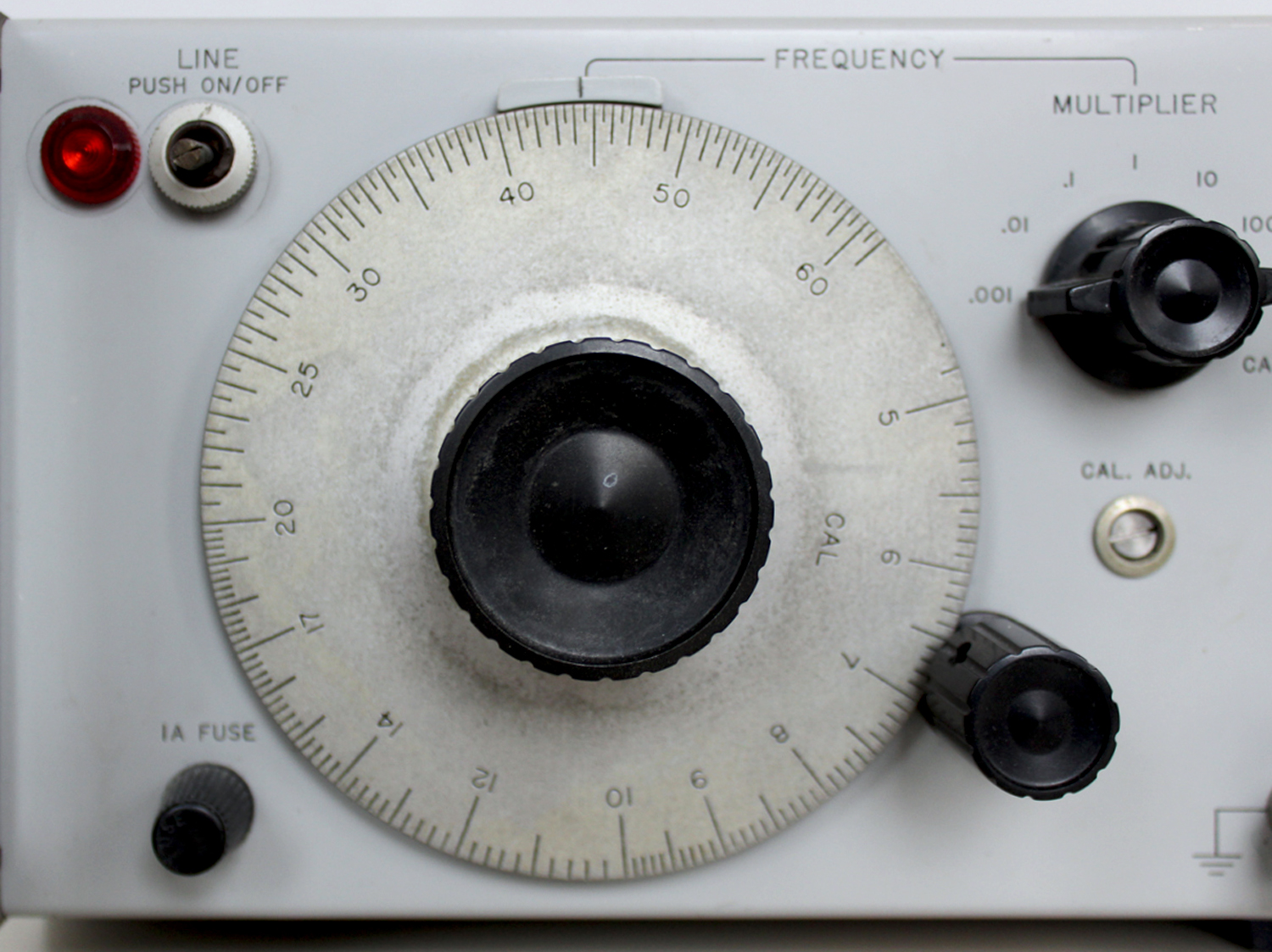
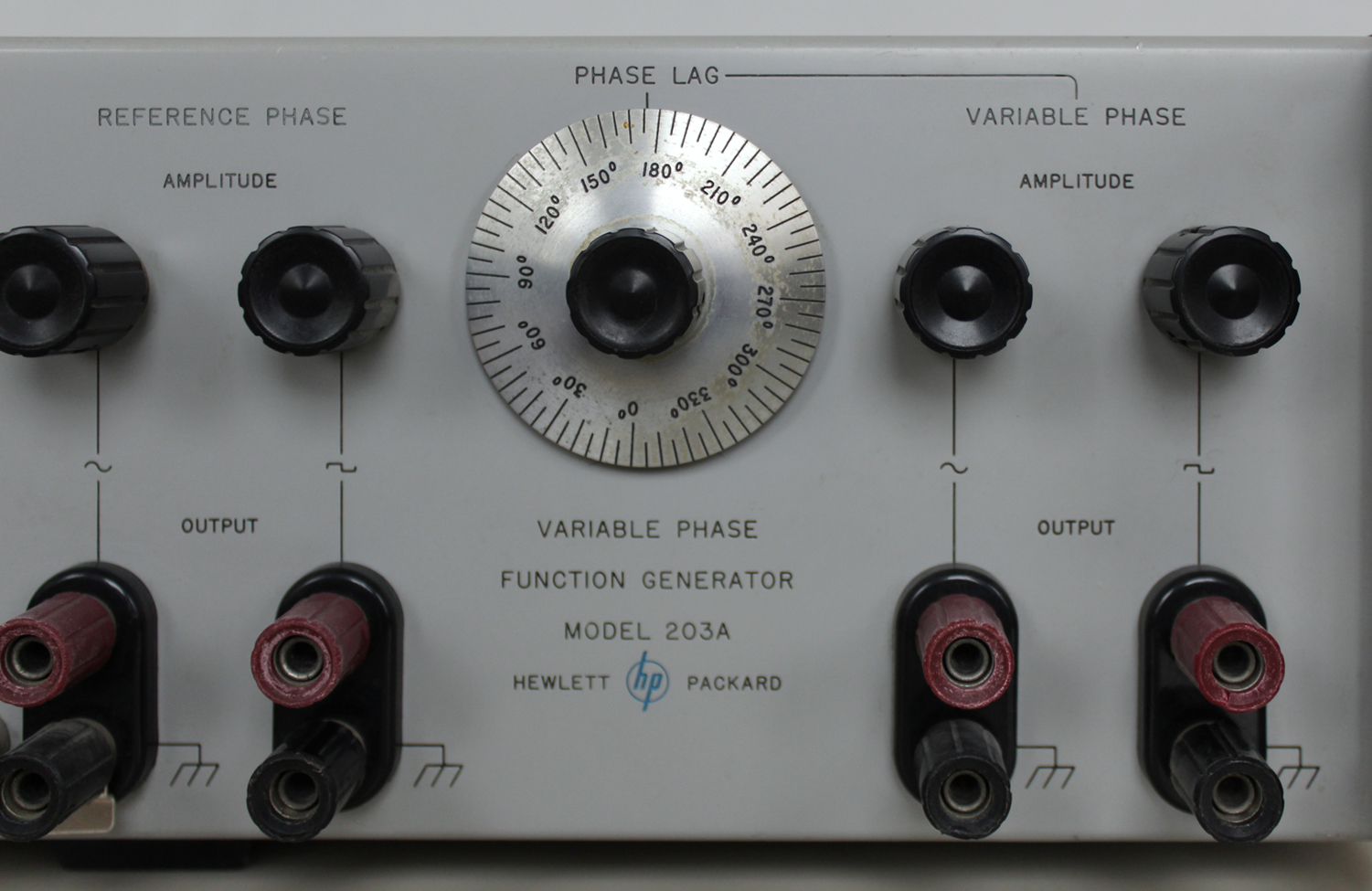
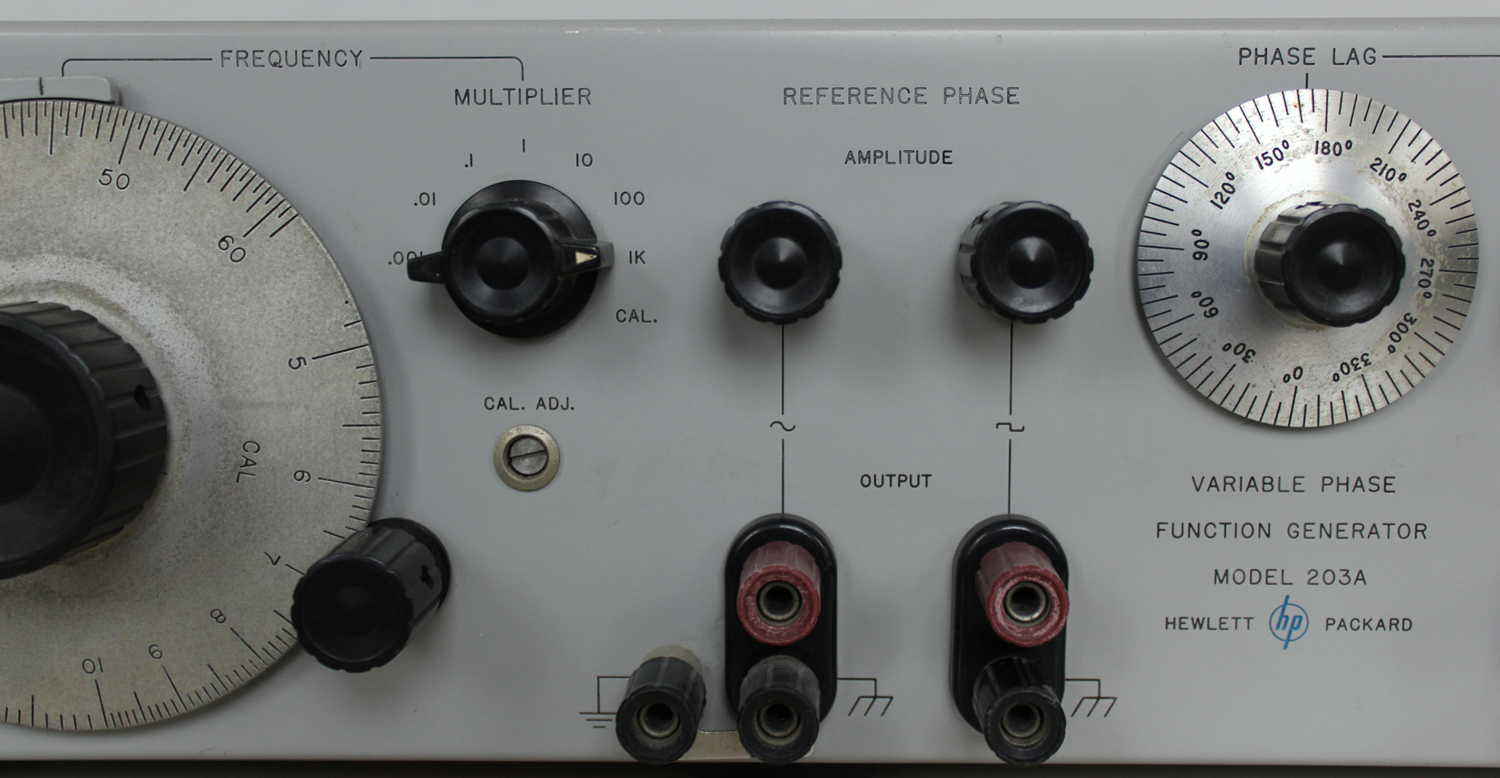
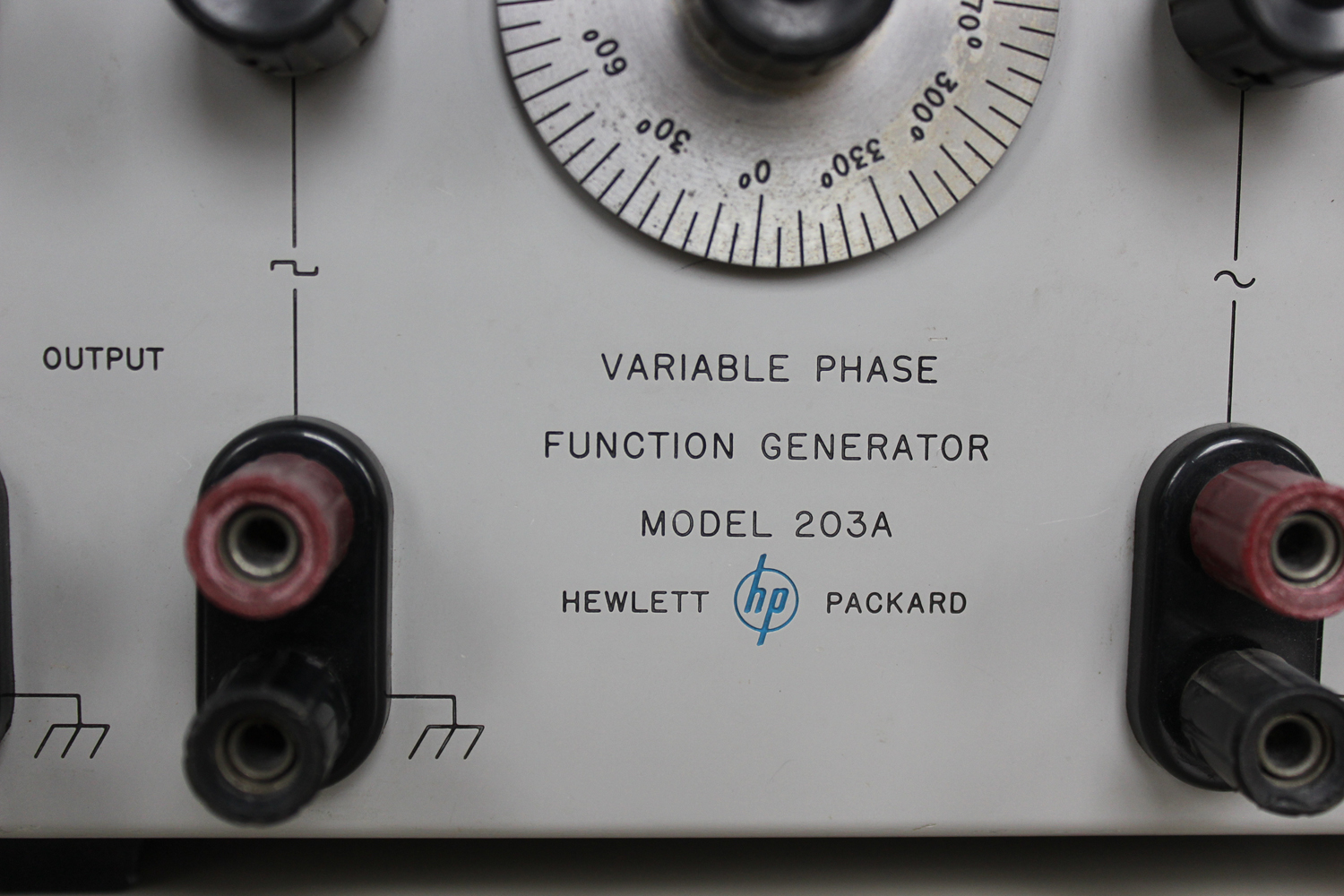
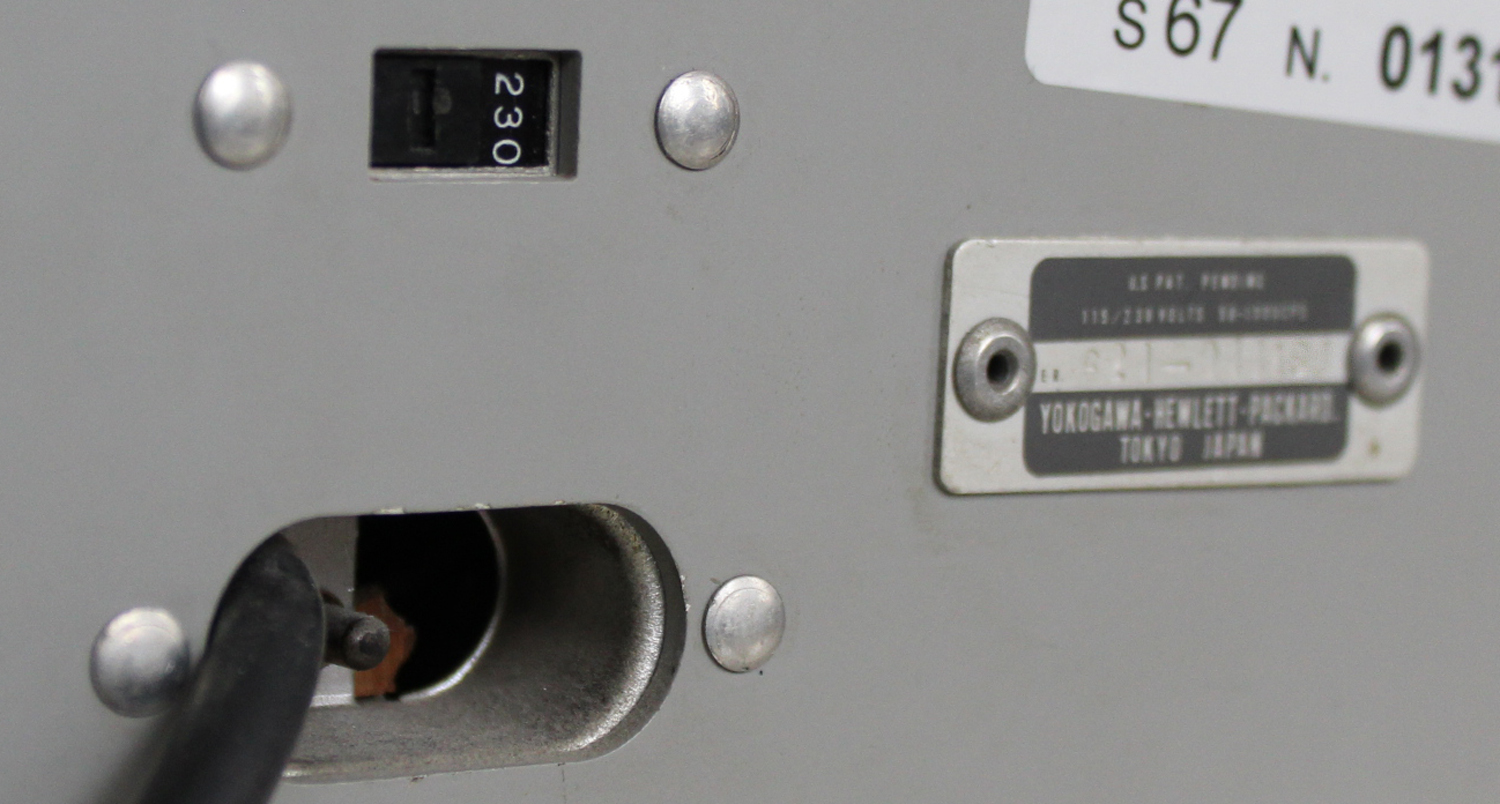
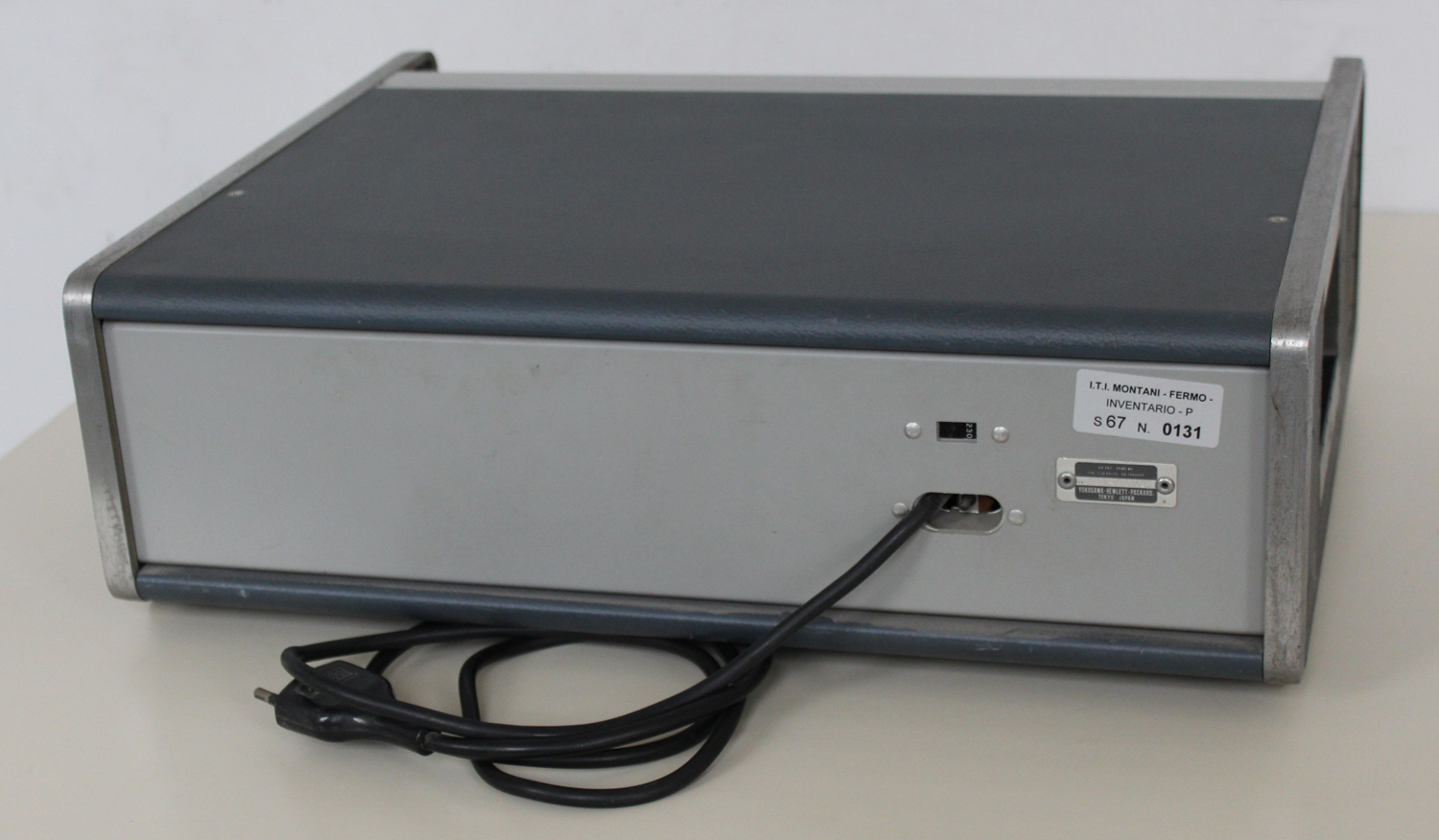
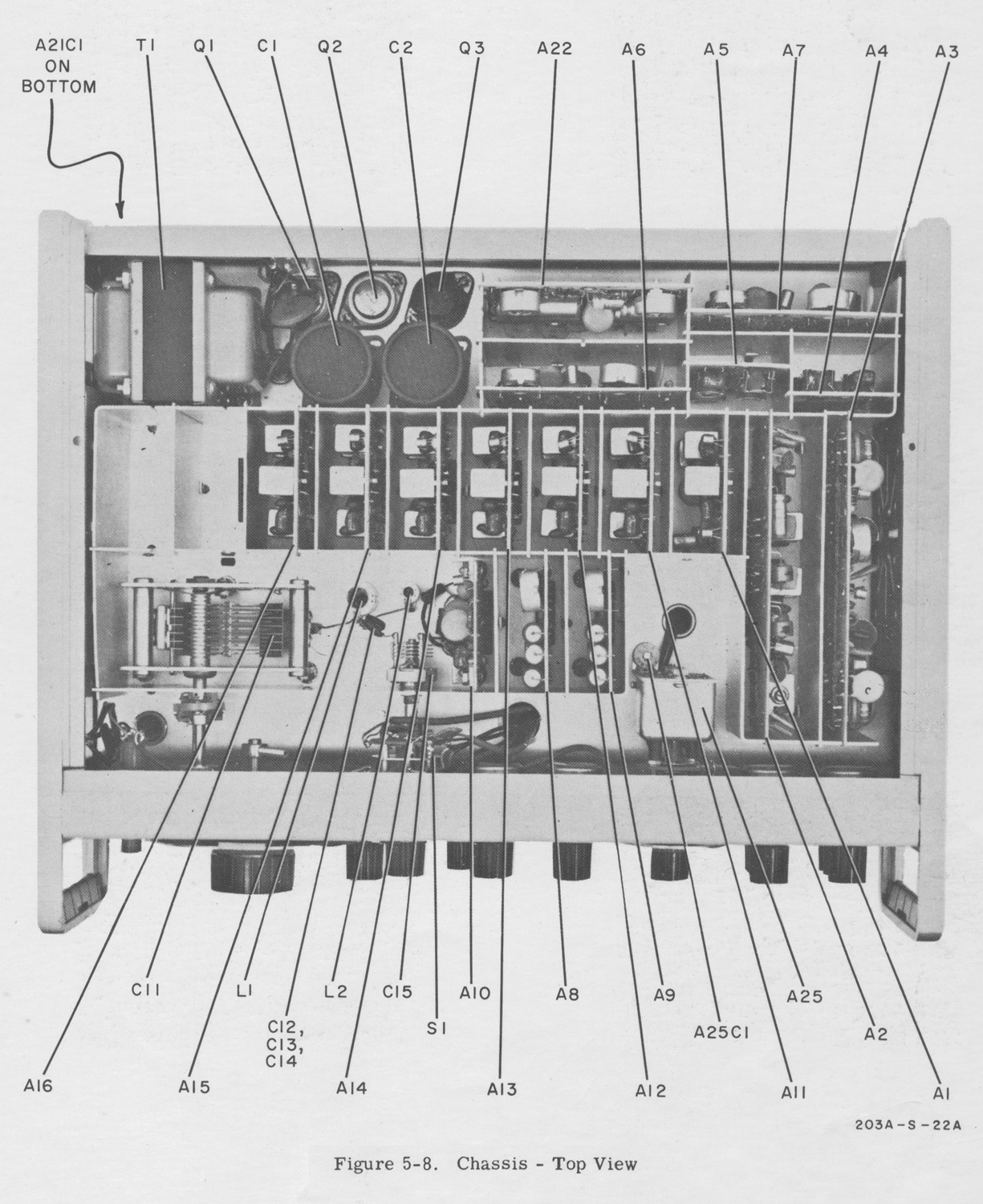
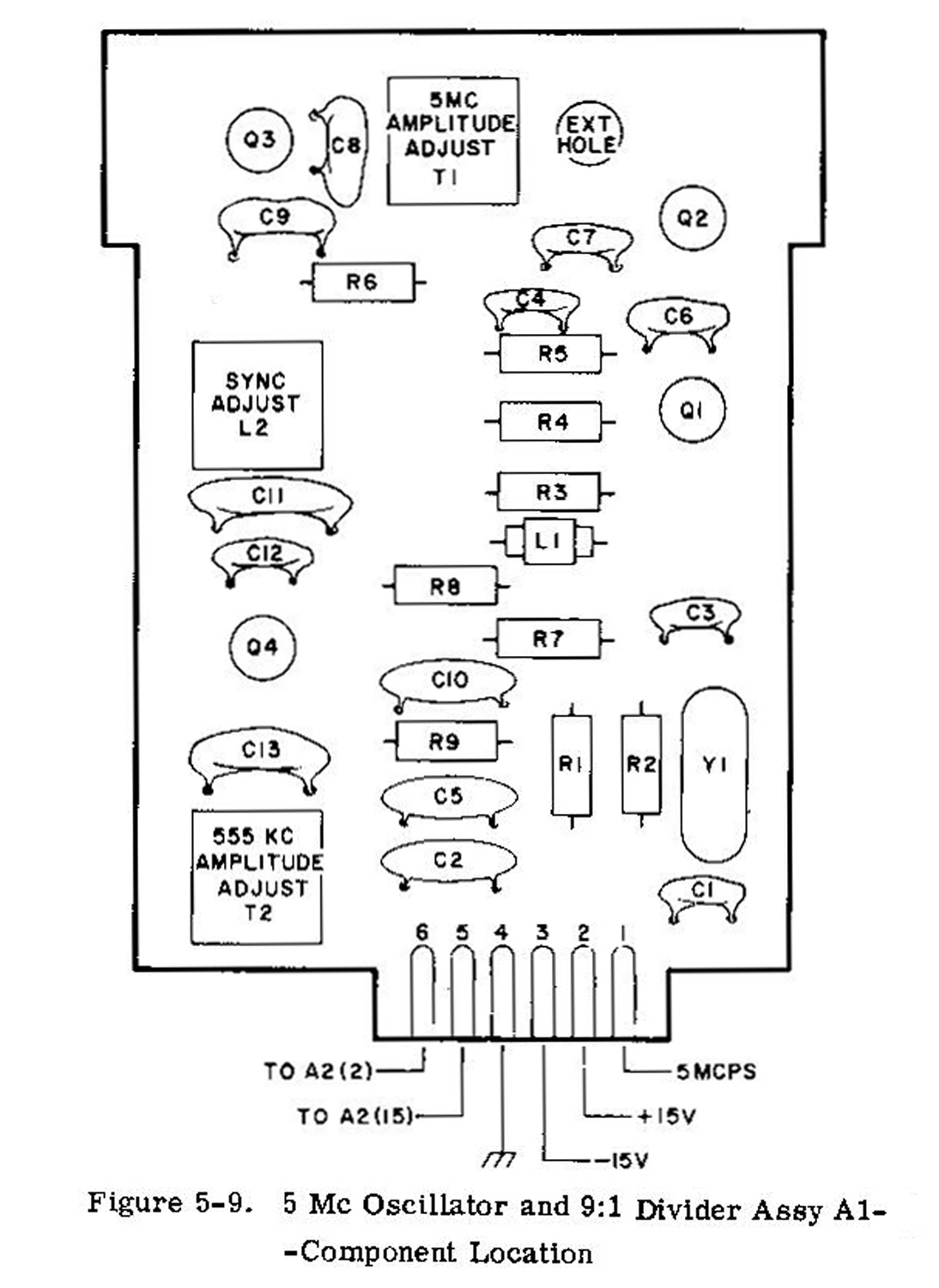
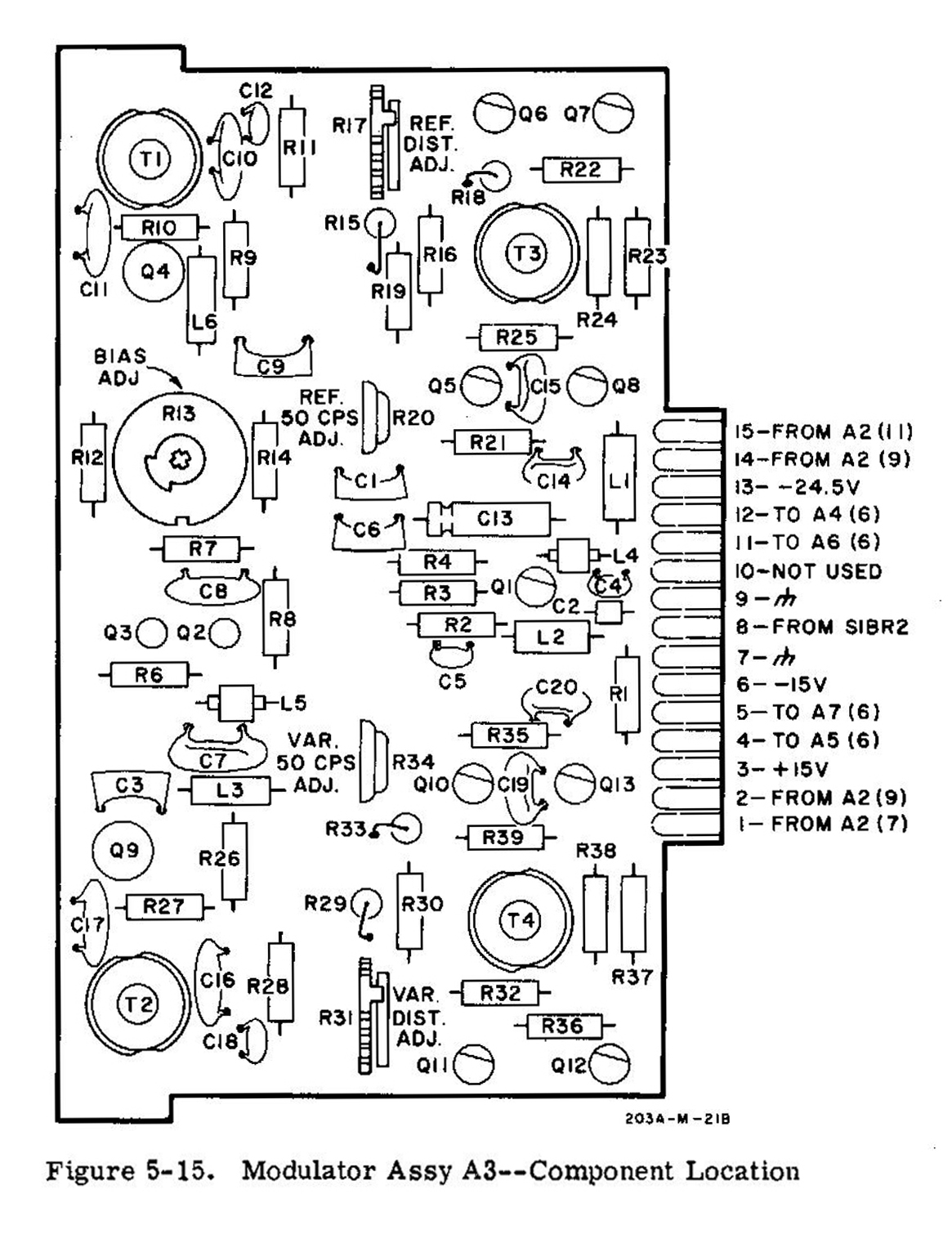
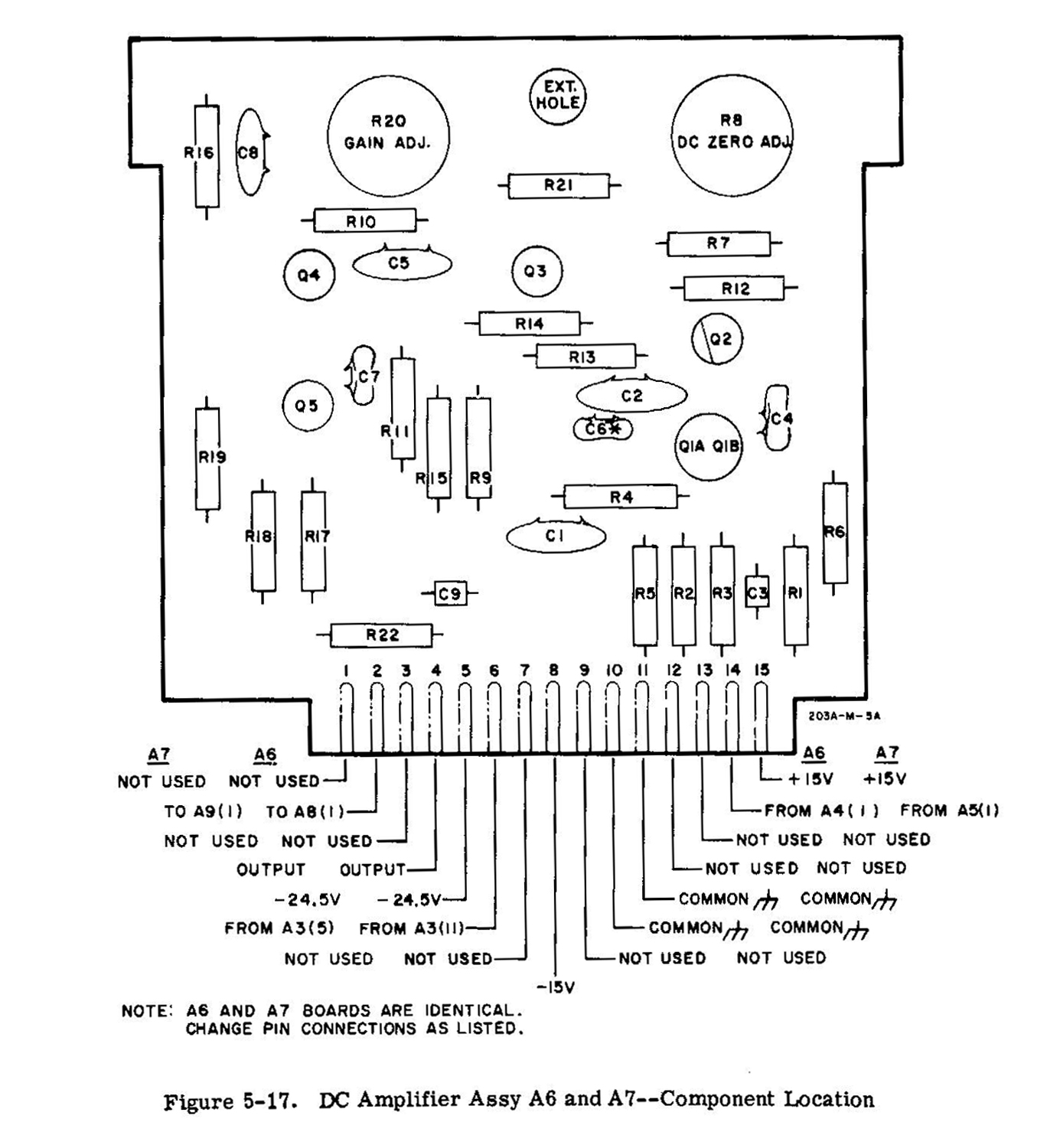
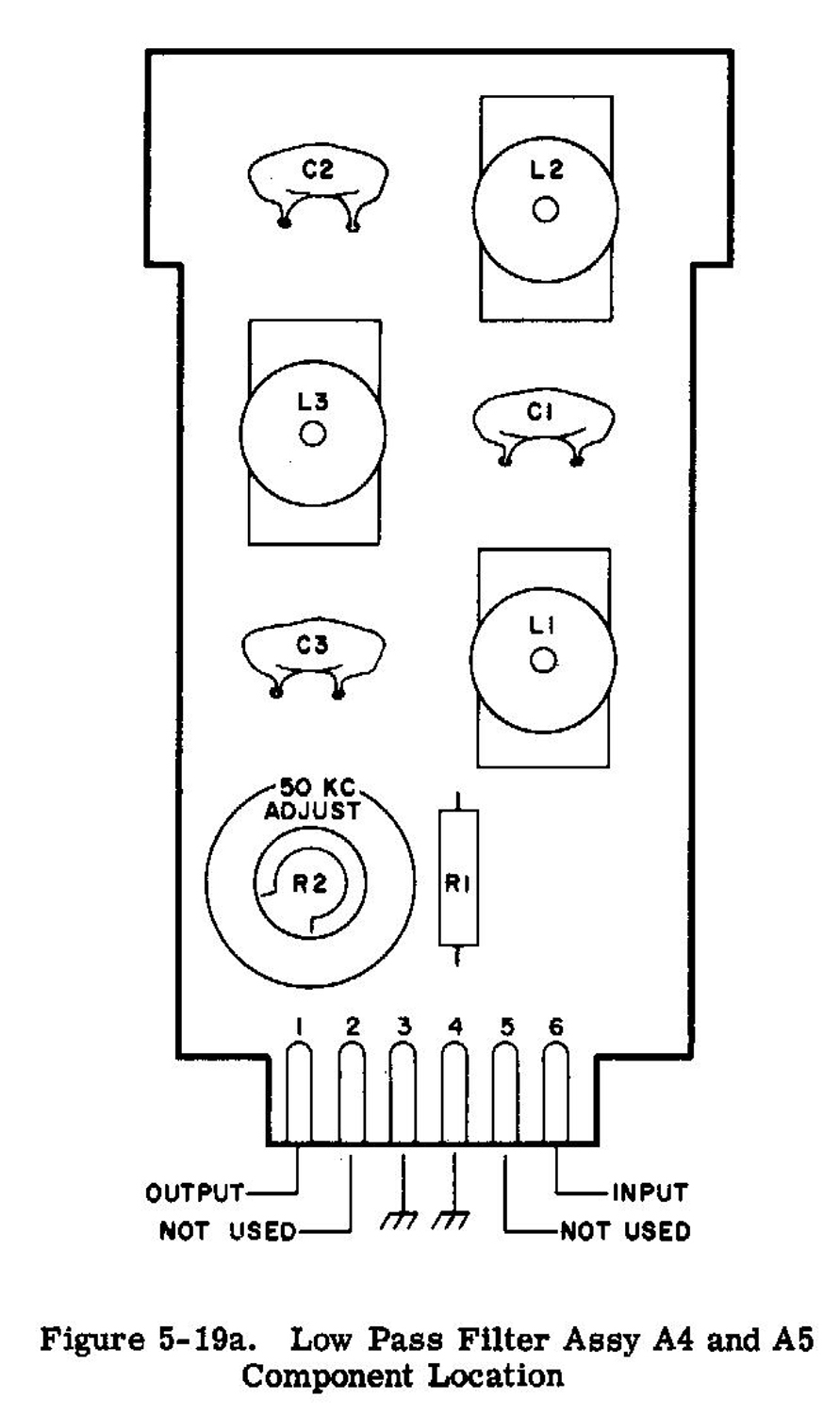
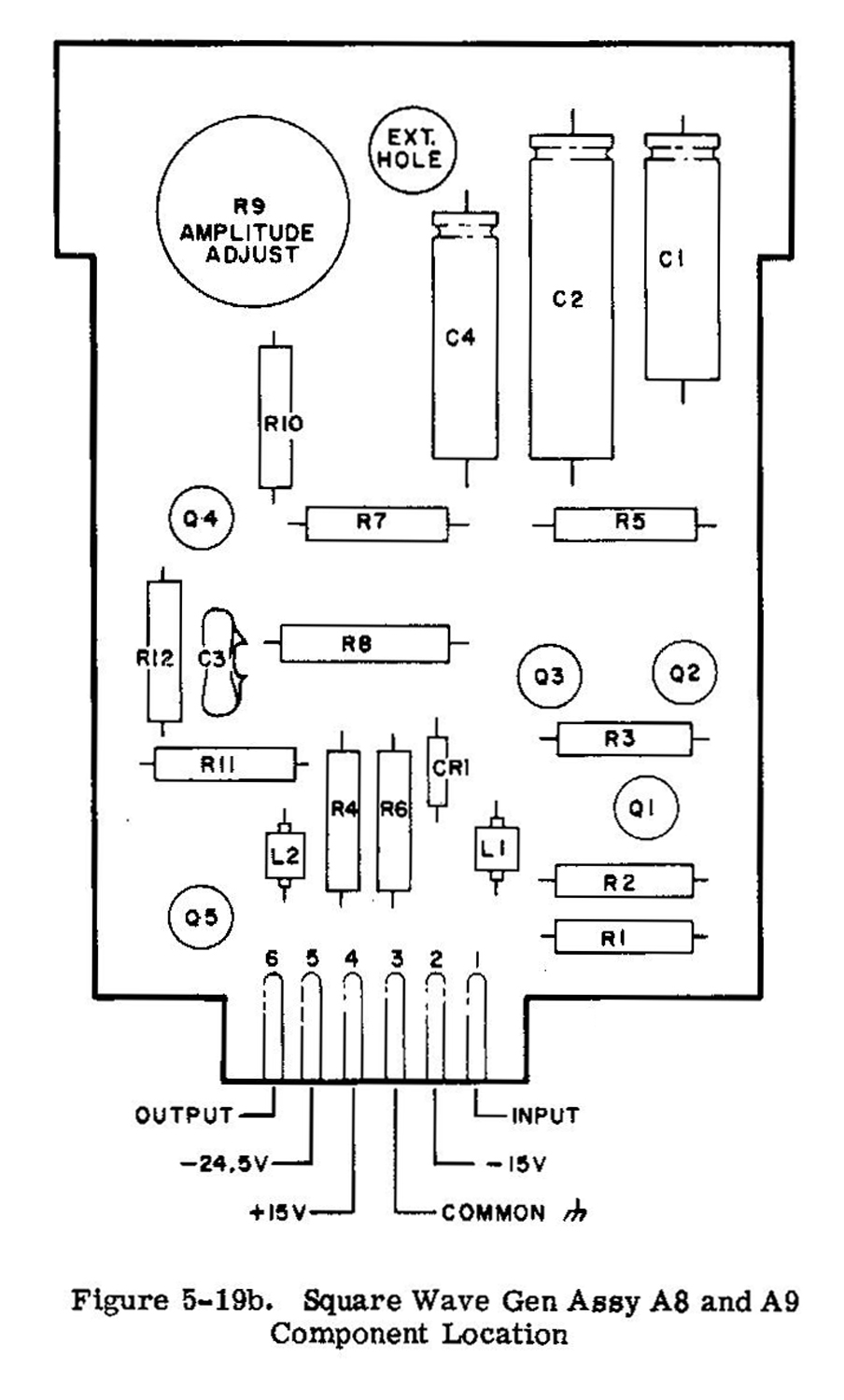
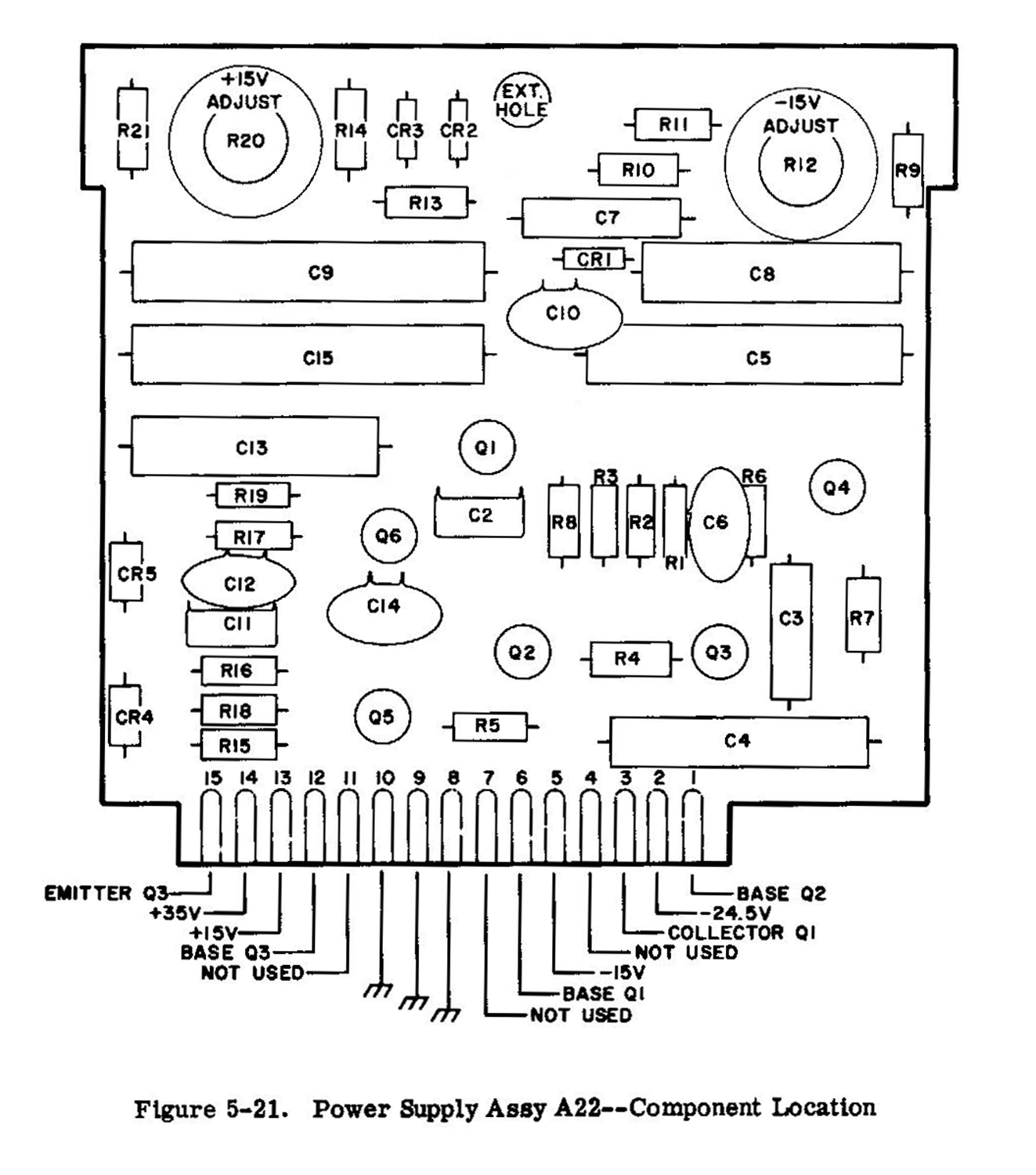
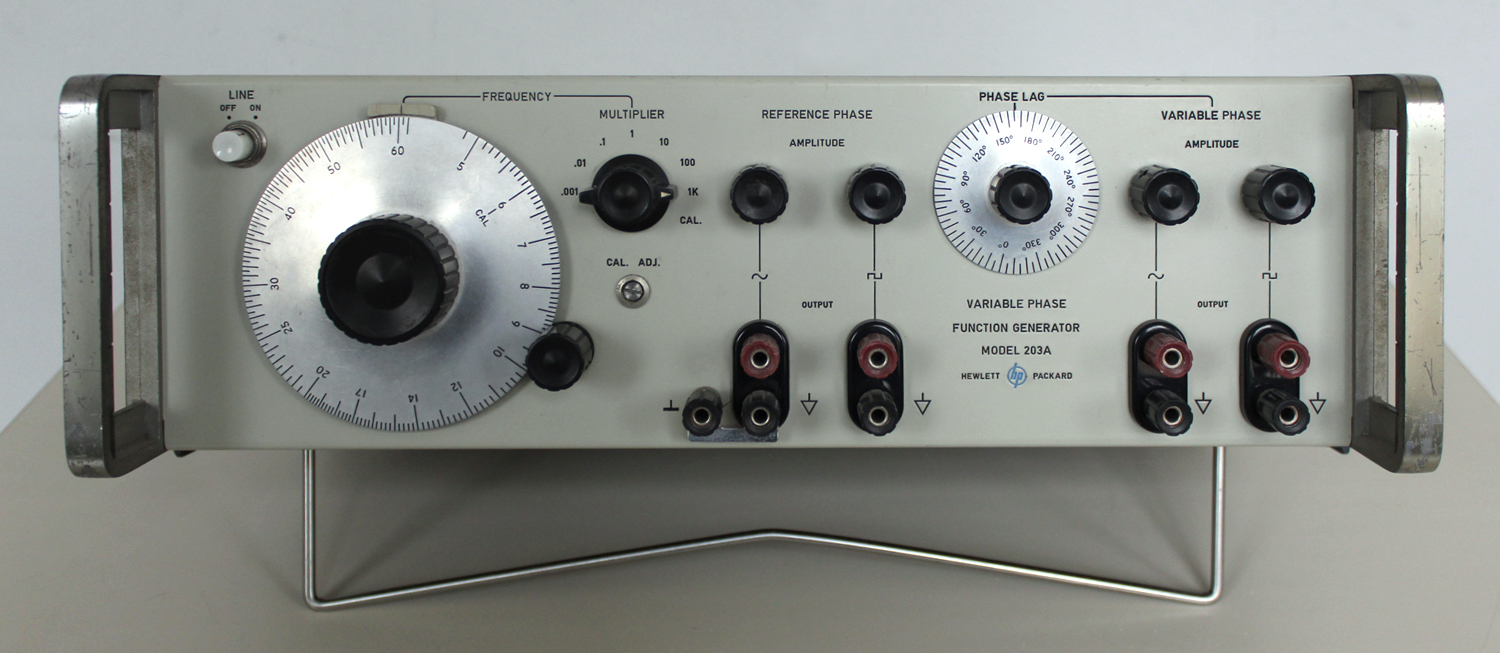
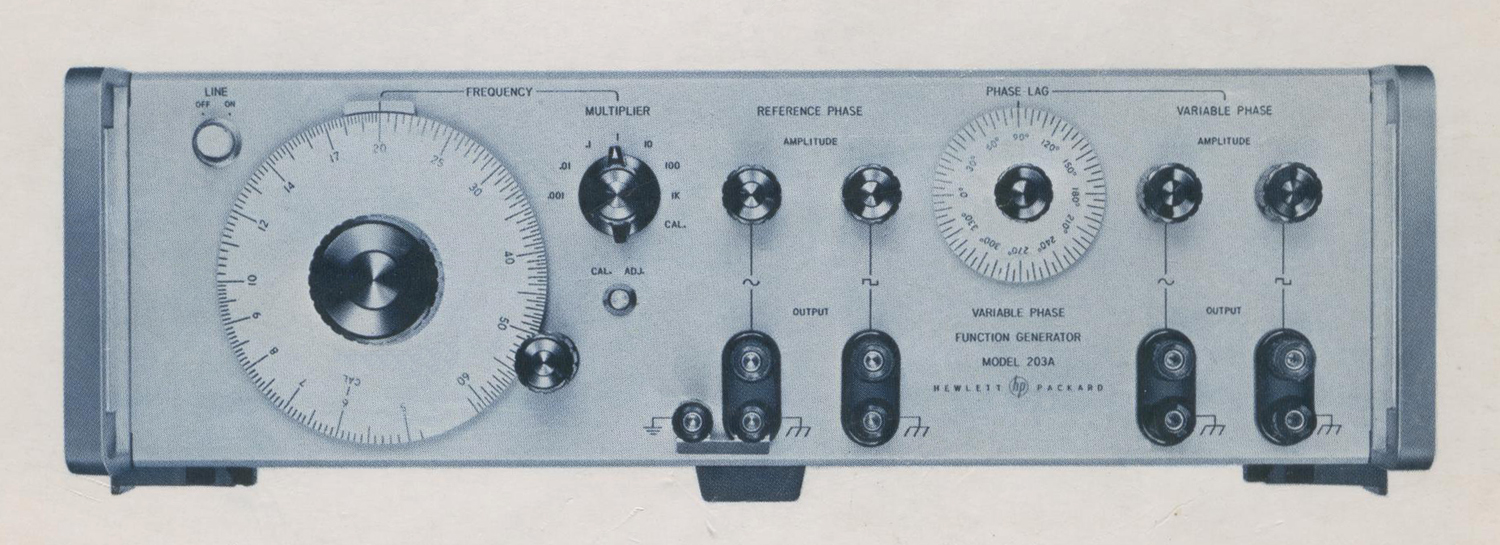
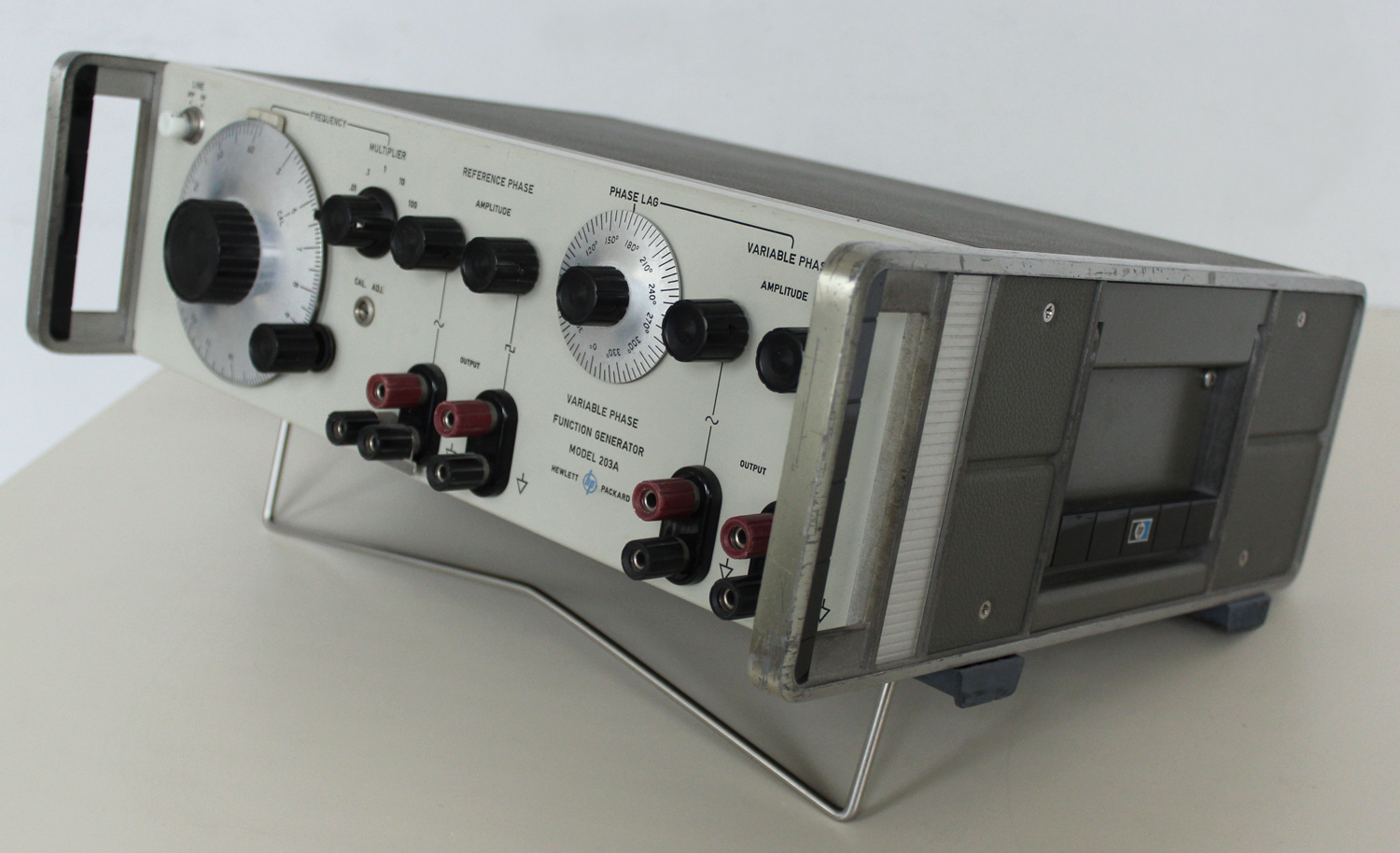
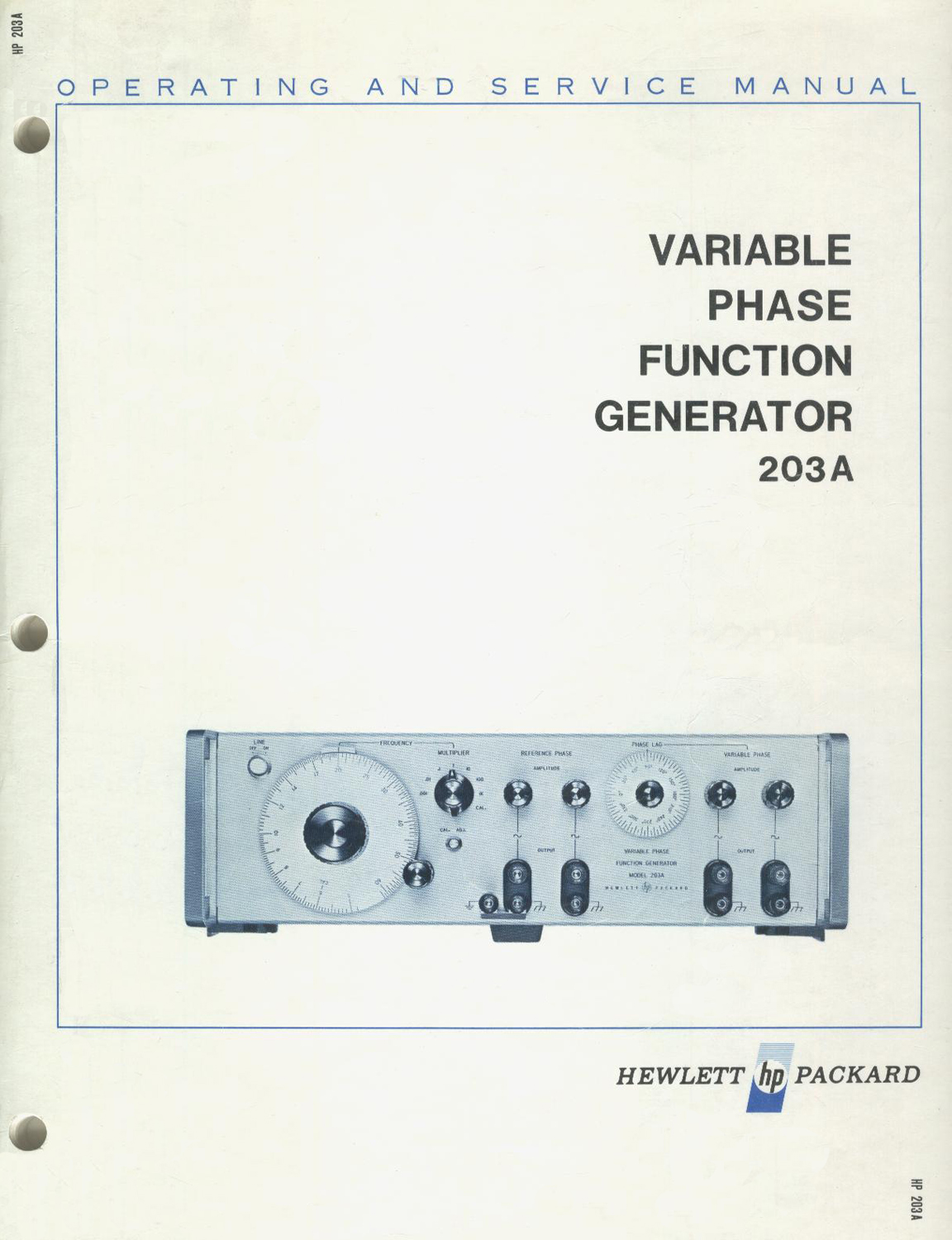
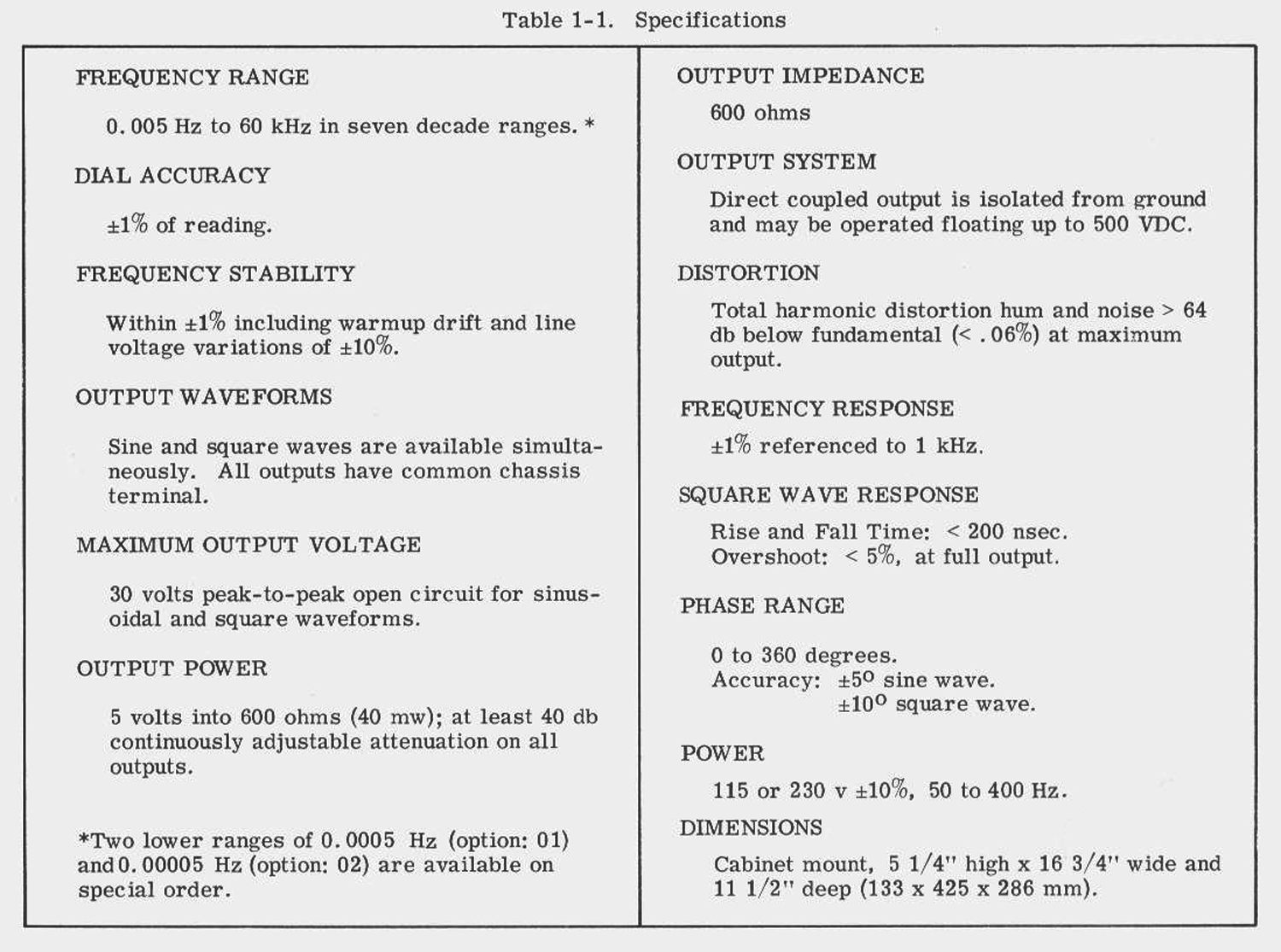
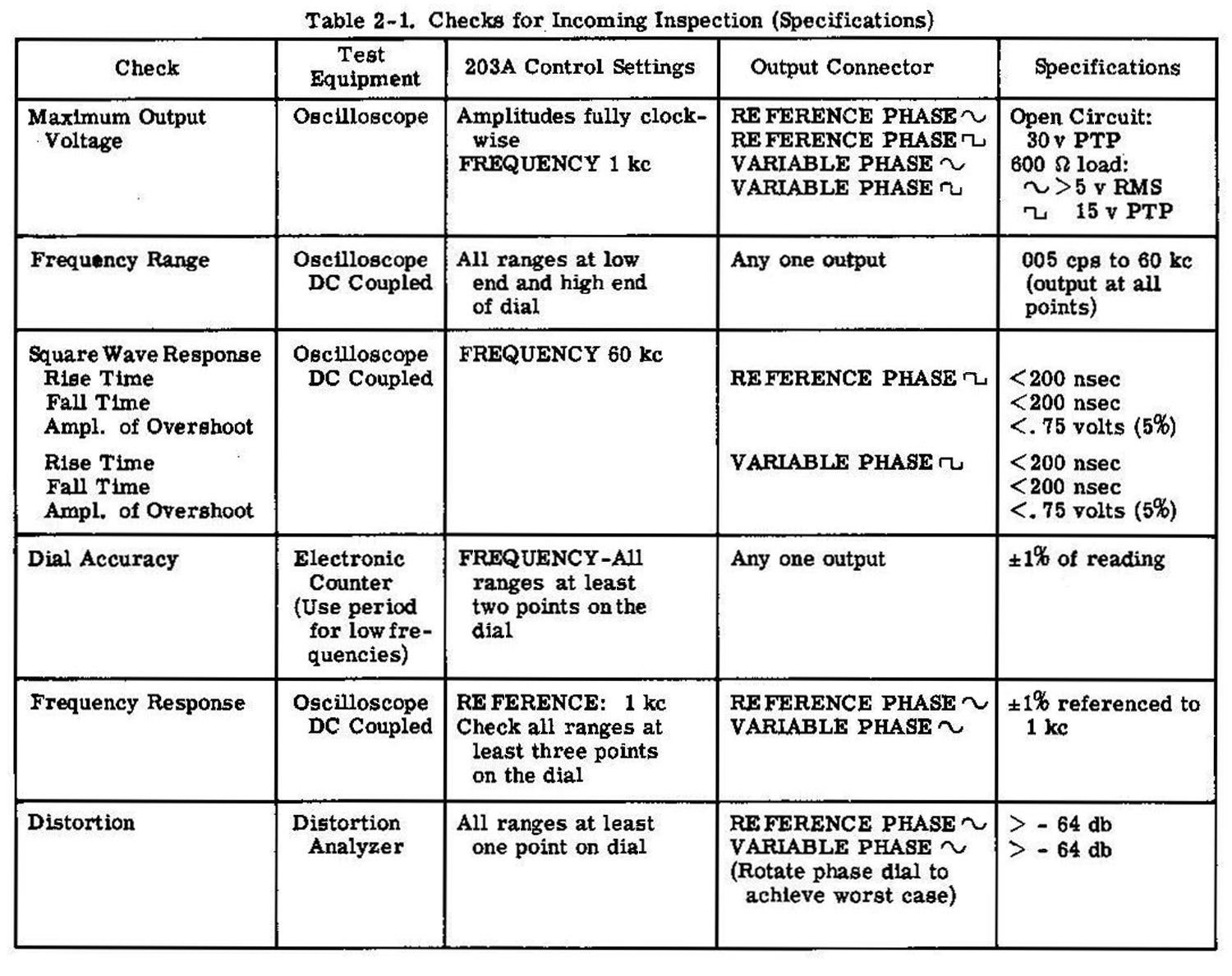
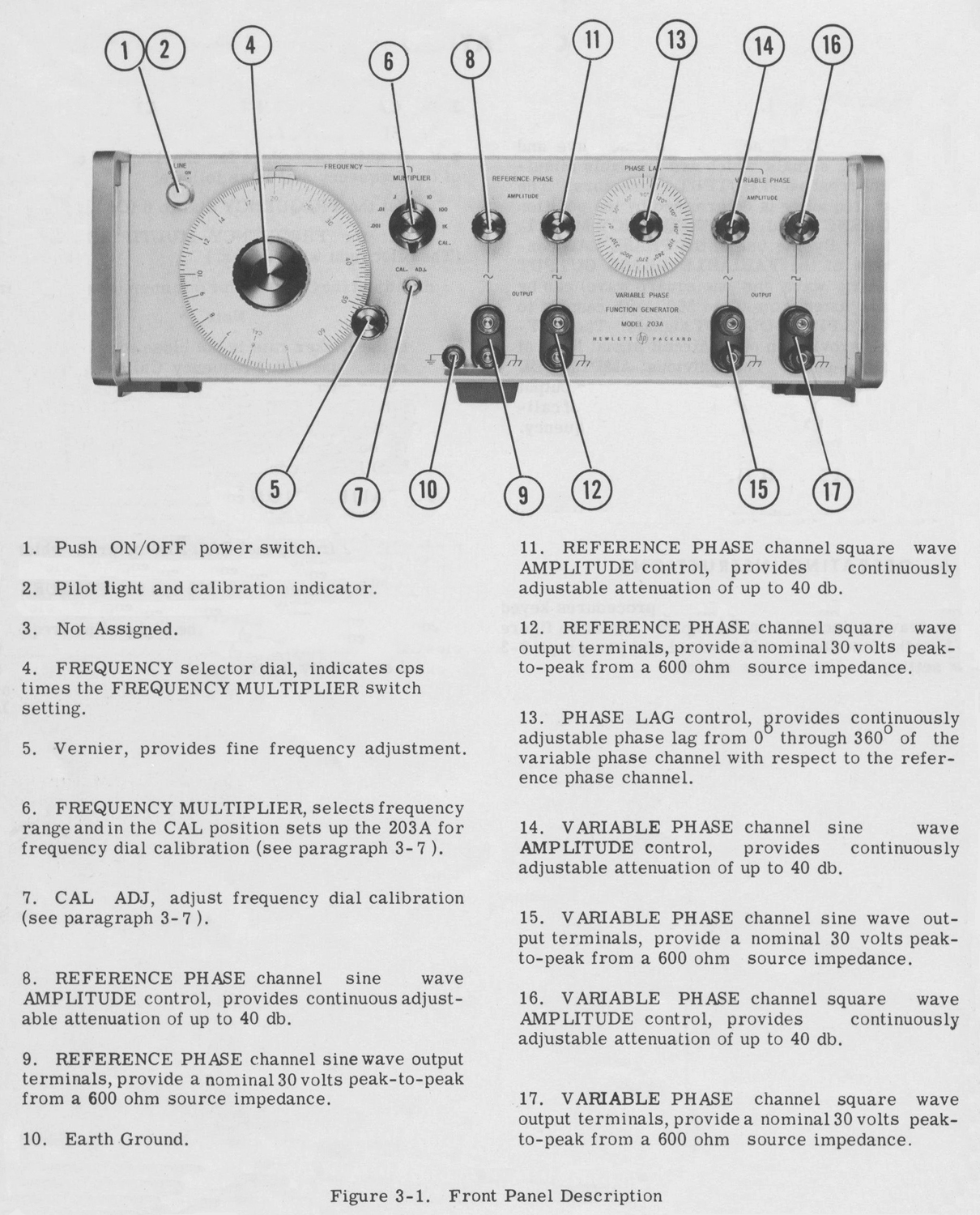
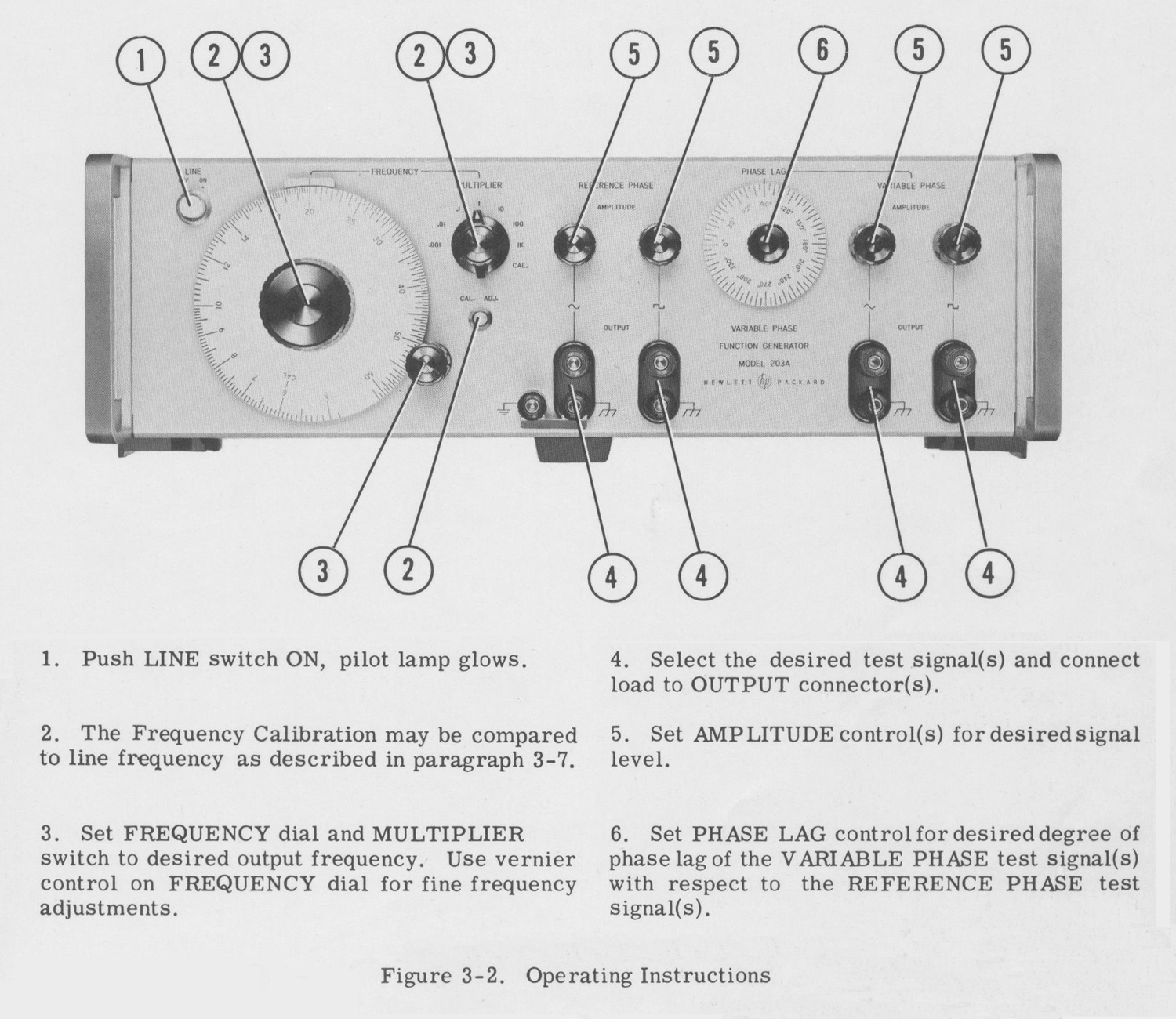
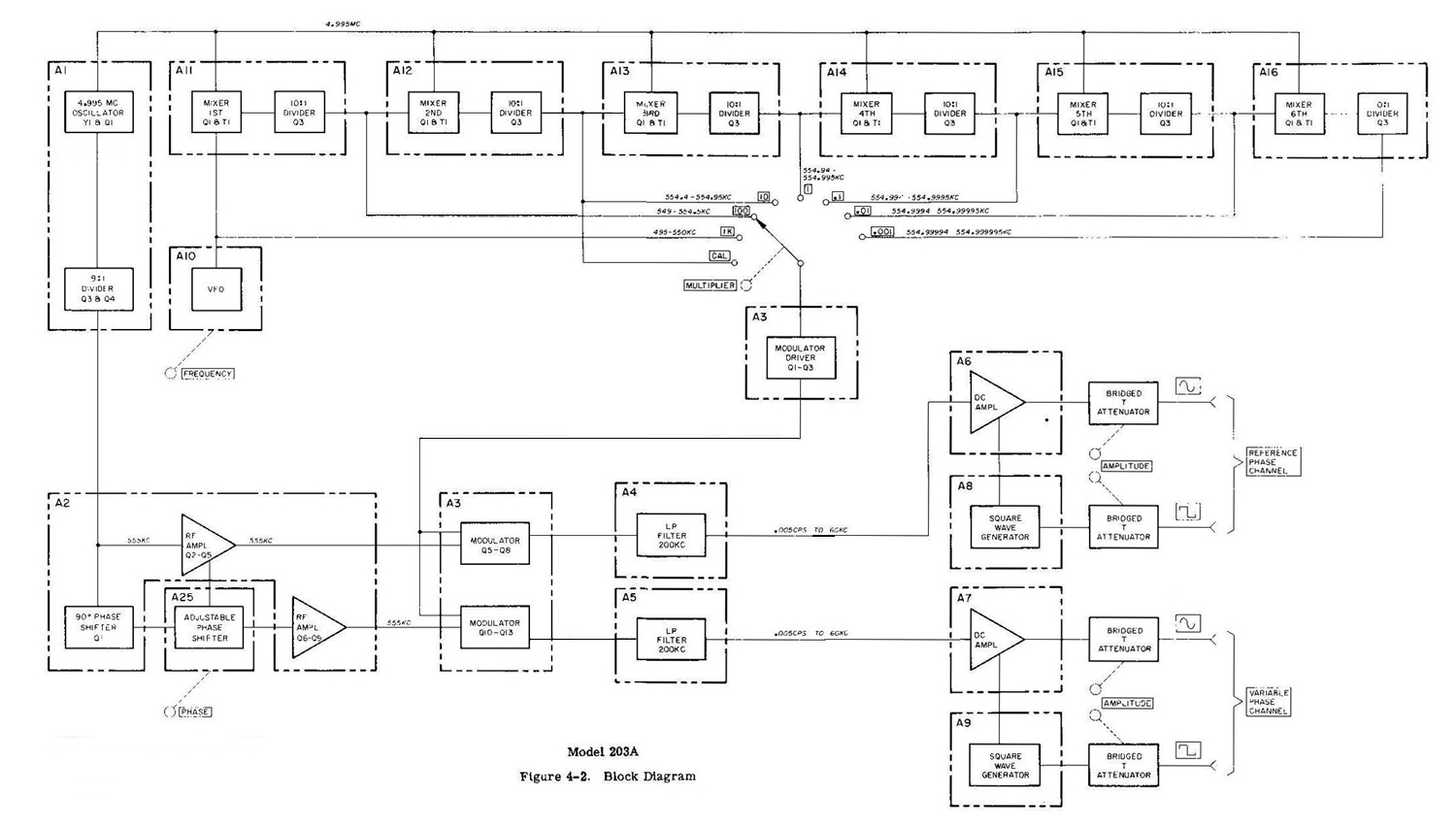
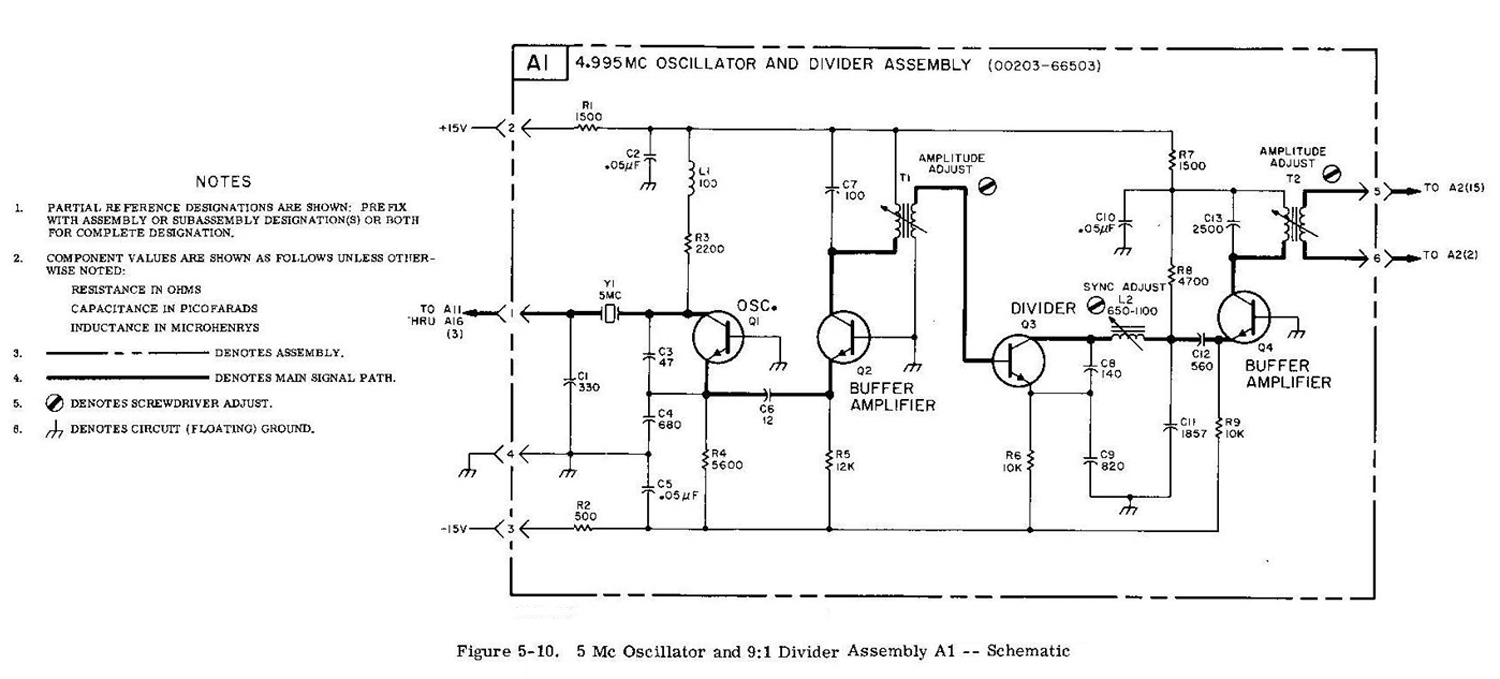
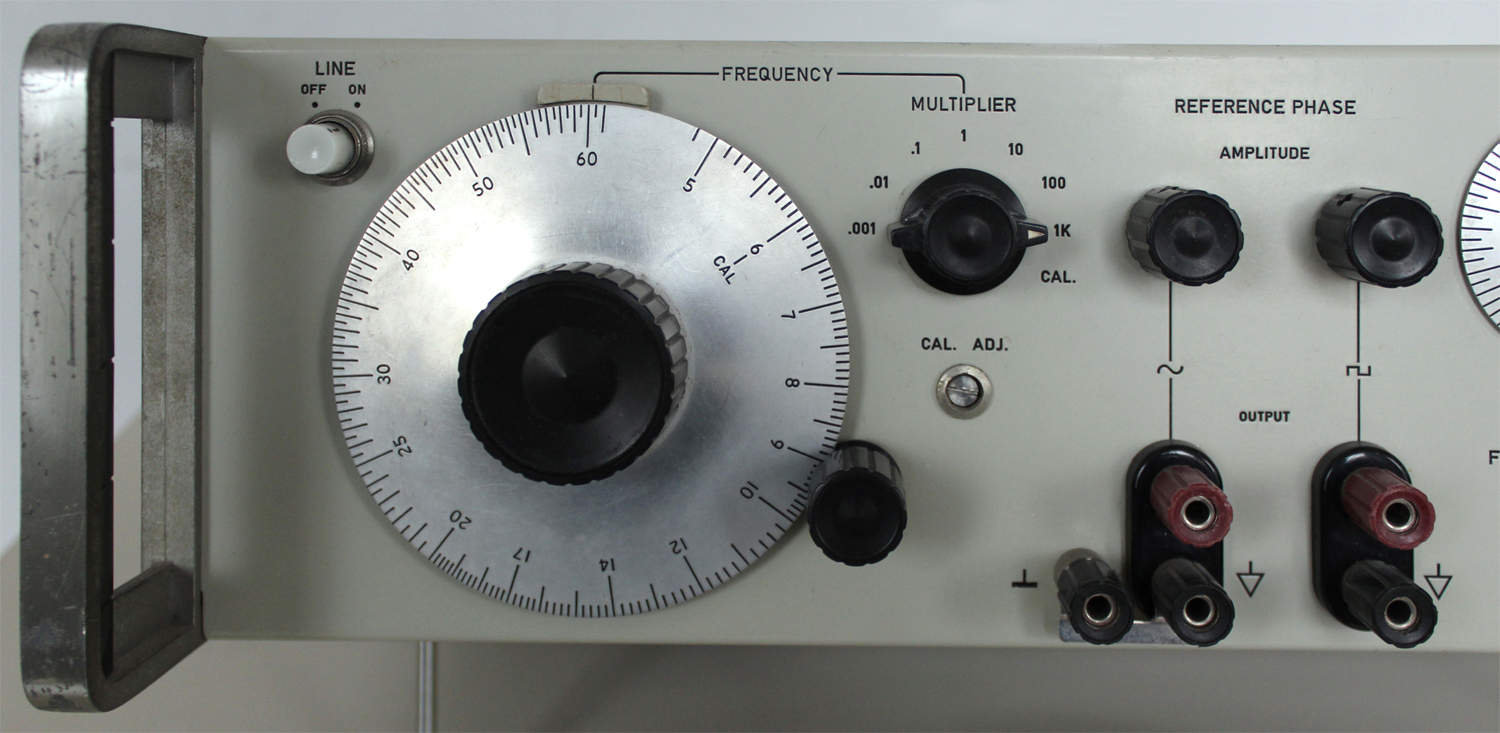
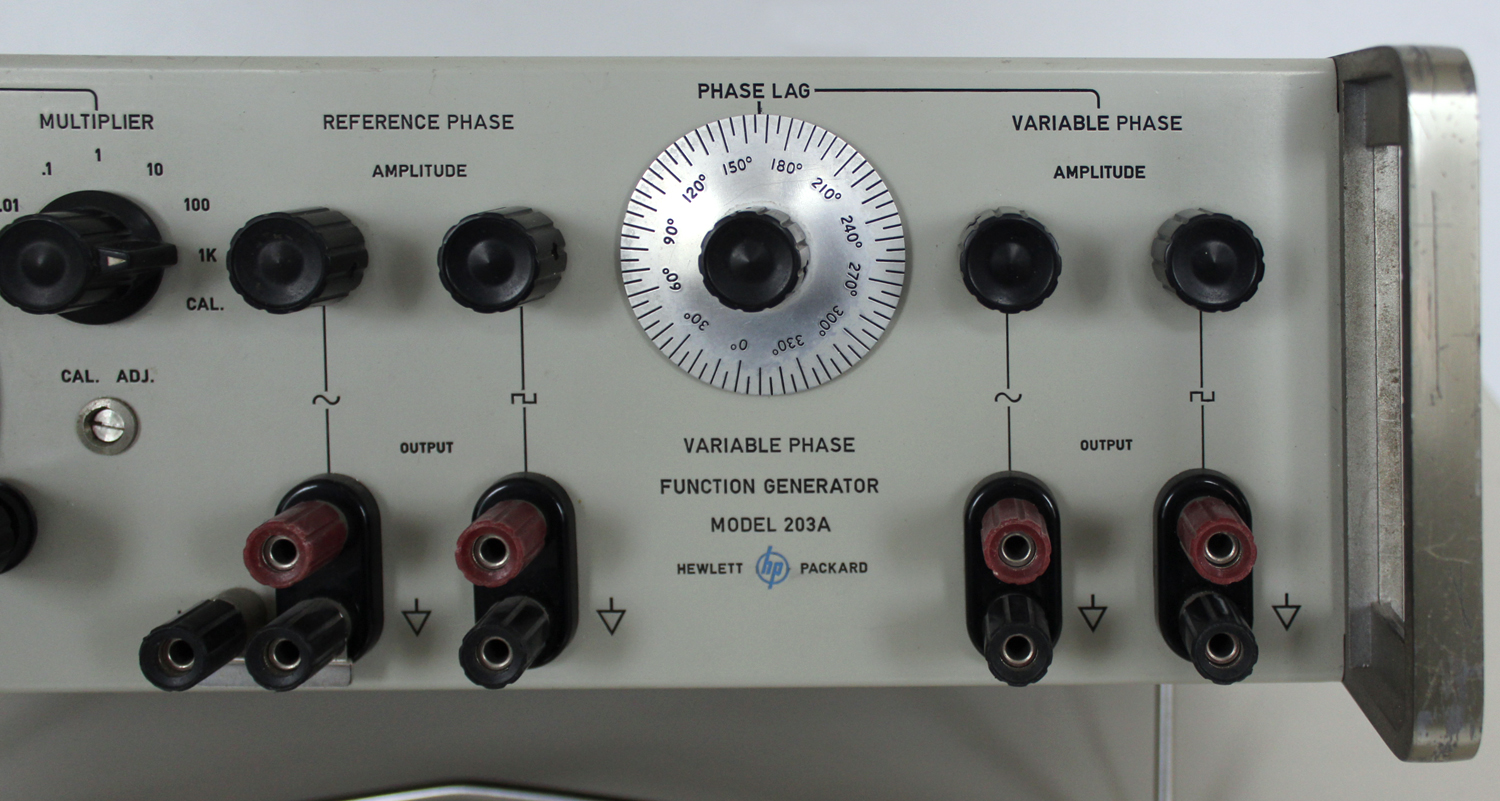
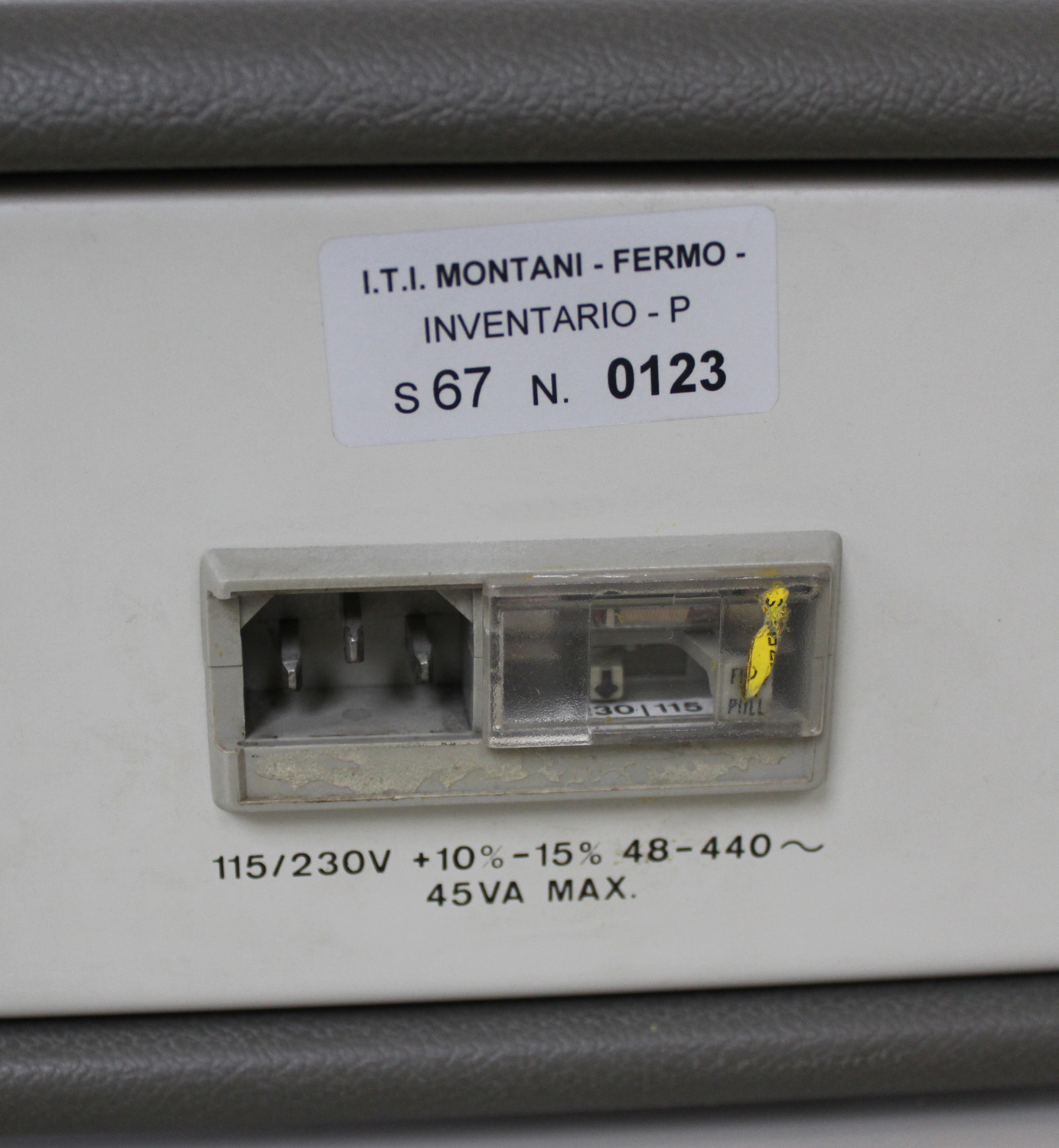
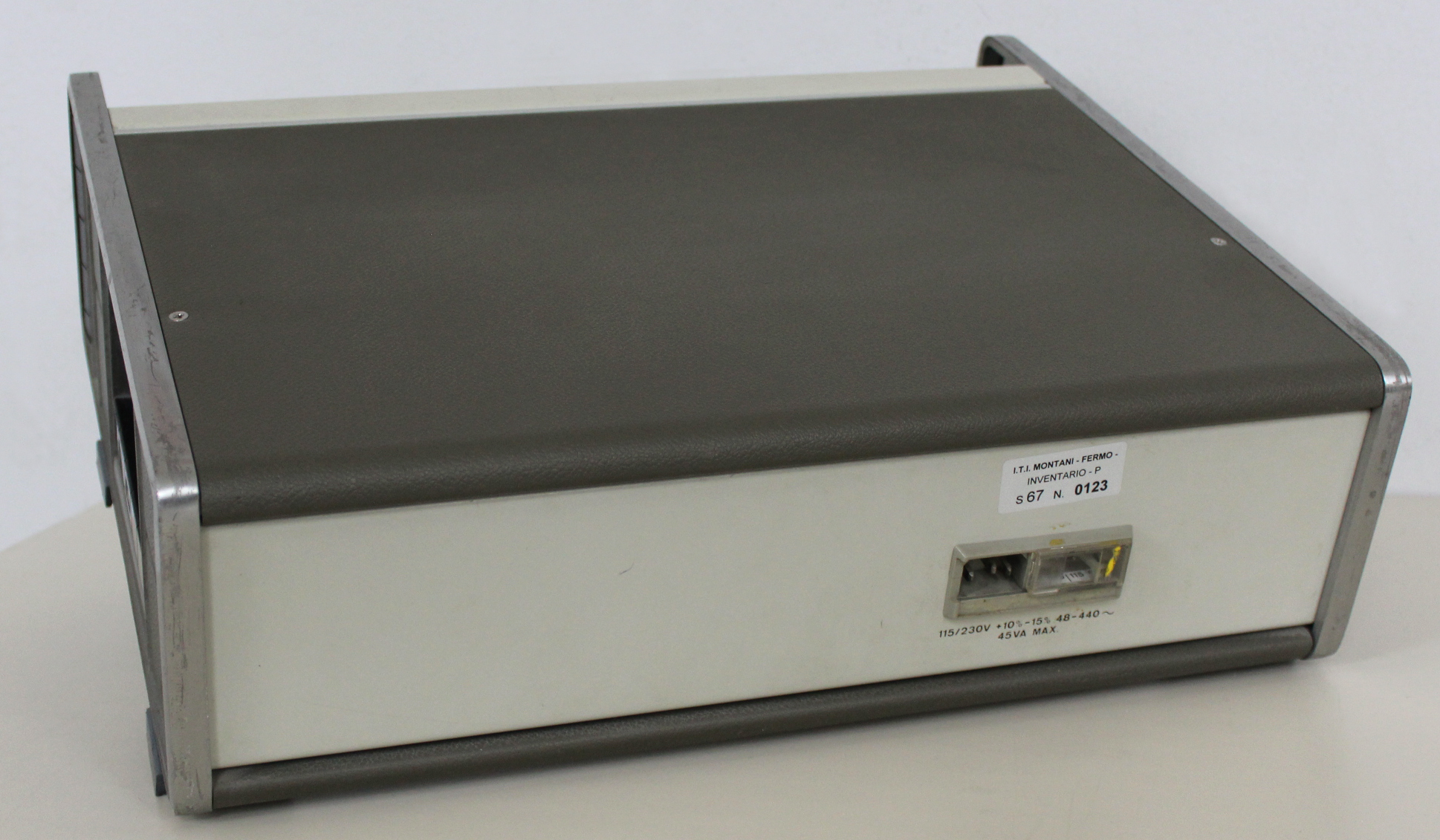
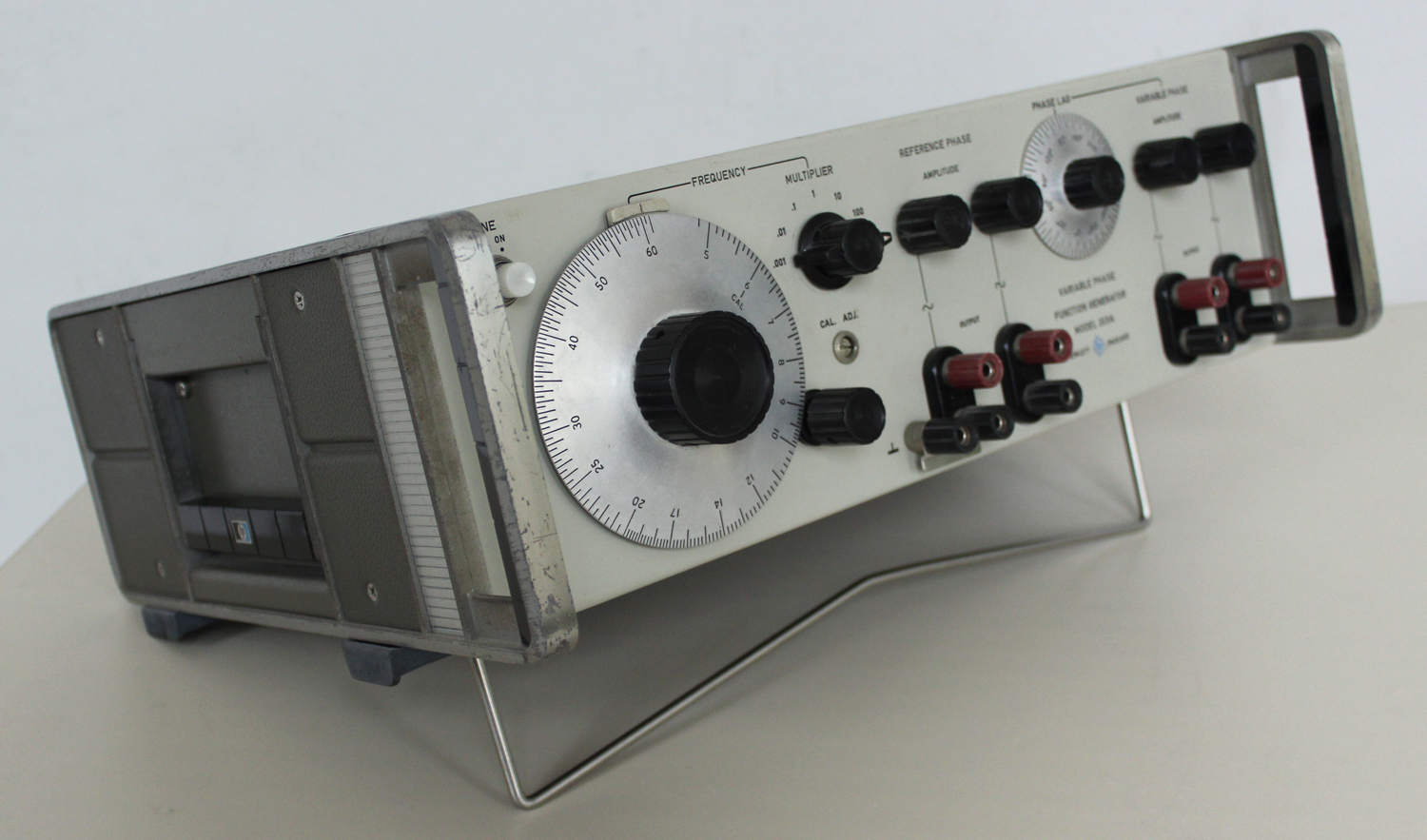
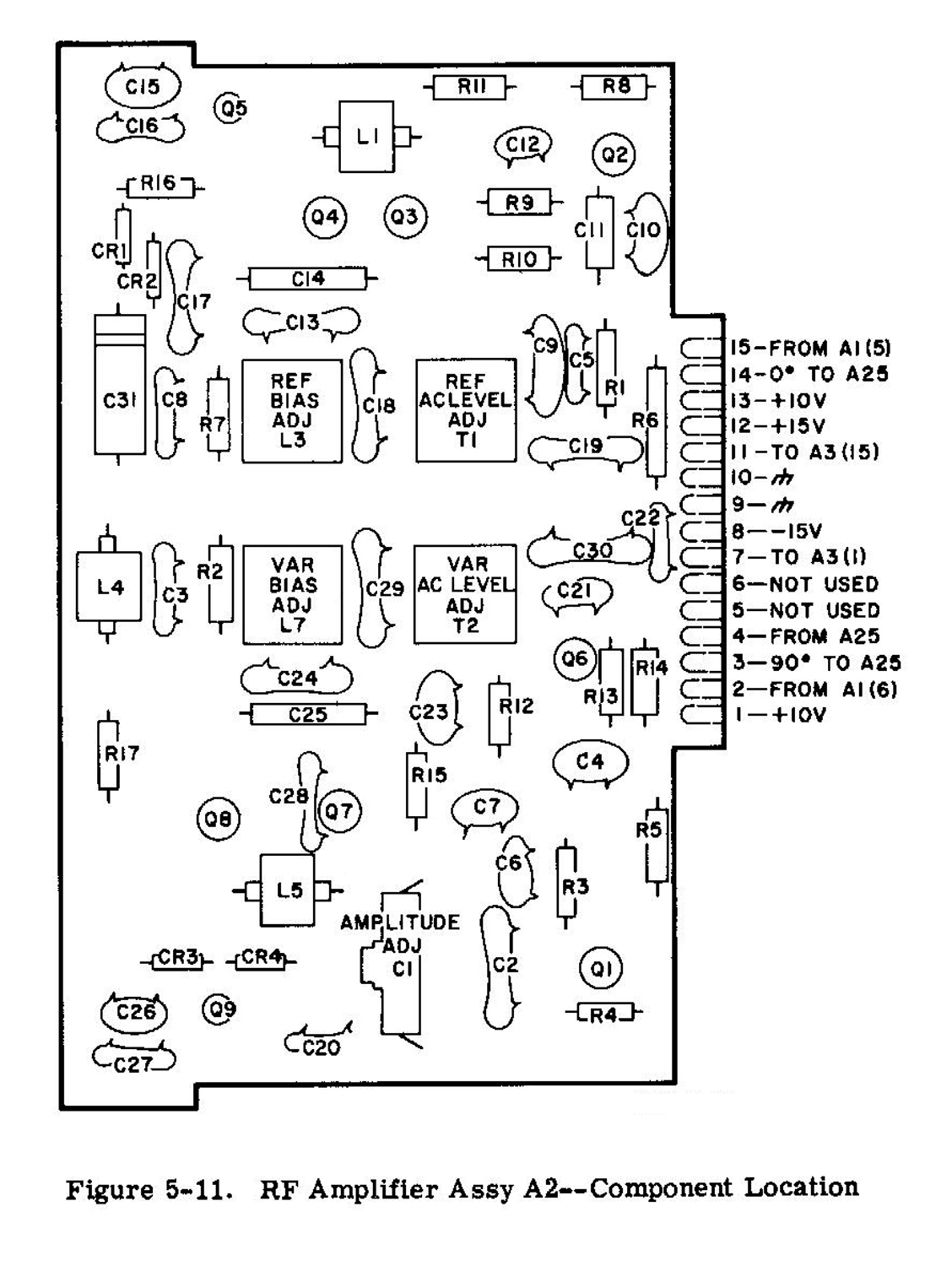
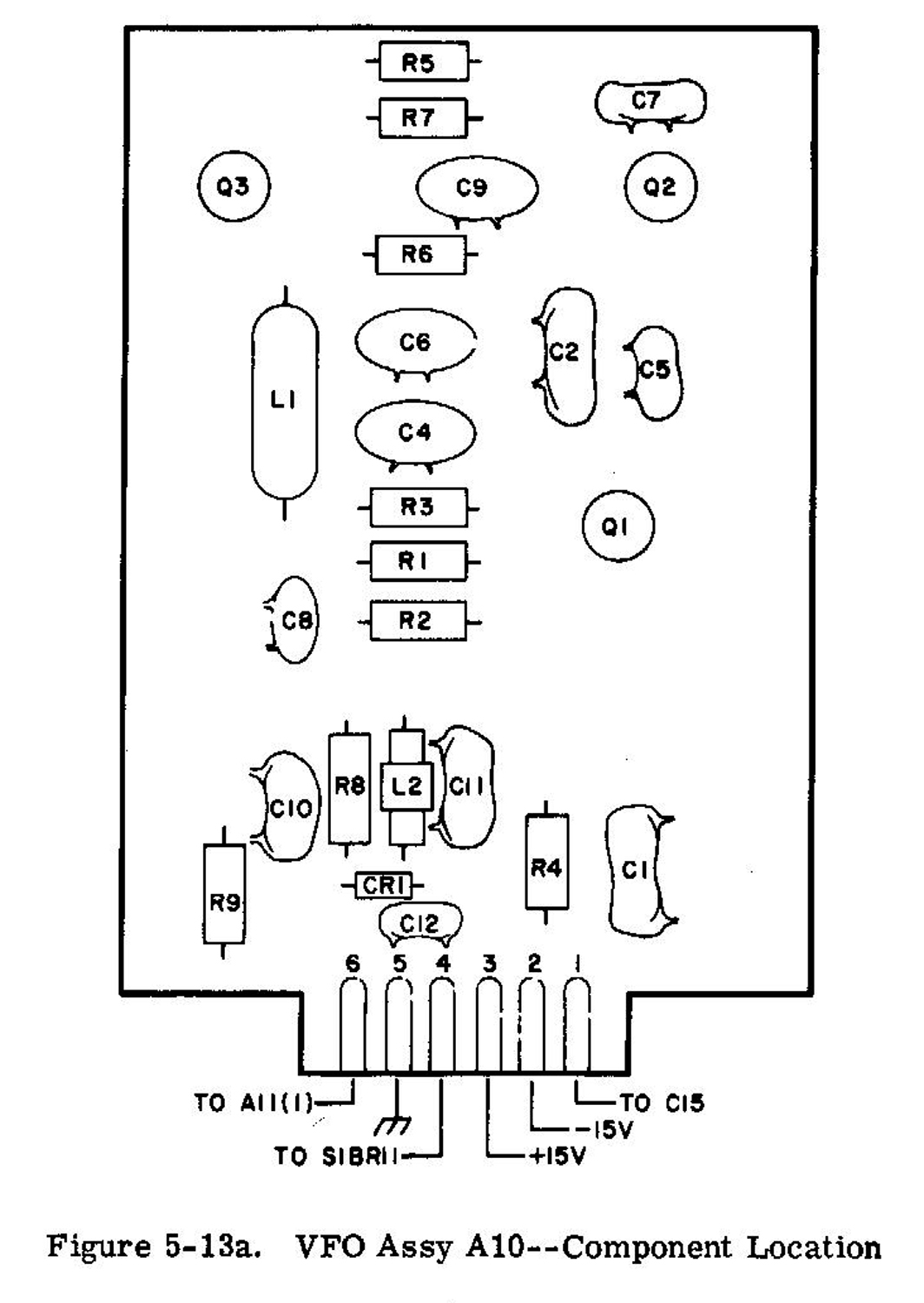
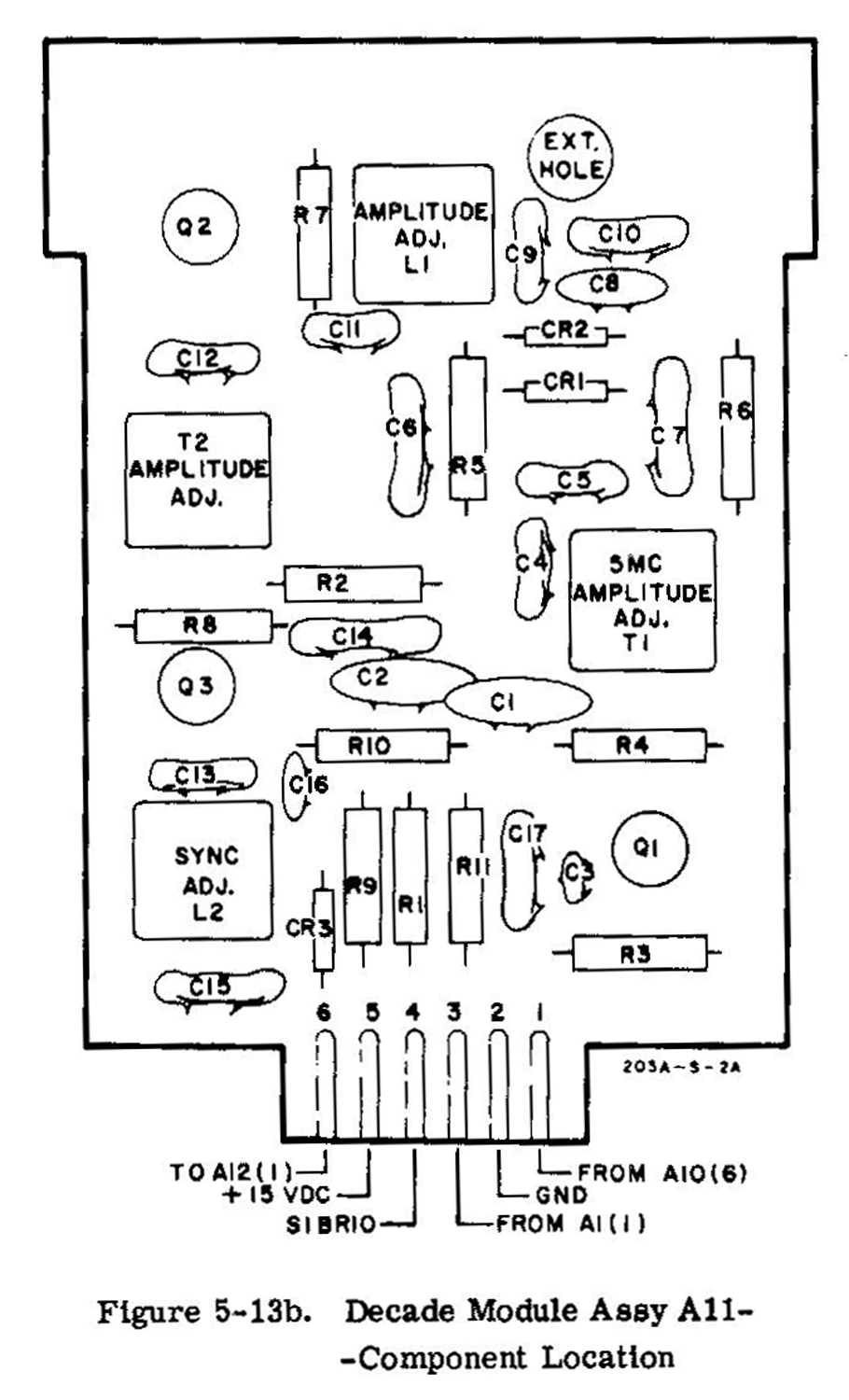
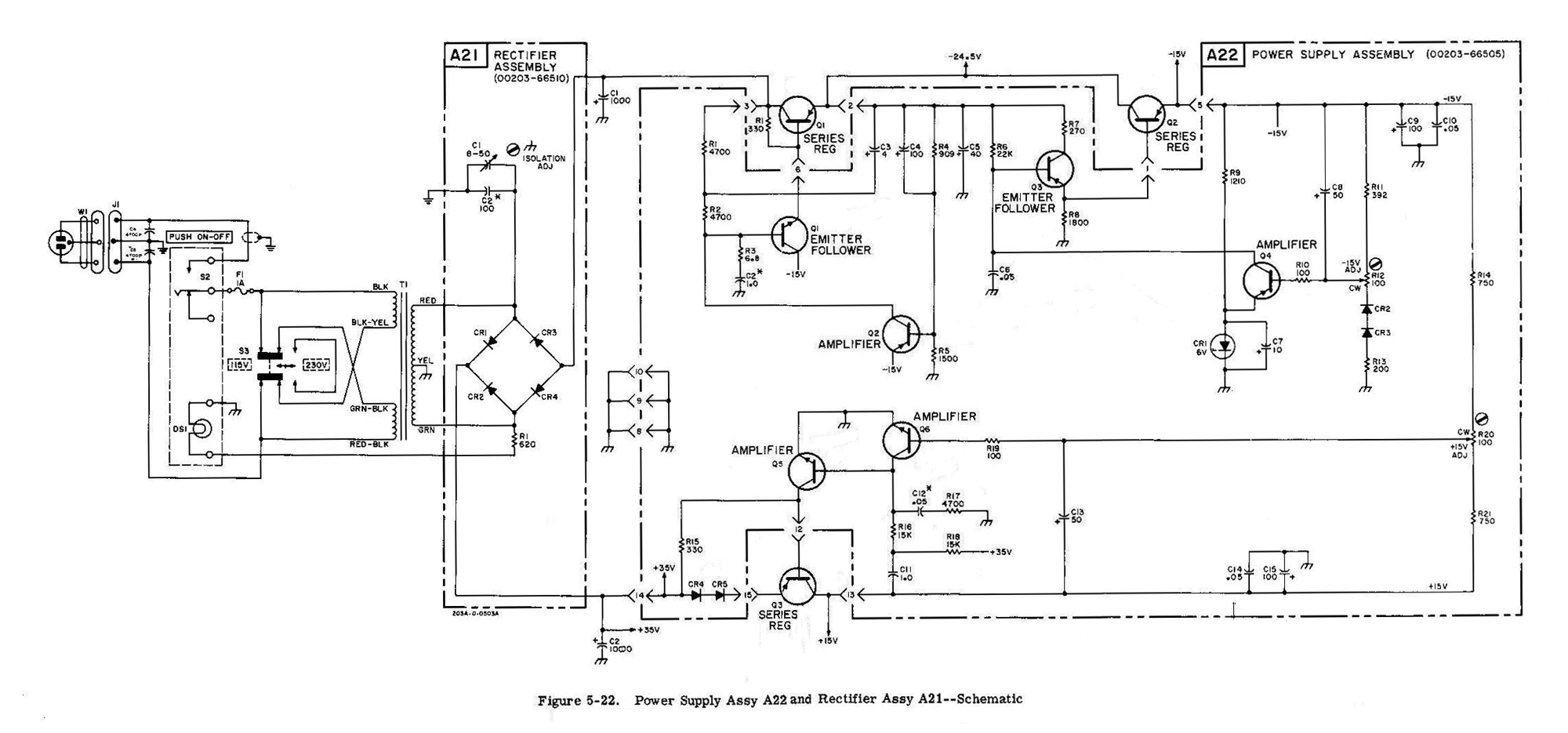
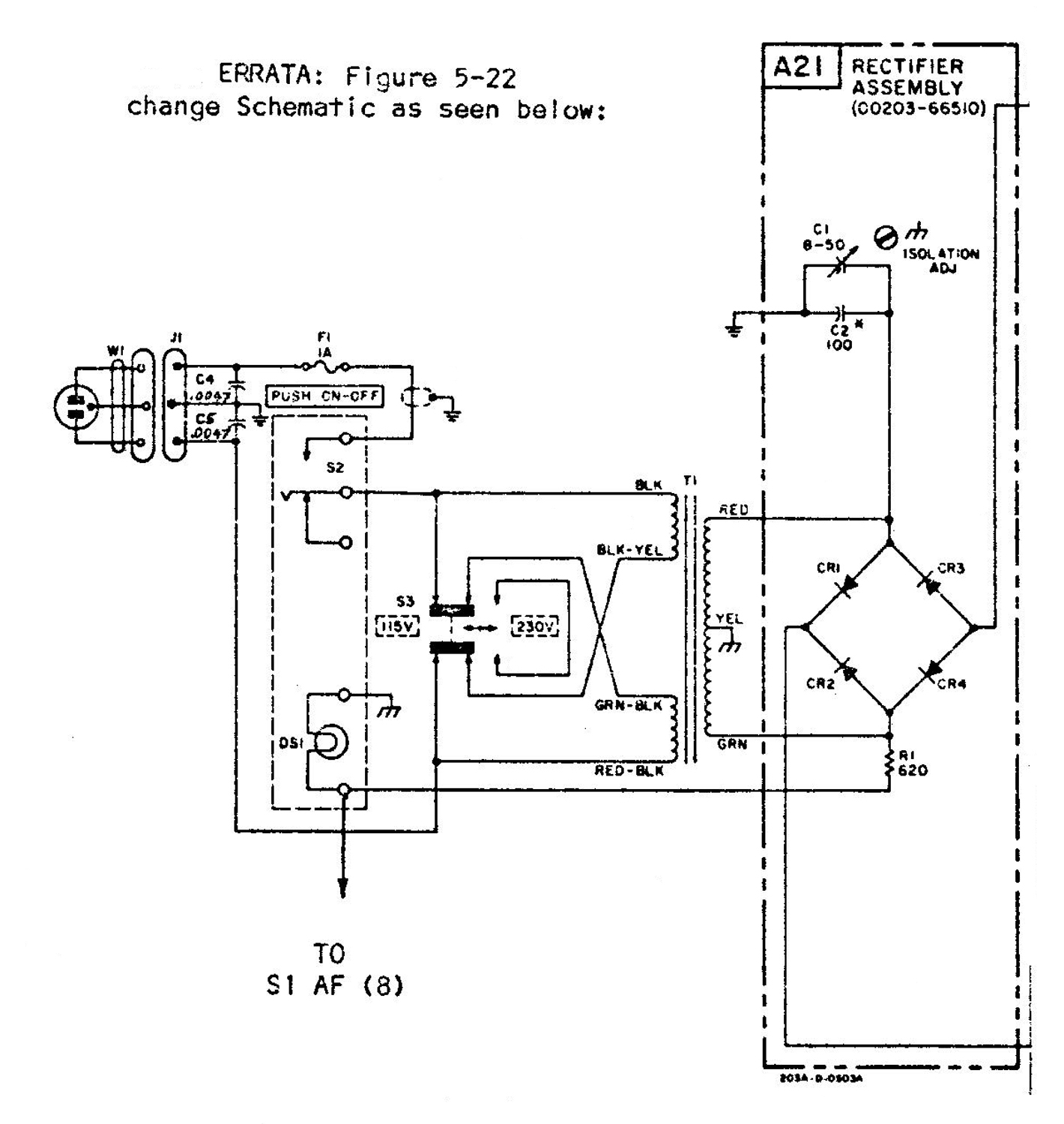
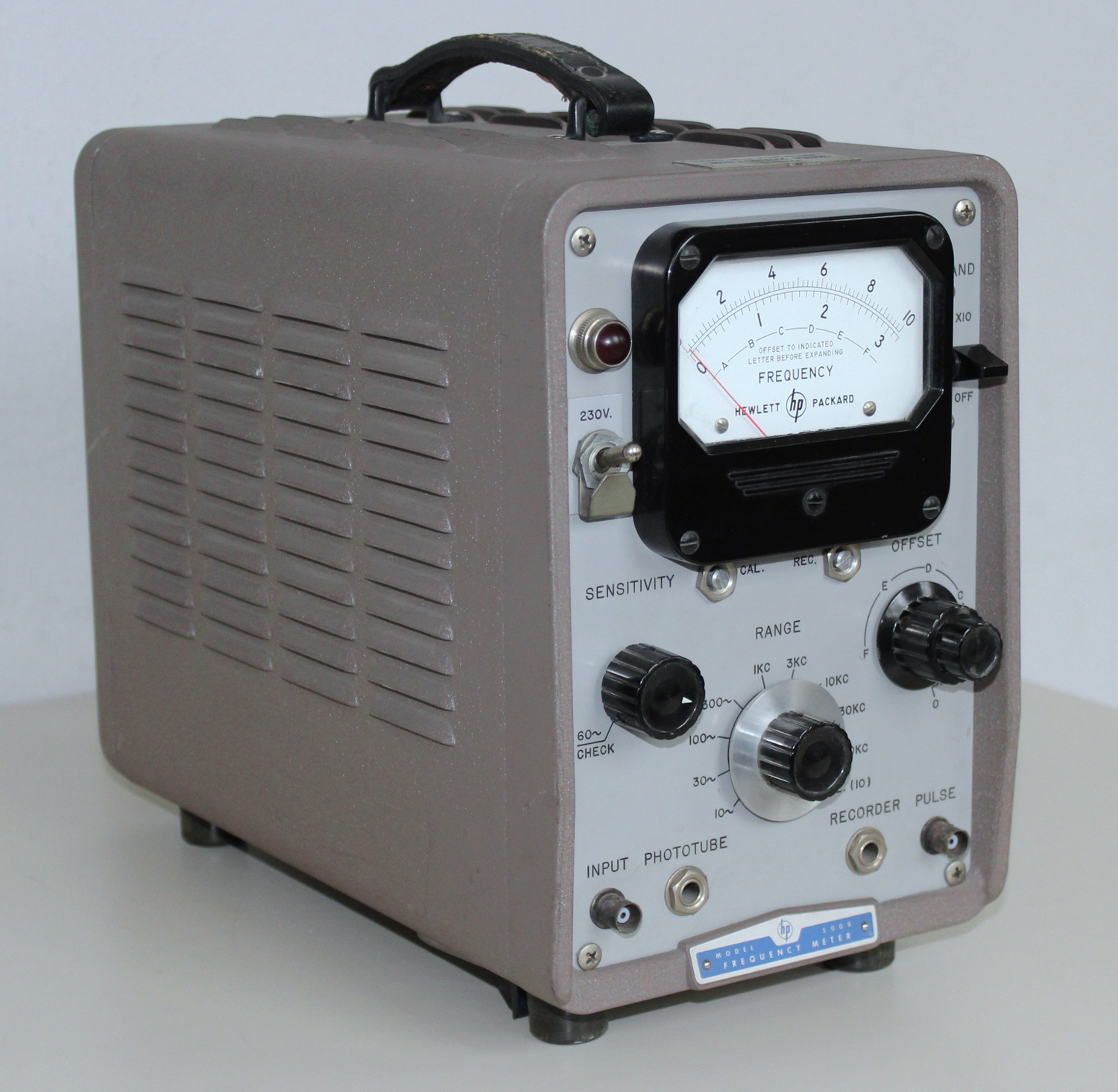
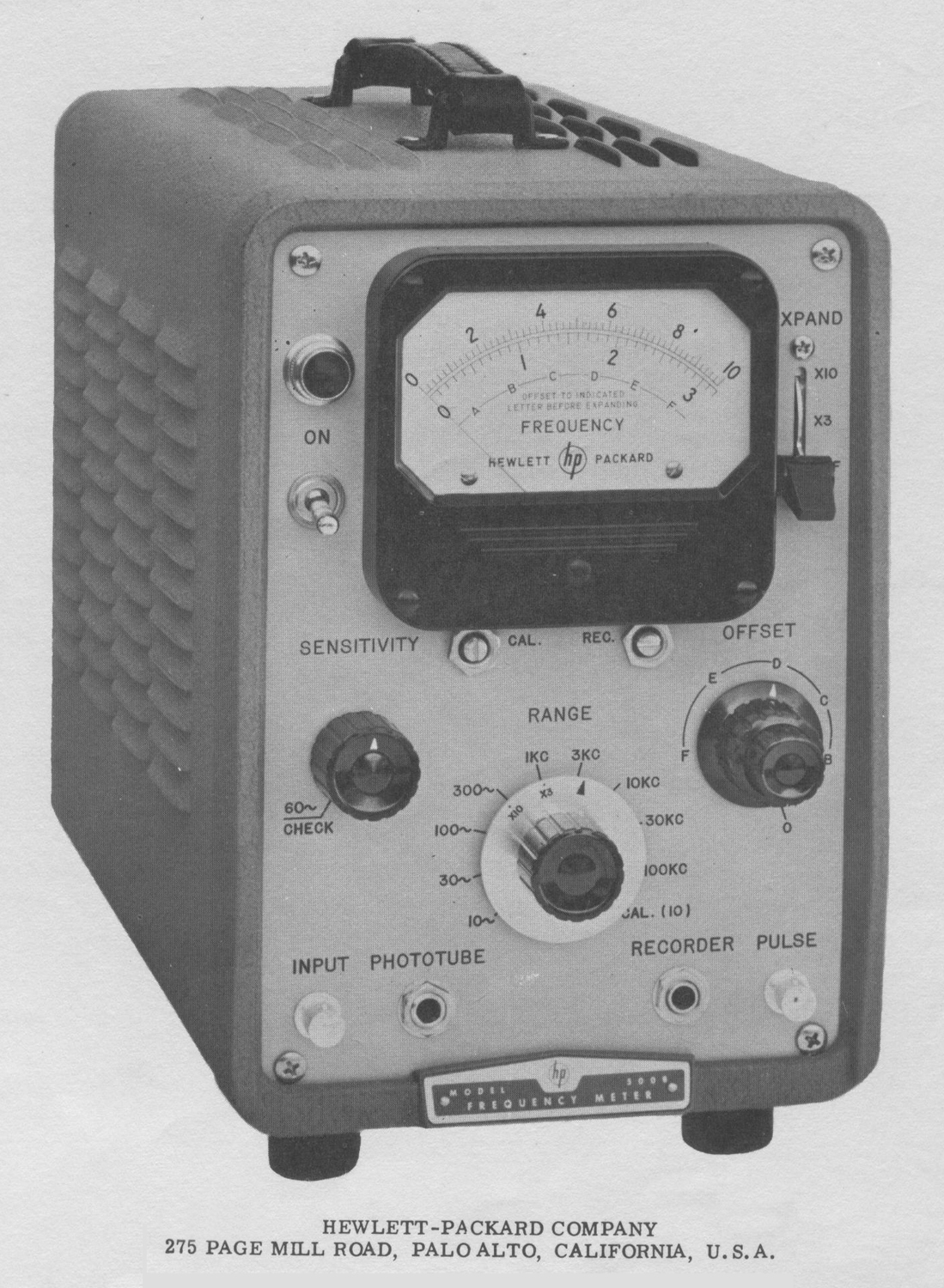
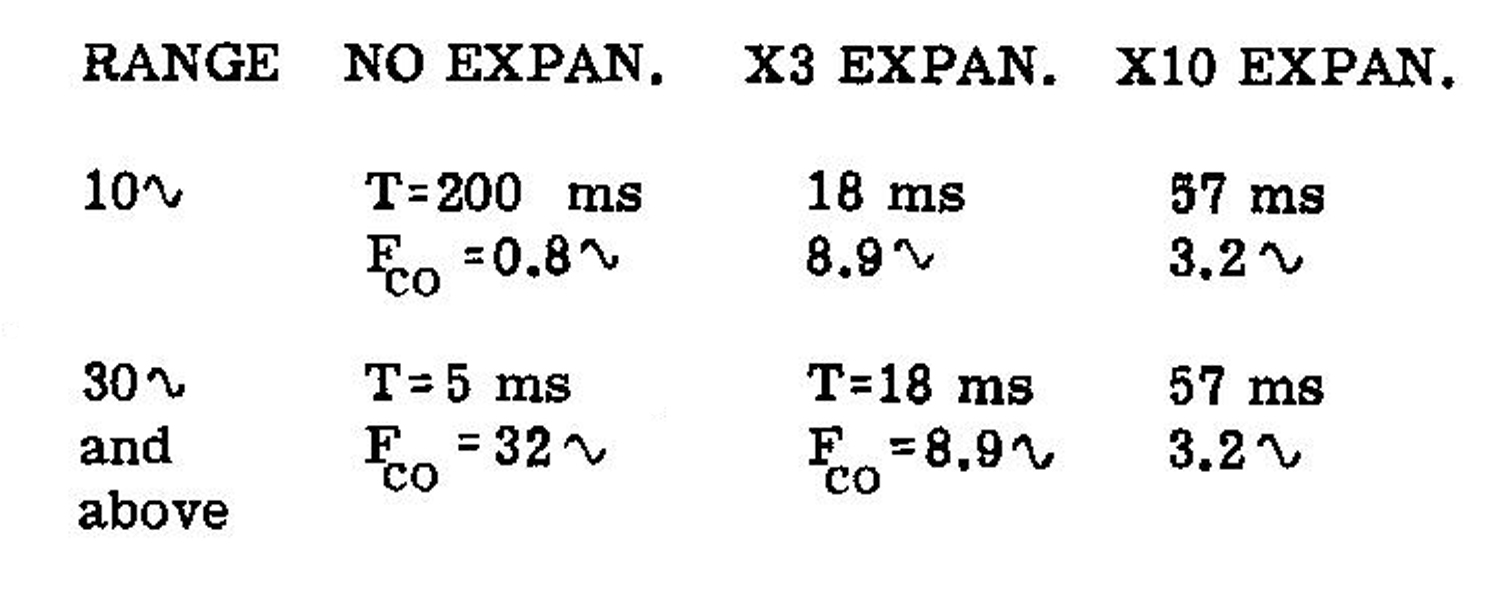 2B-12 PULSE OUTPUT RESPONSE
2B-12 PULSE OUTPUT RESPONSE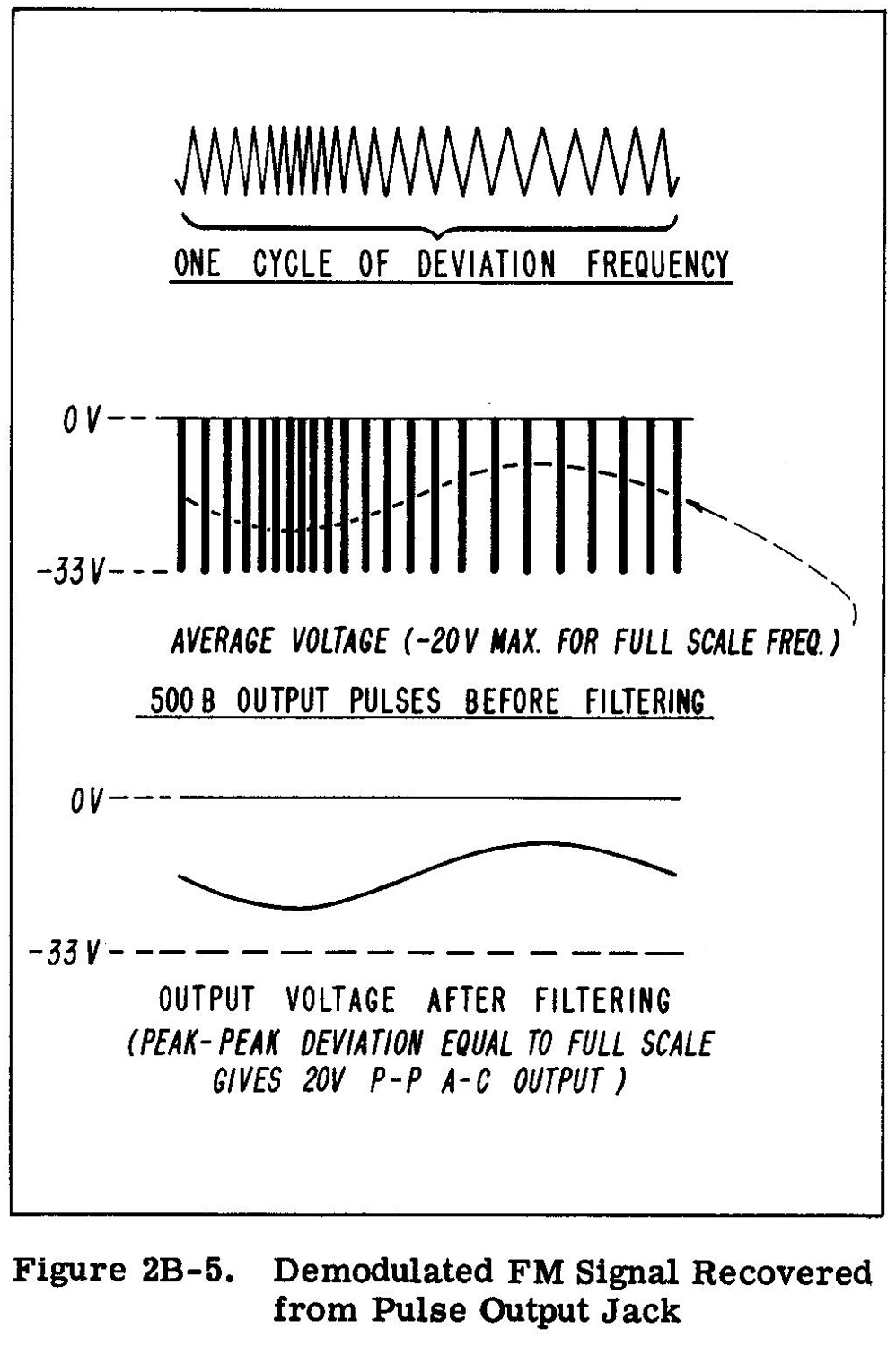

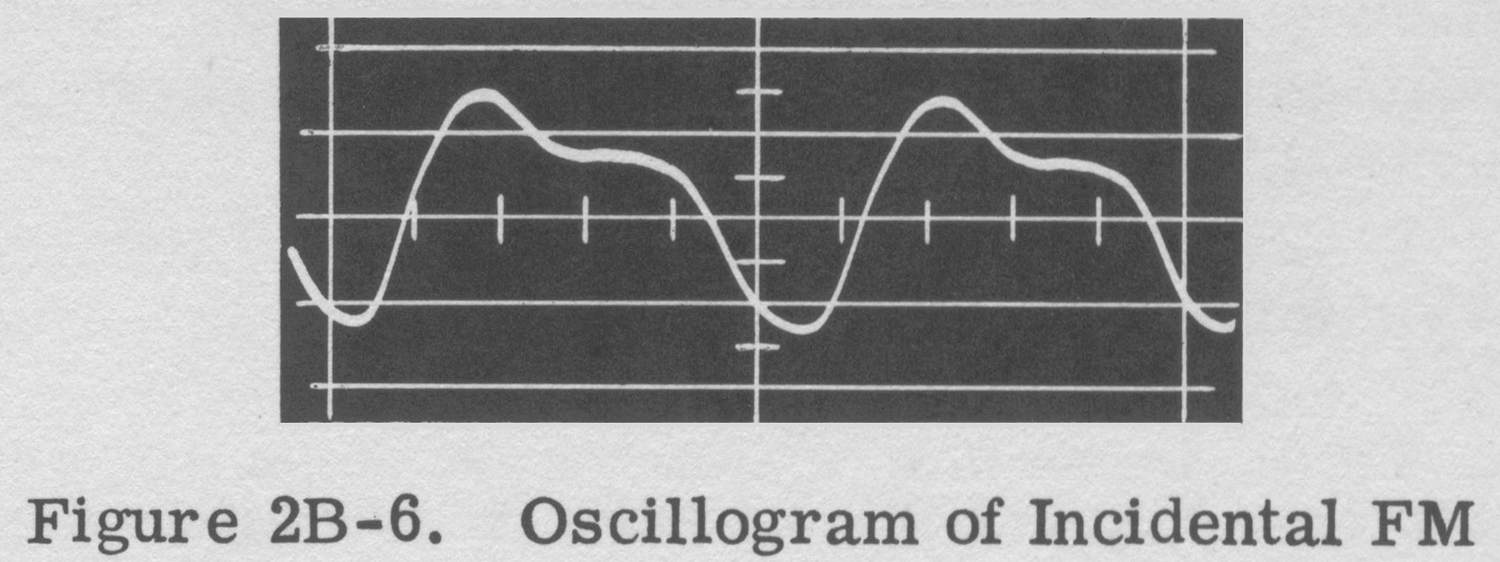
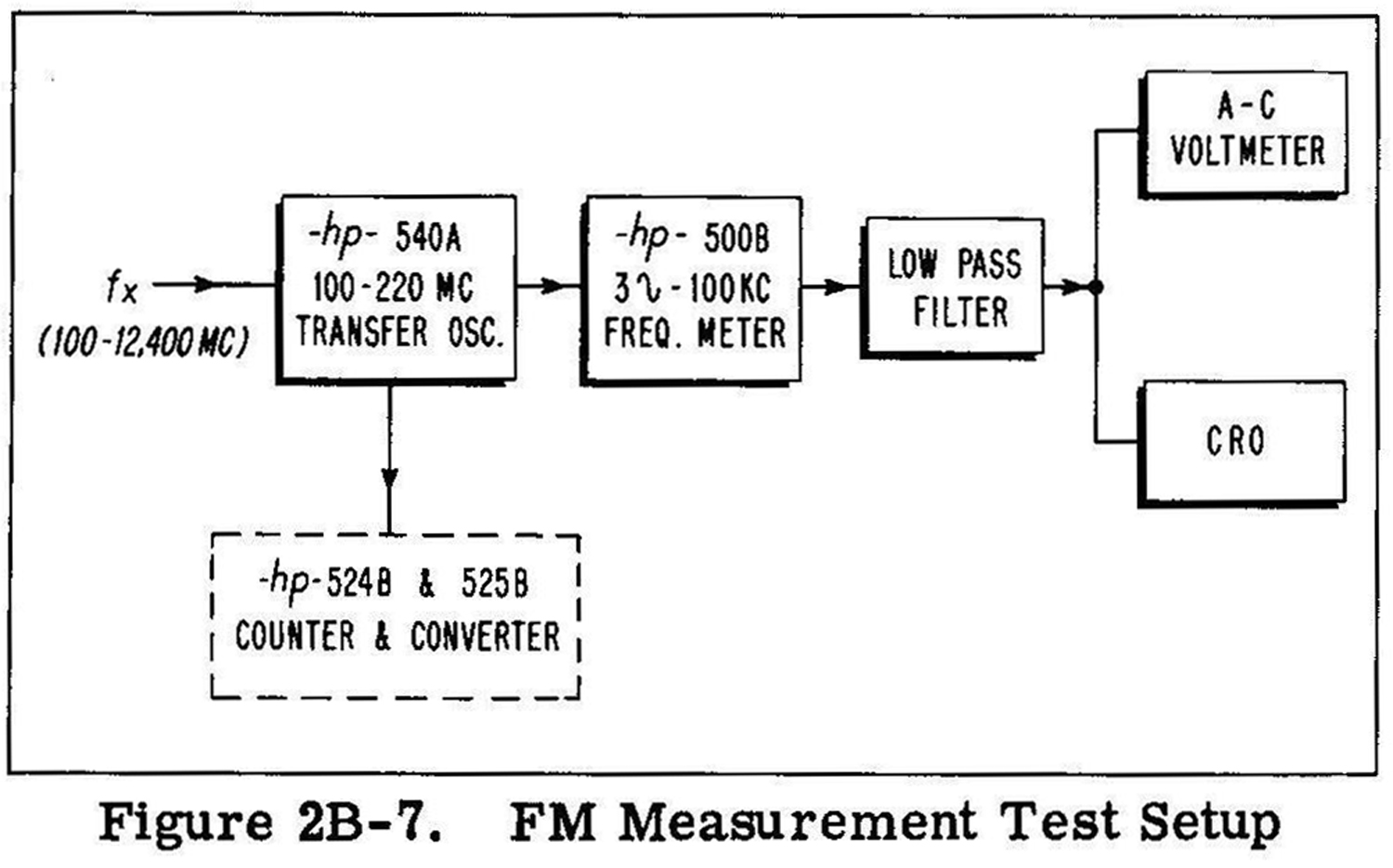
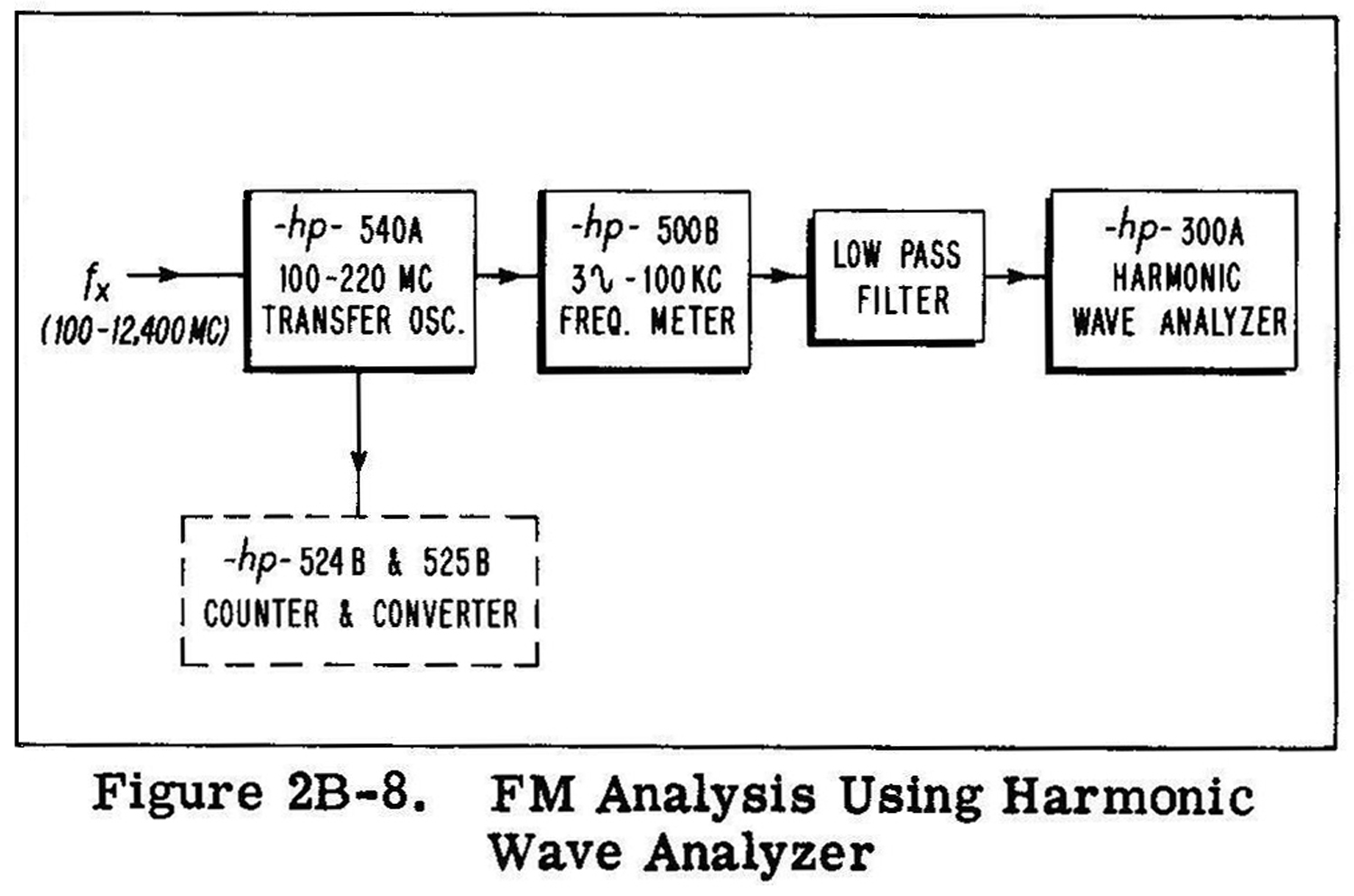
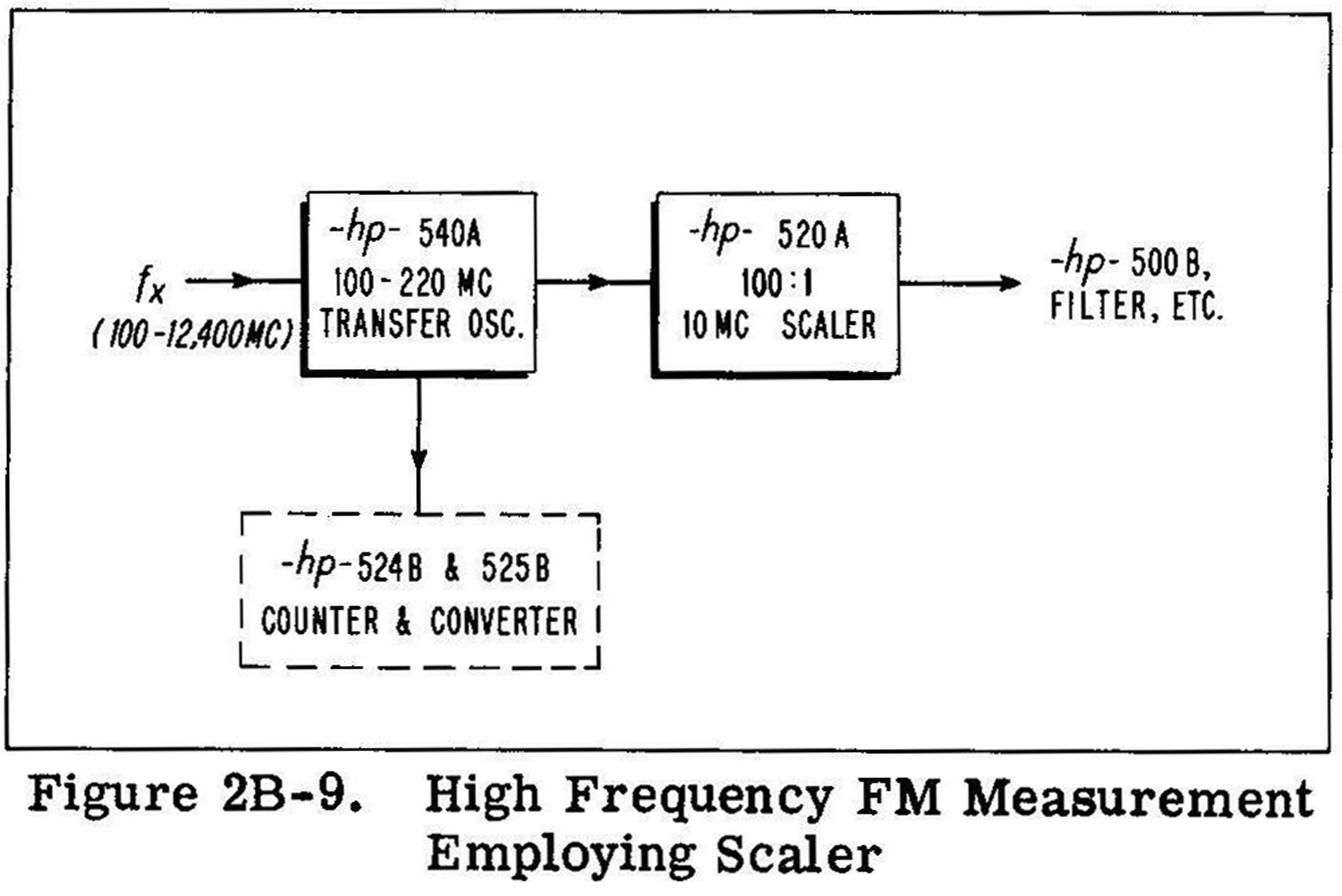
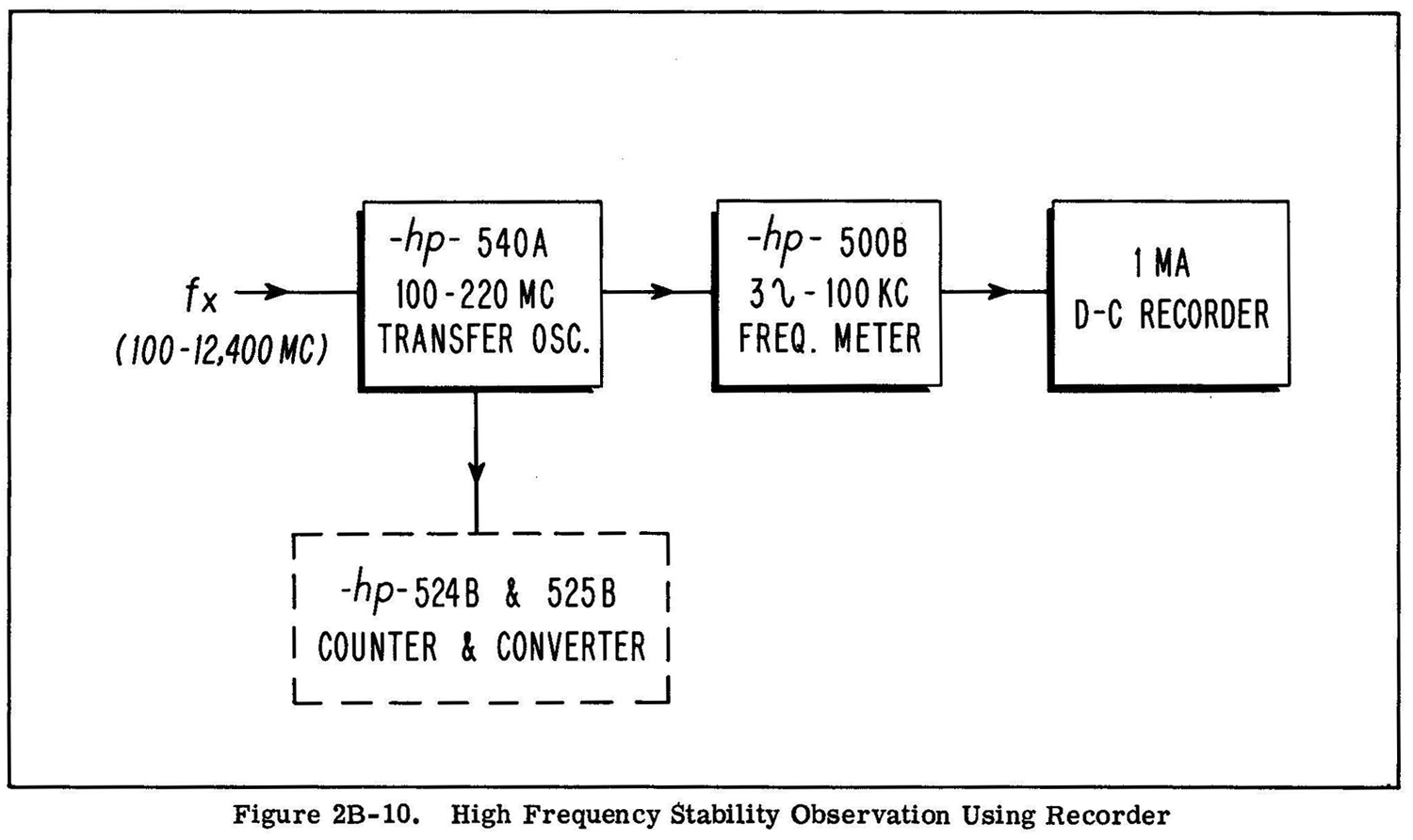
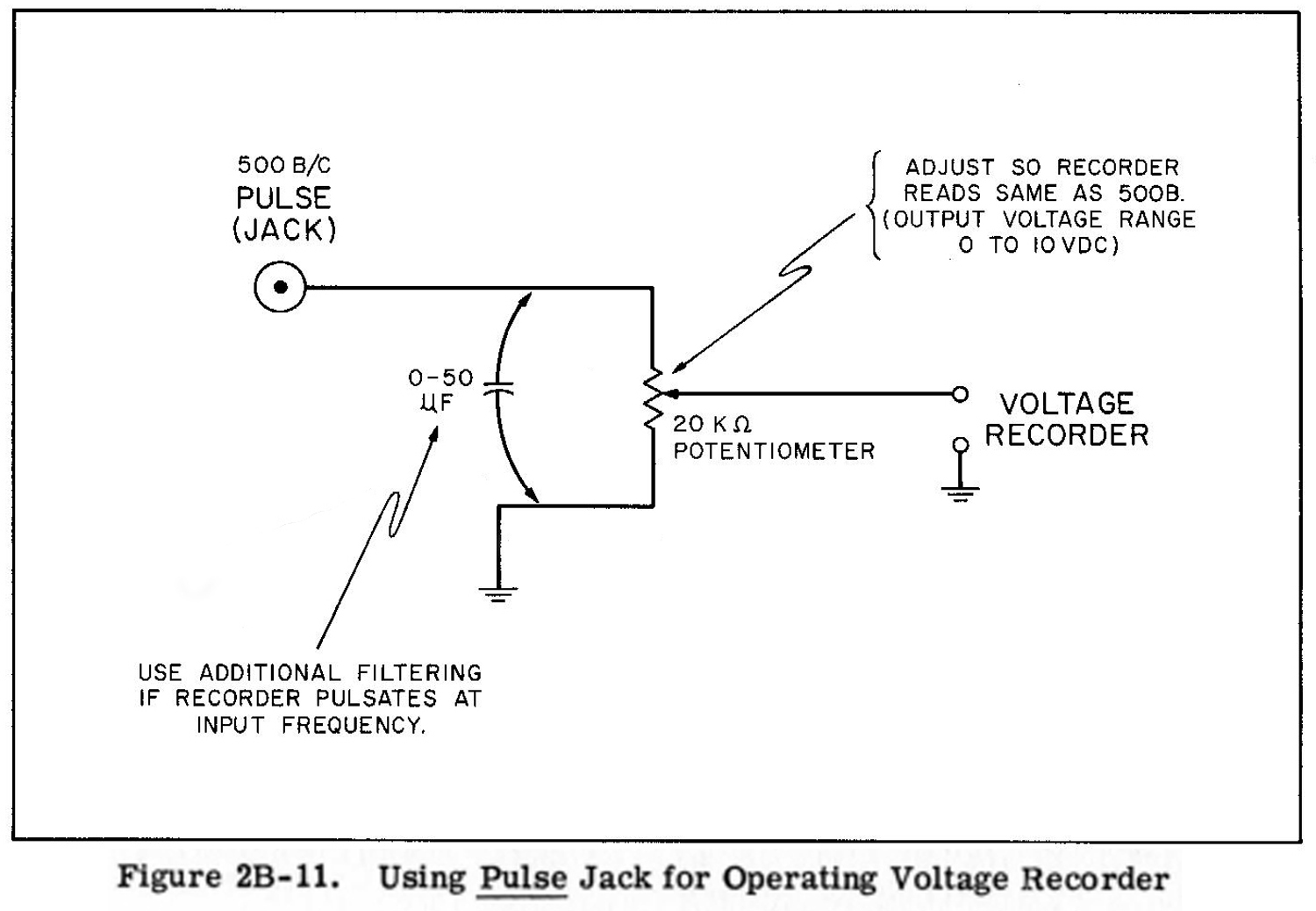
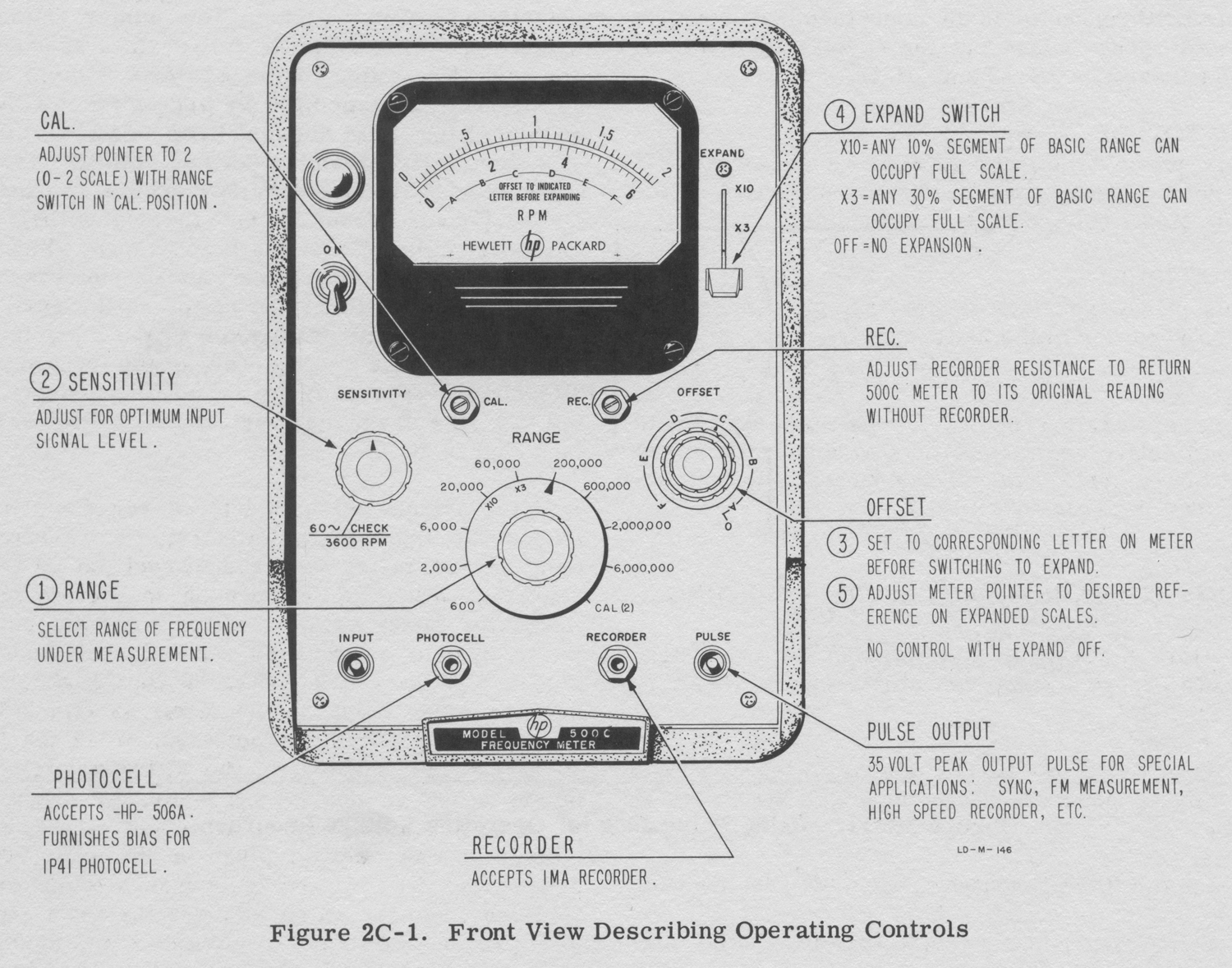
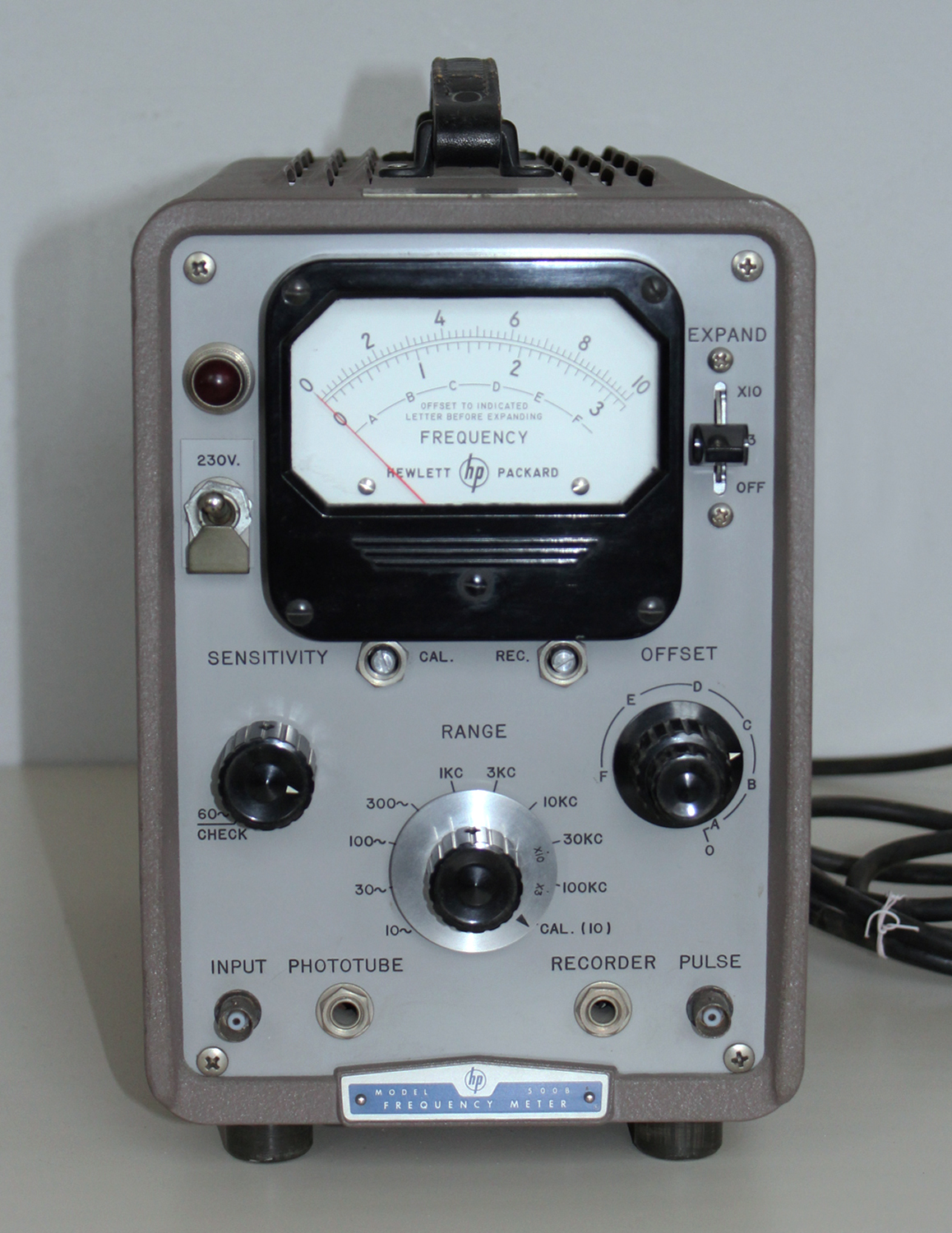
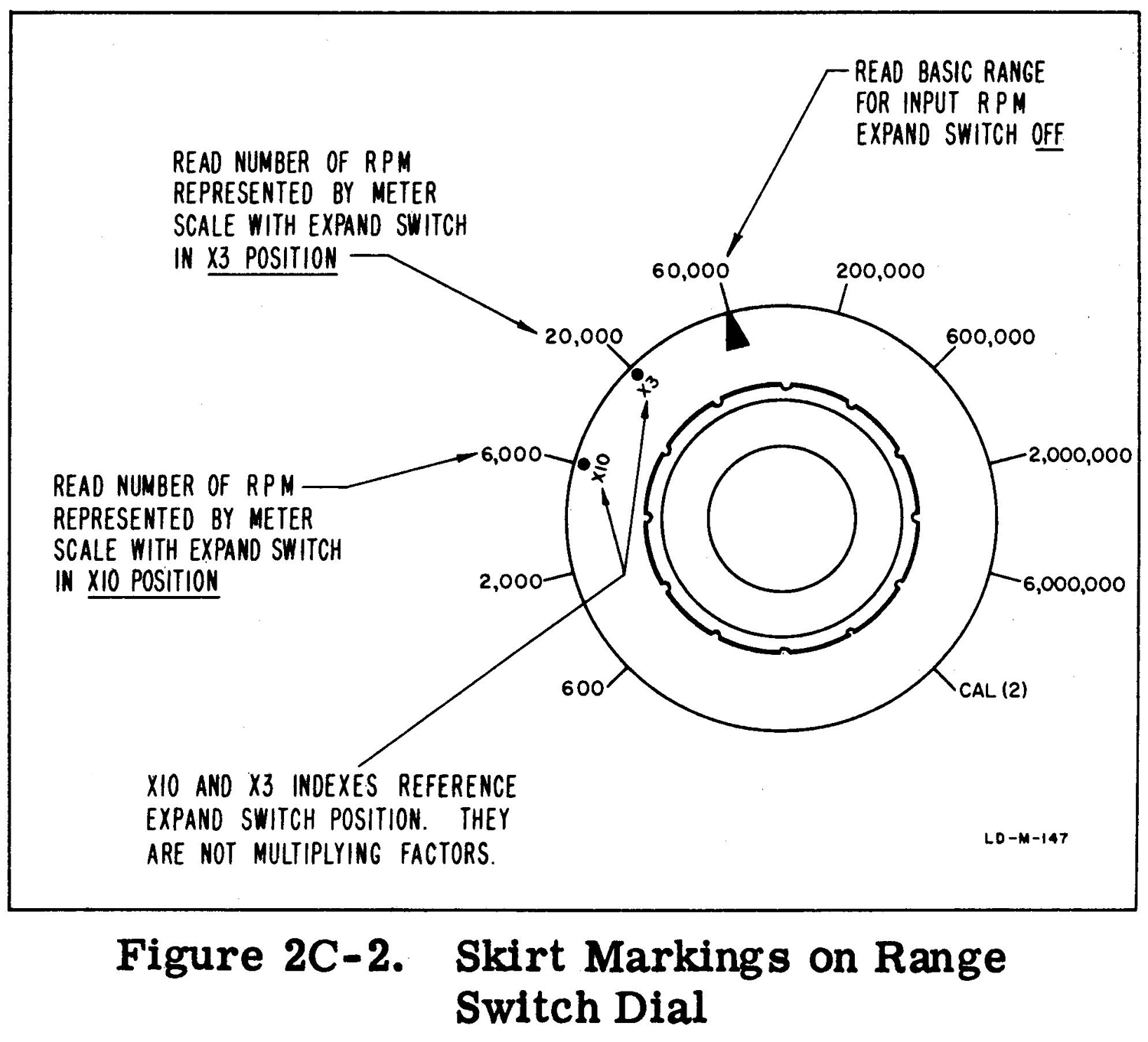
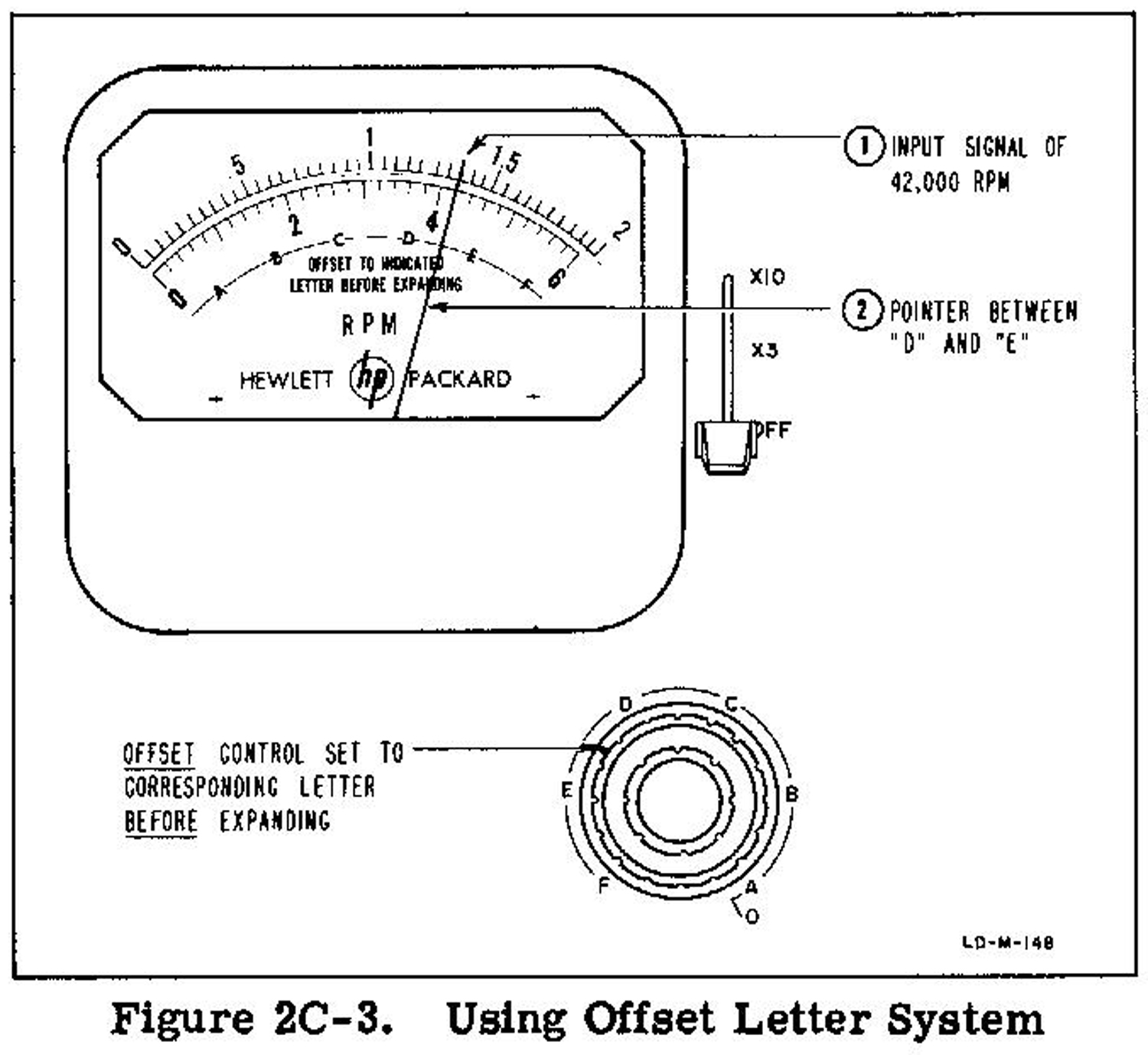
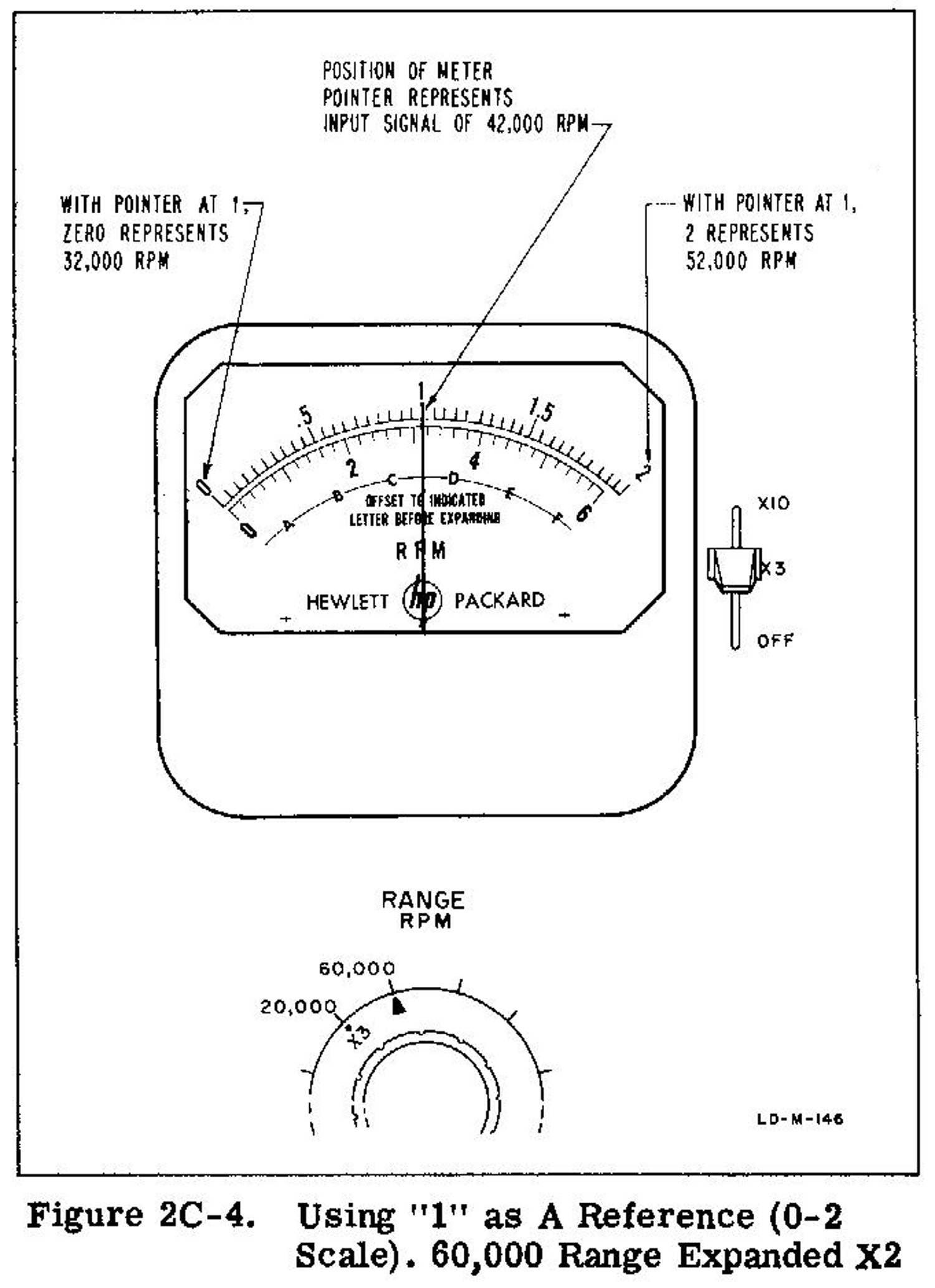
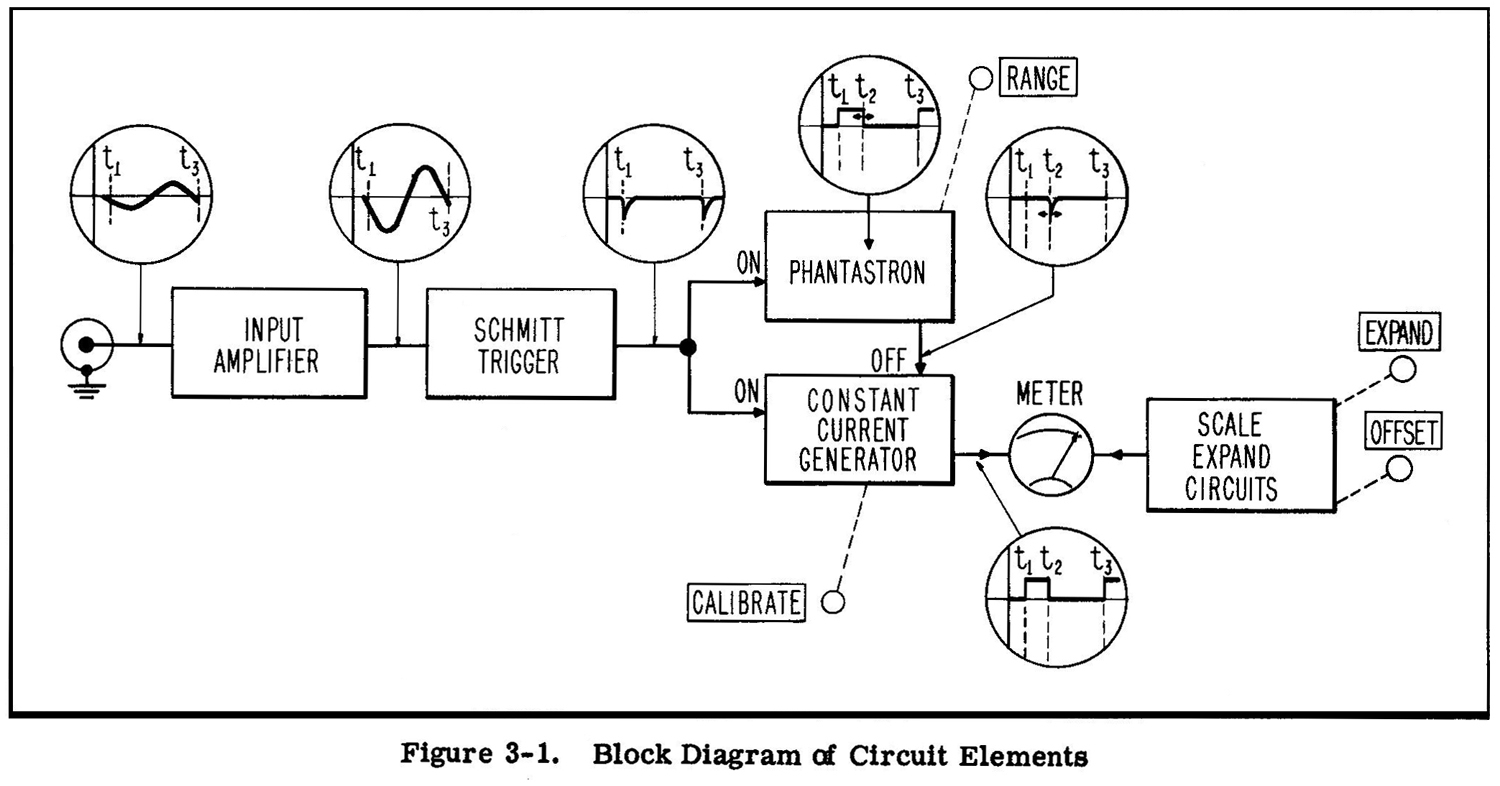
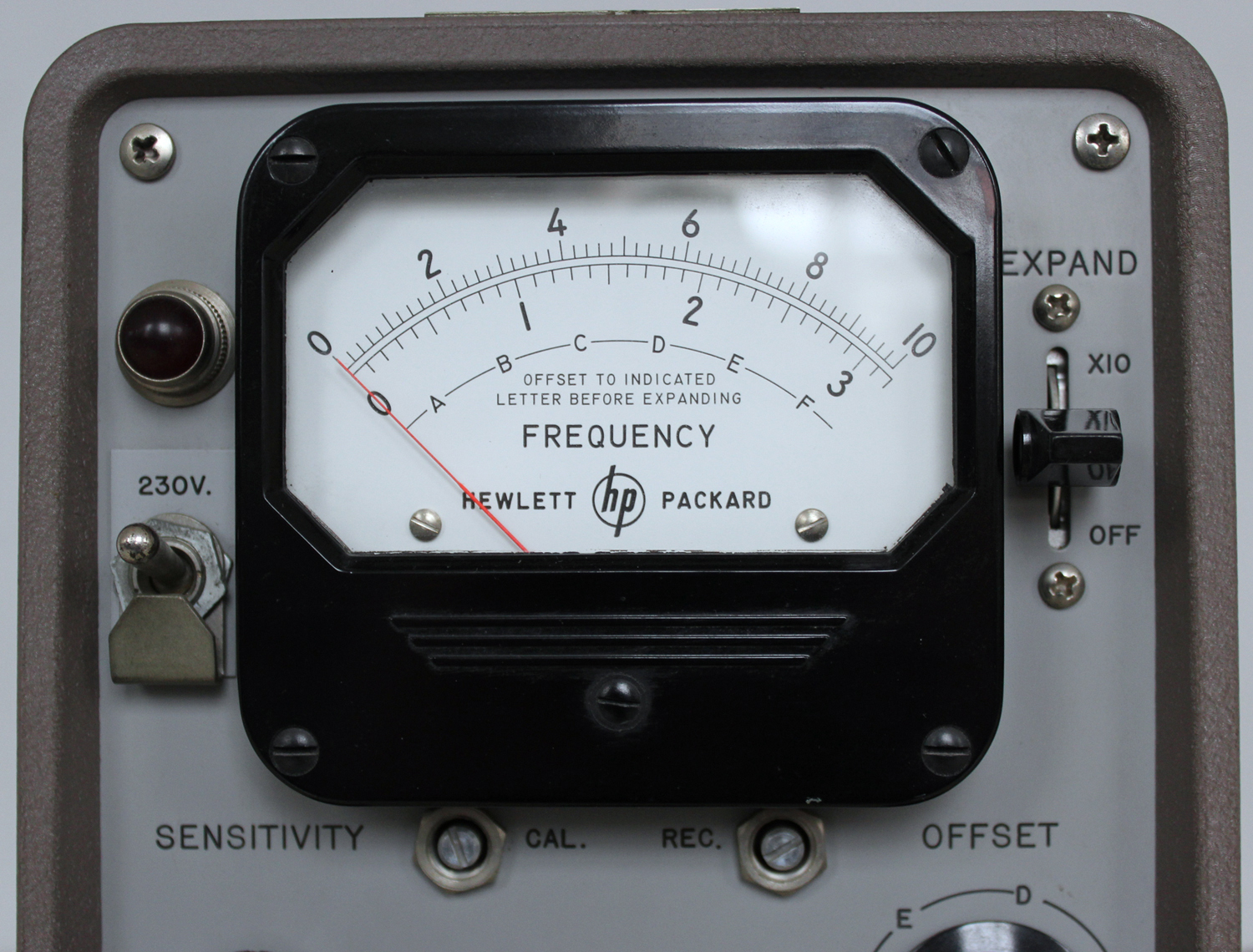 3-3 SCHMITT TRIGGER, V2
3-3 SCHMITT TRIGGER, V2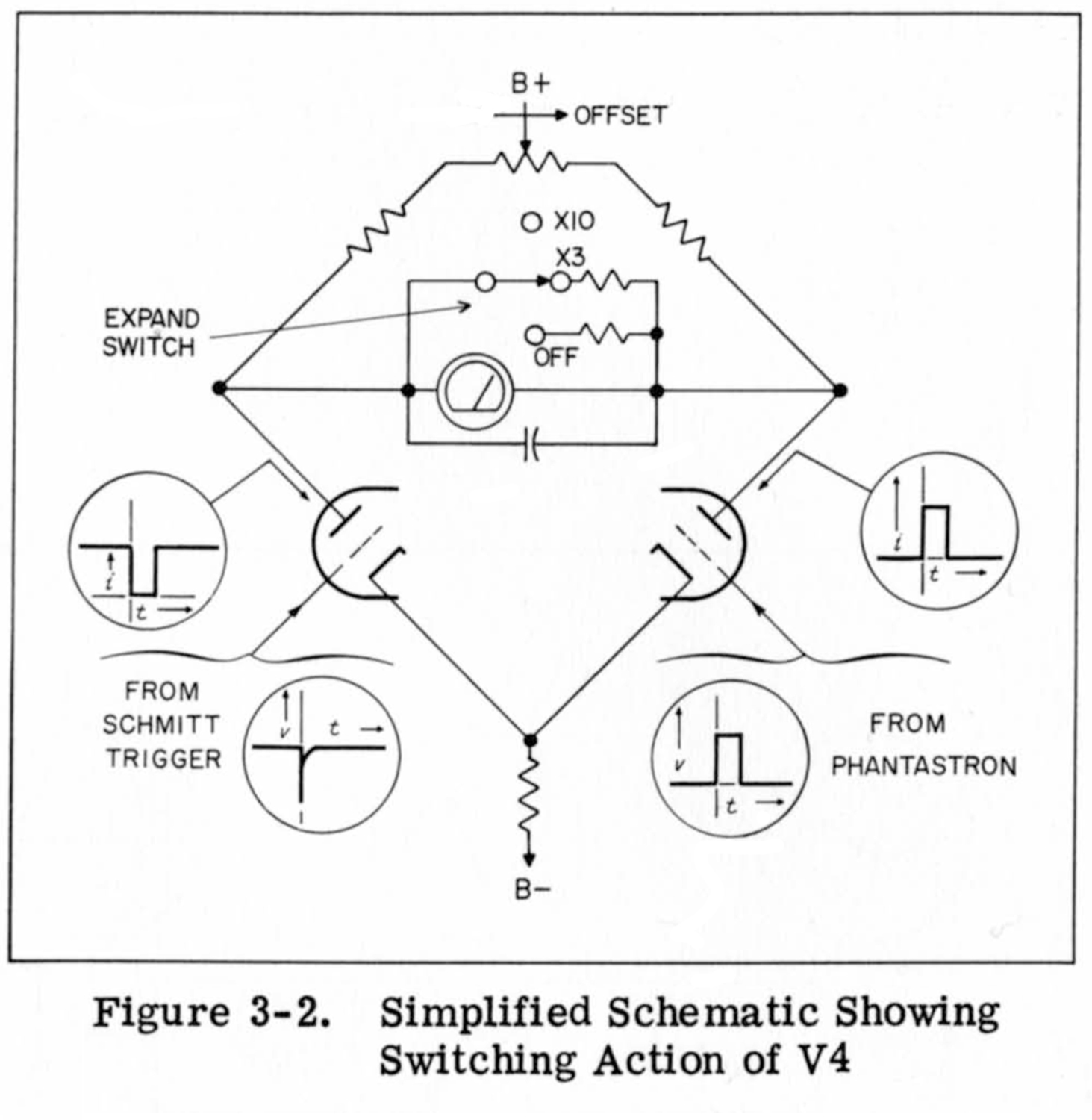 3-6 EXPANDED SCALE
3-6 EXPANDED SCALE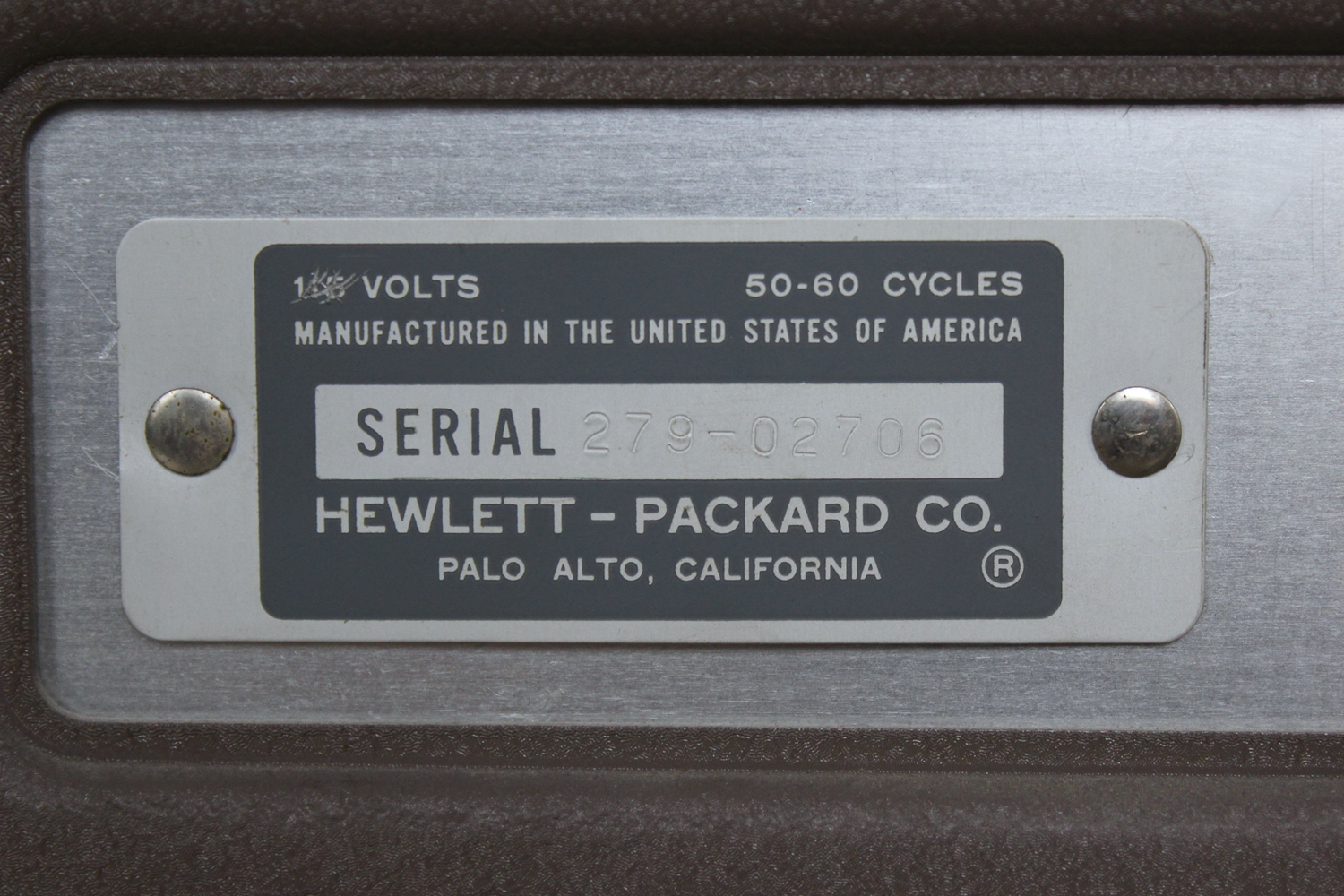
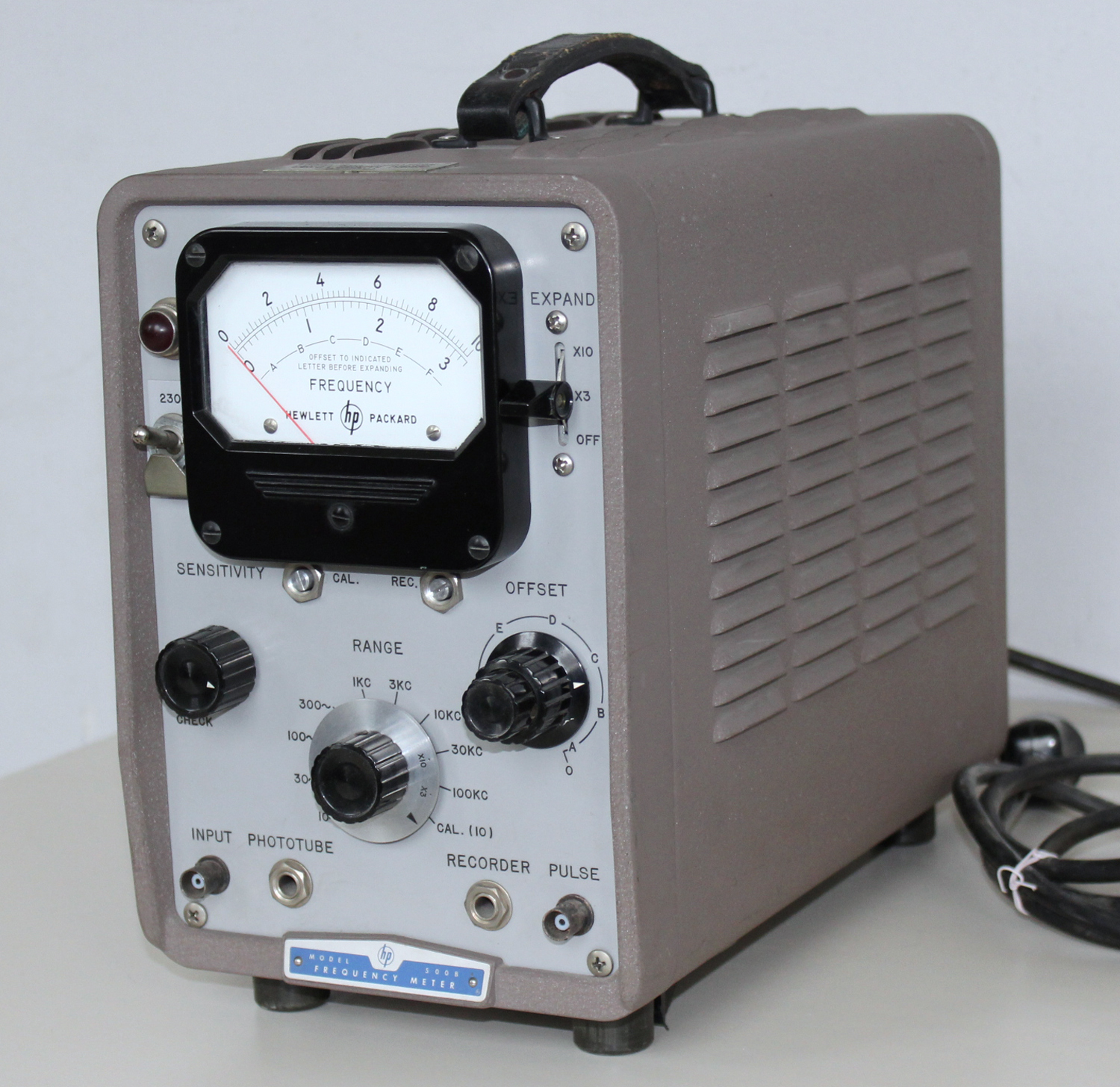
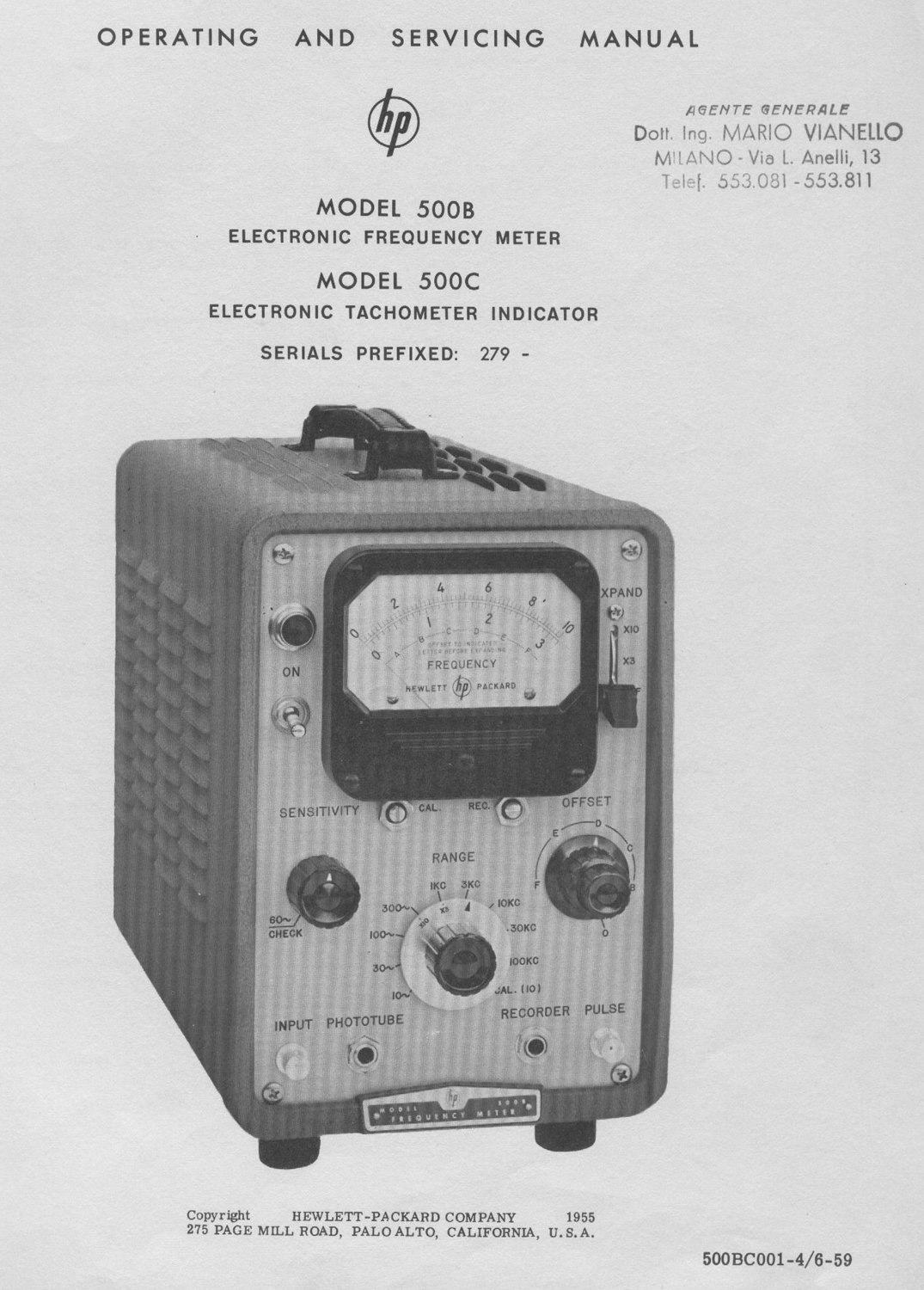
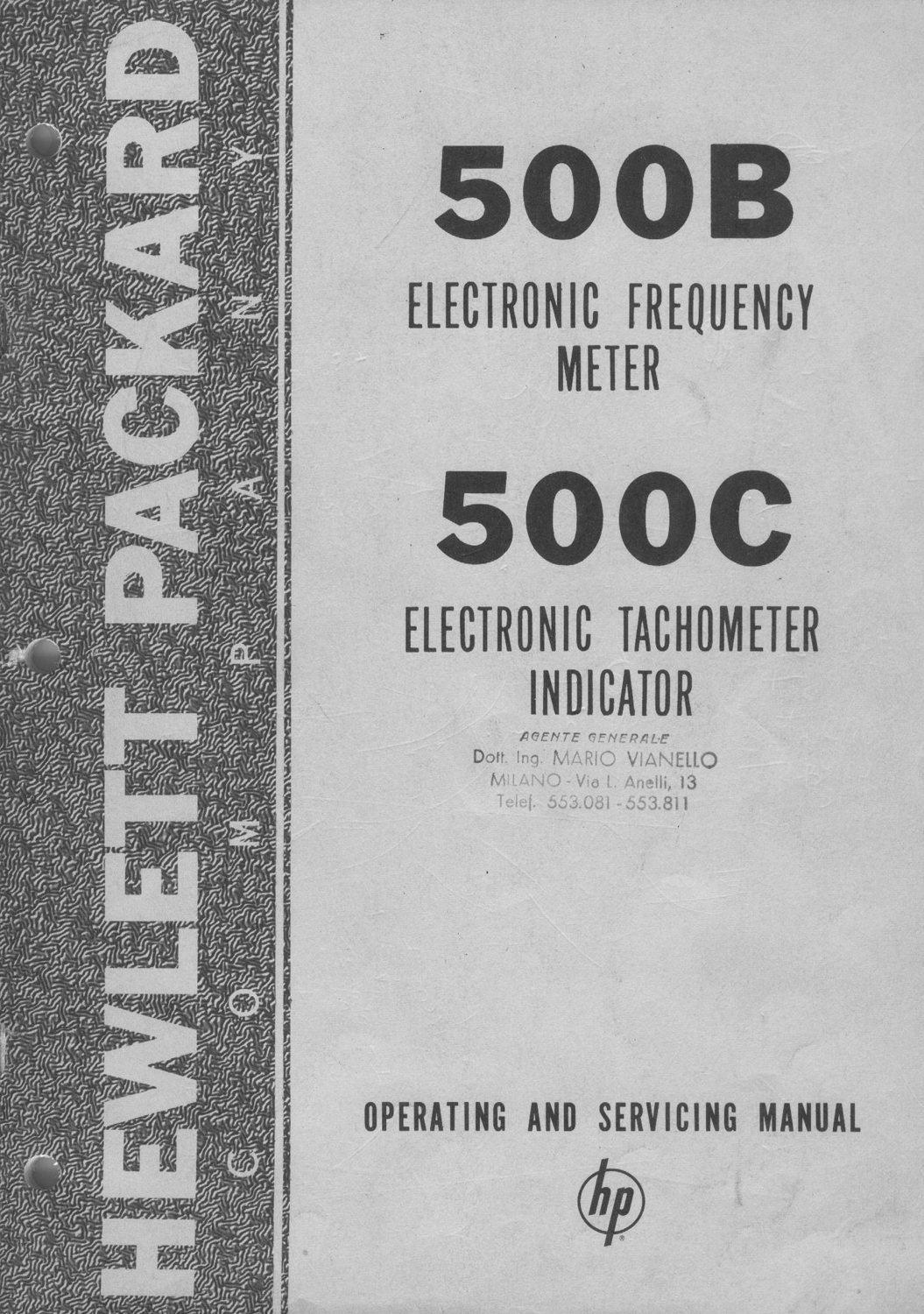
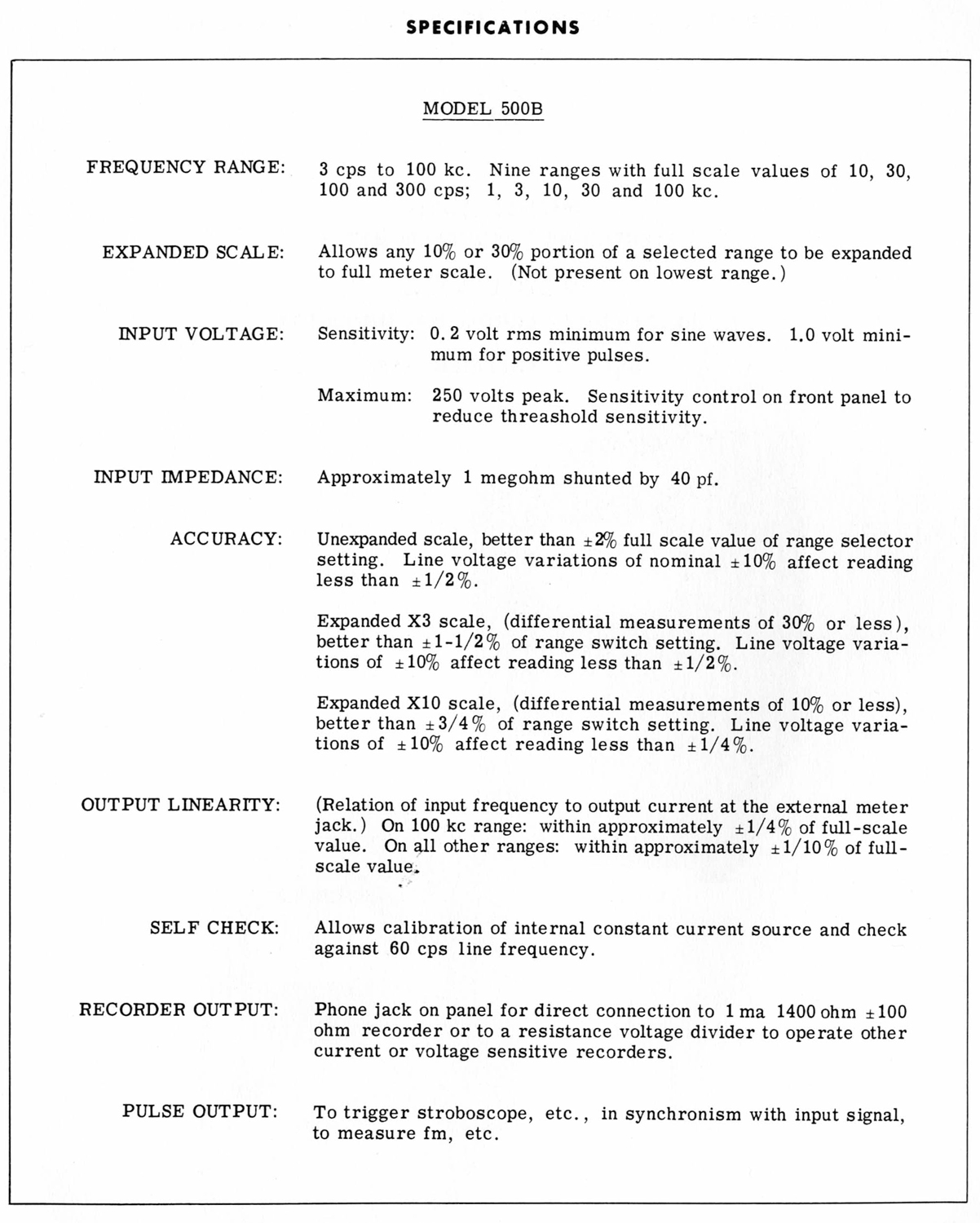
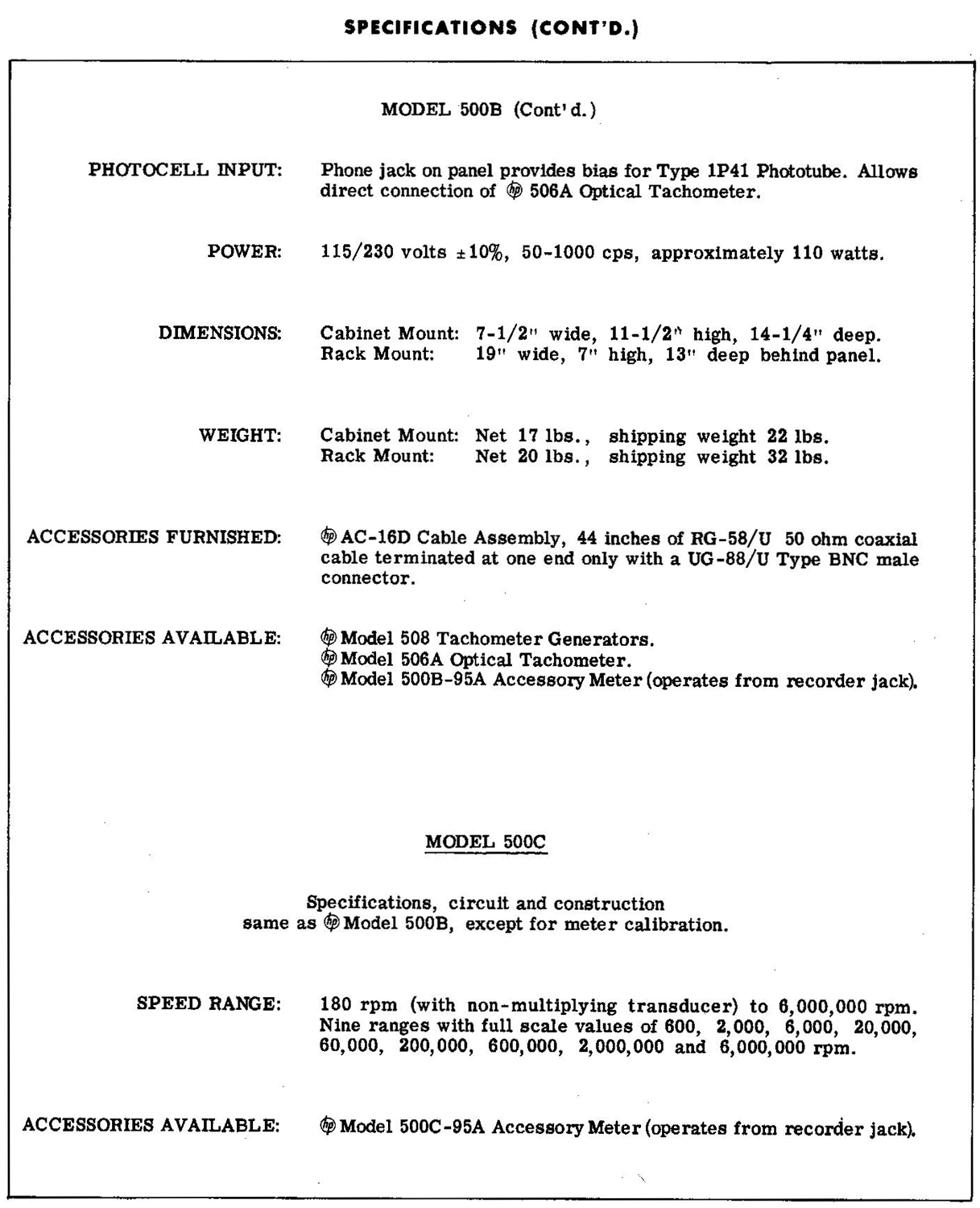 §§§
§§§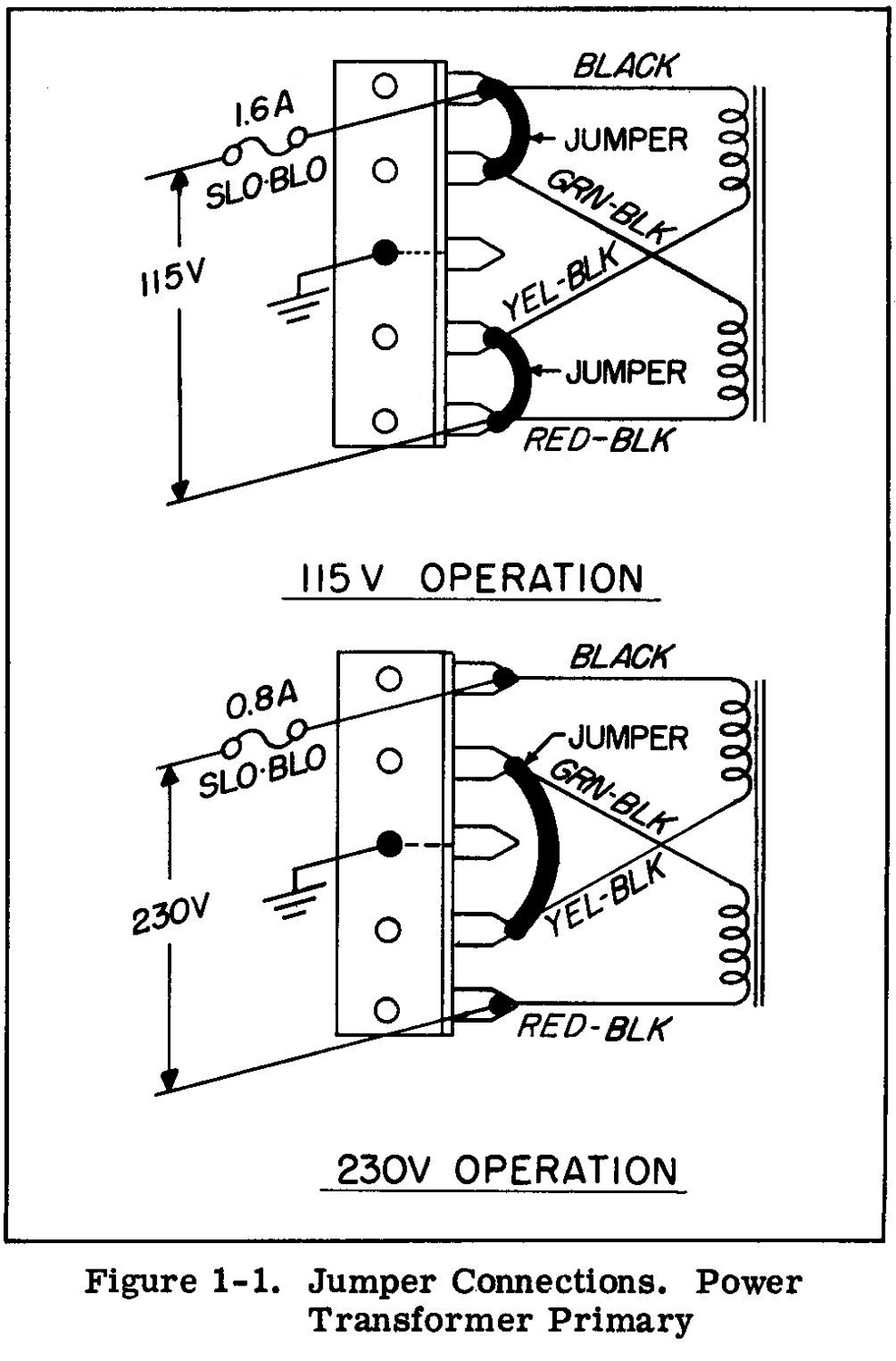
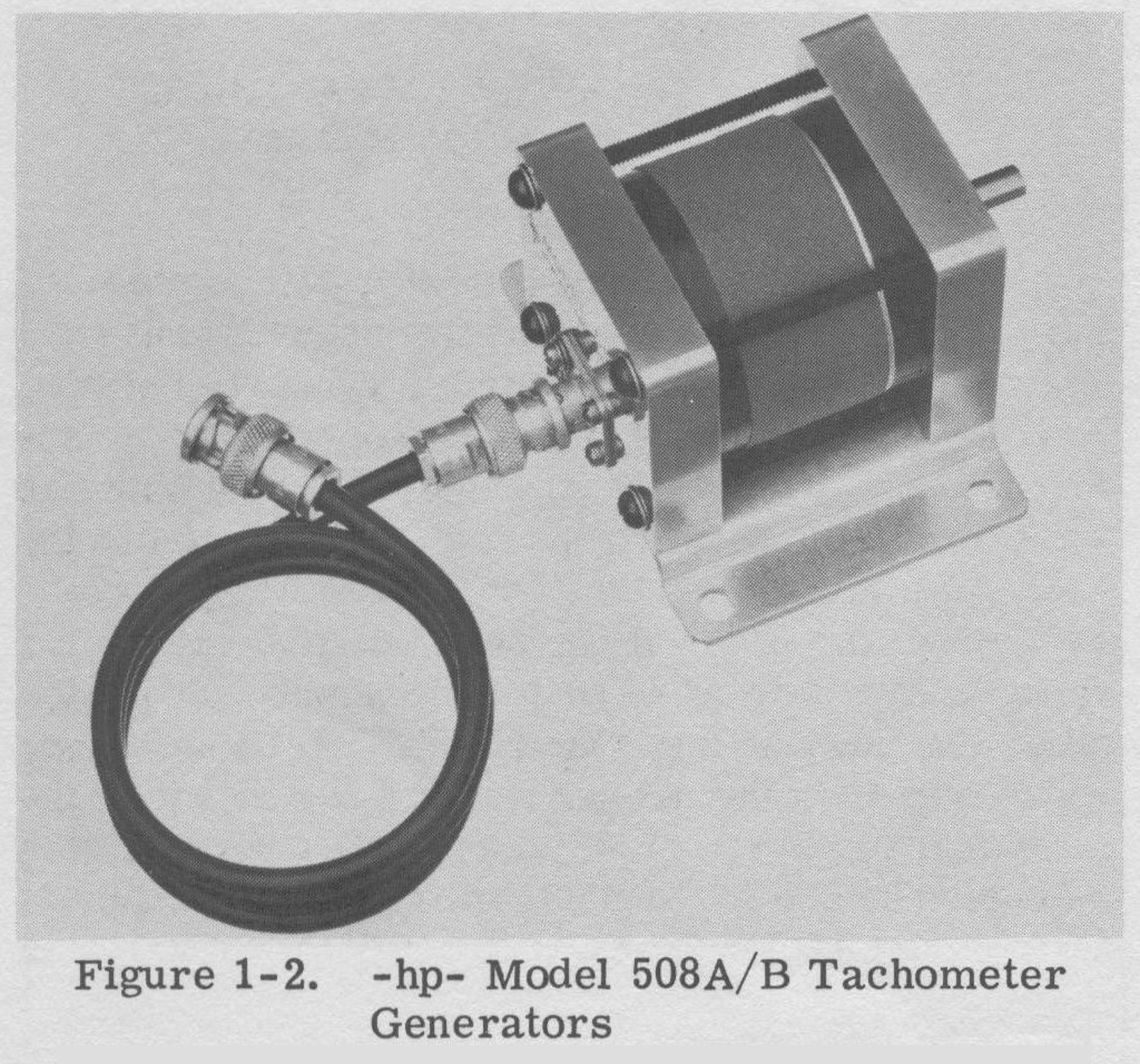
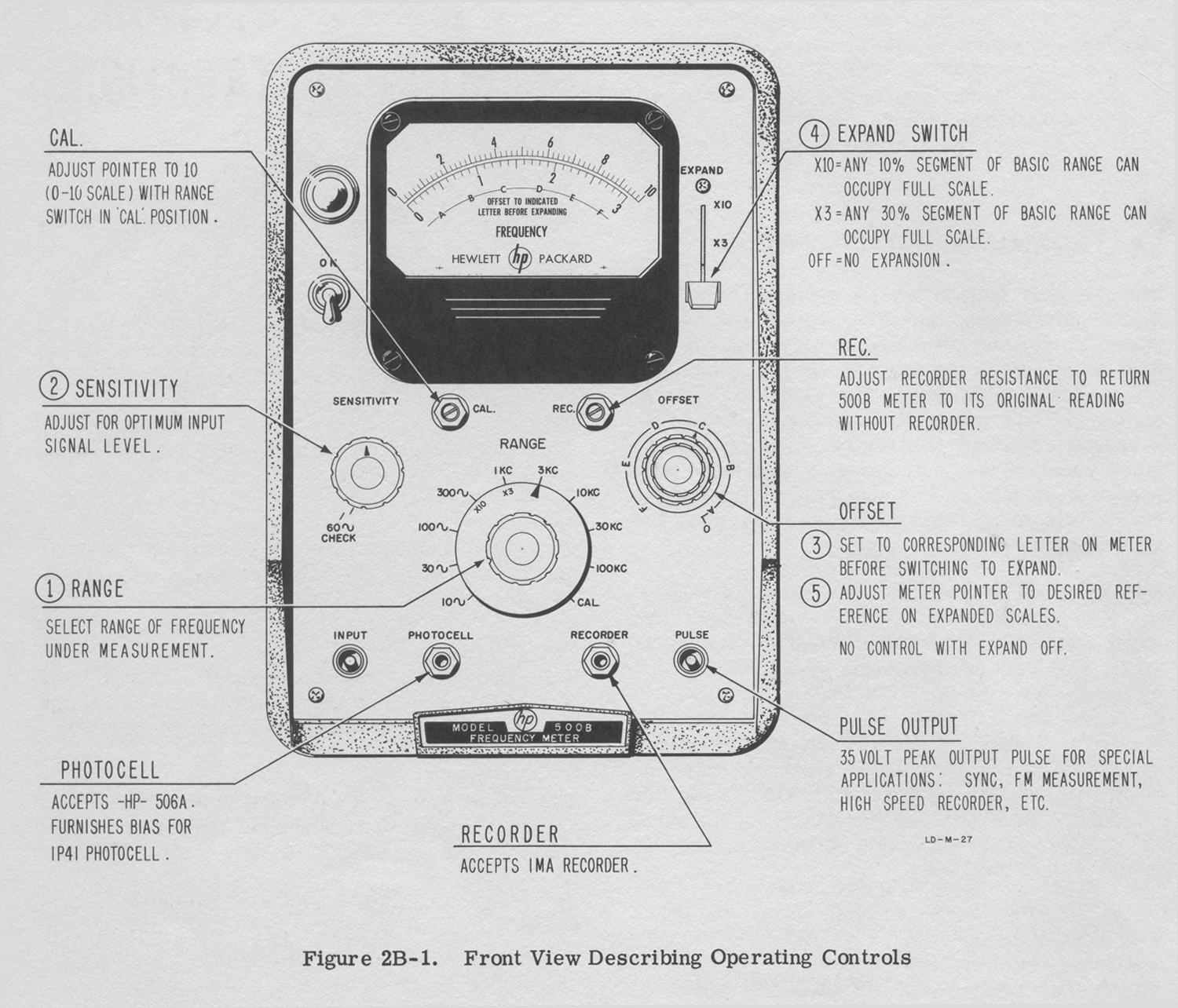
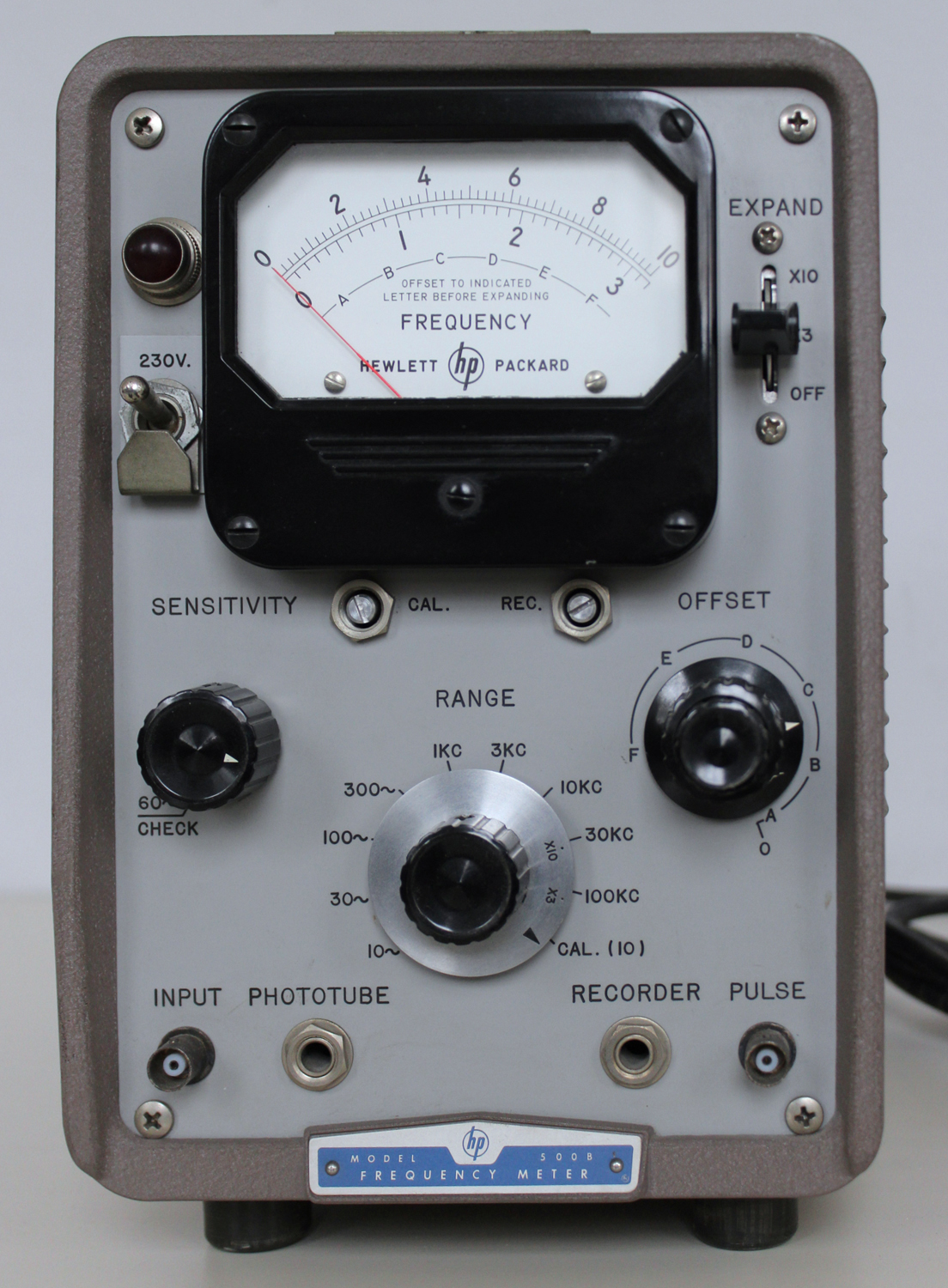
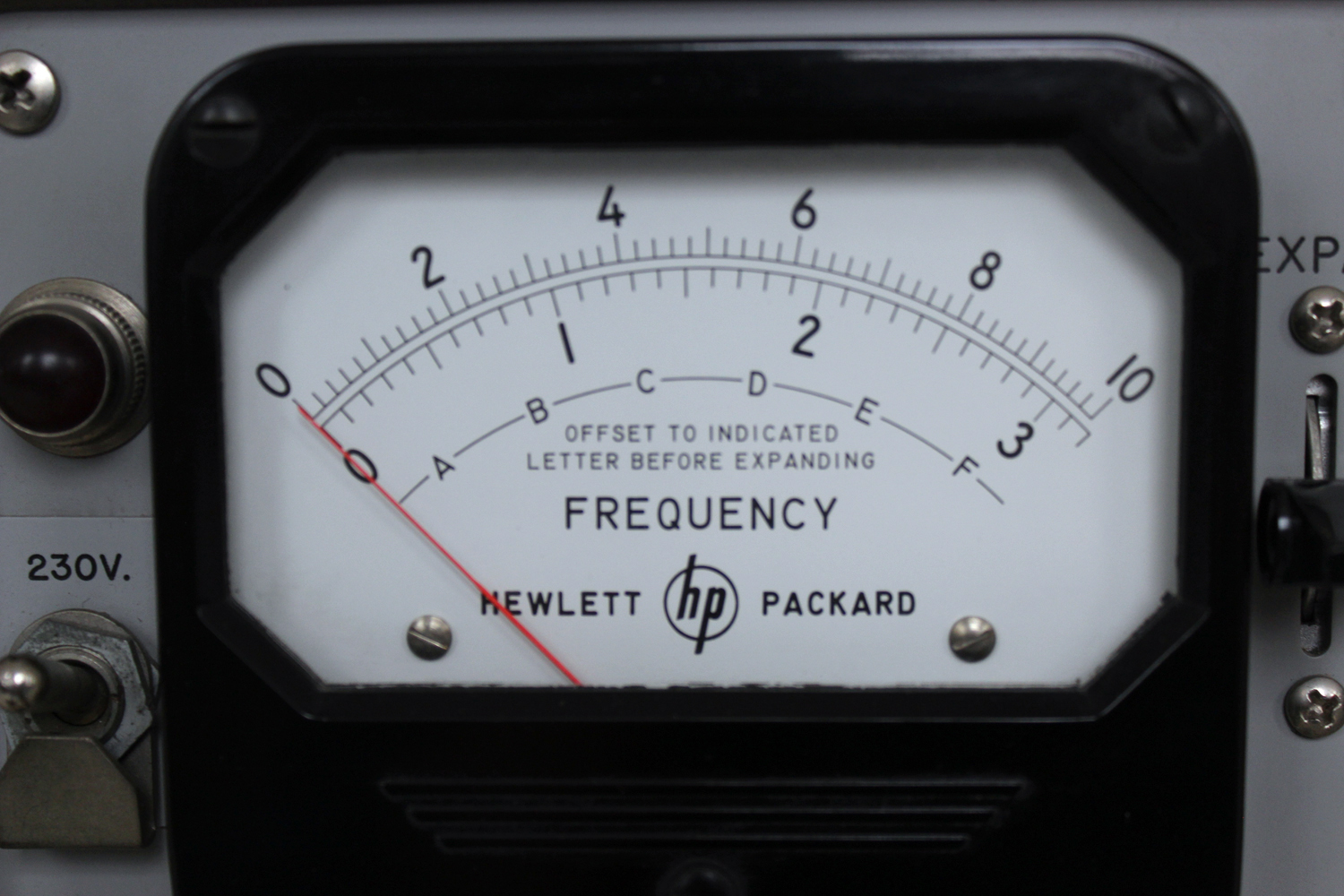
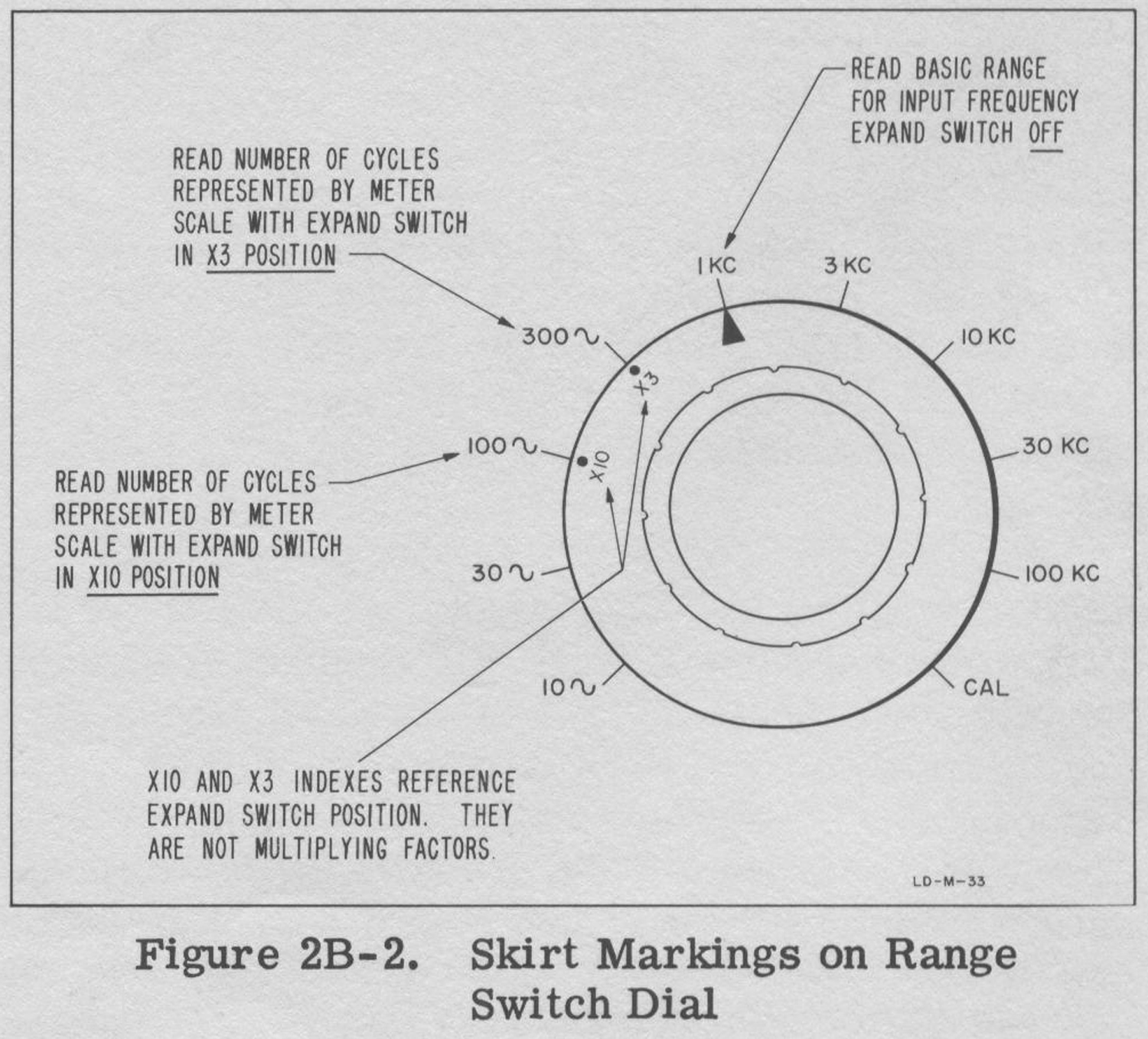
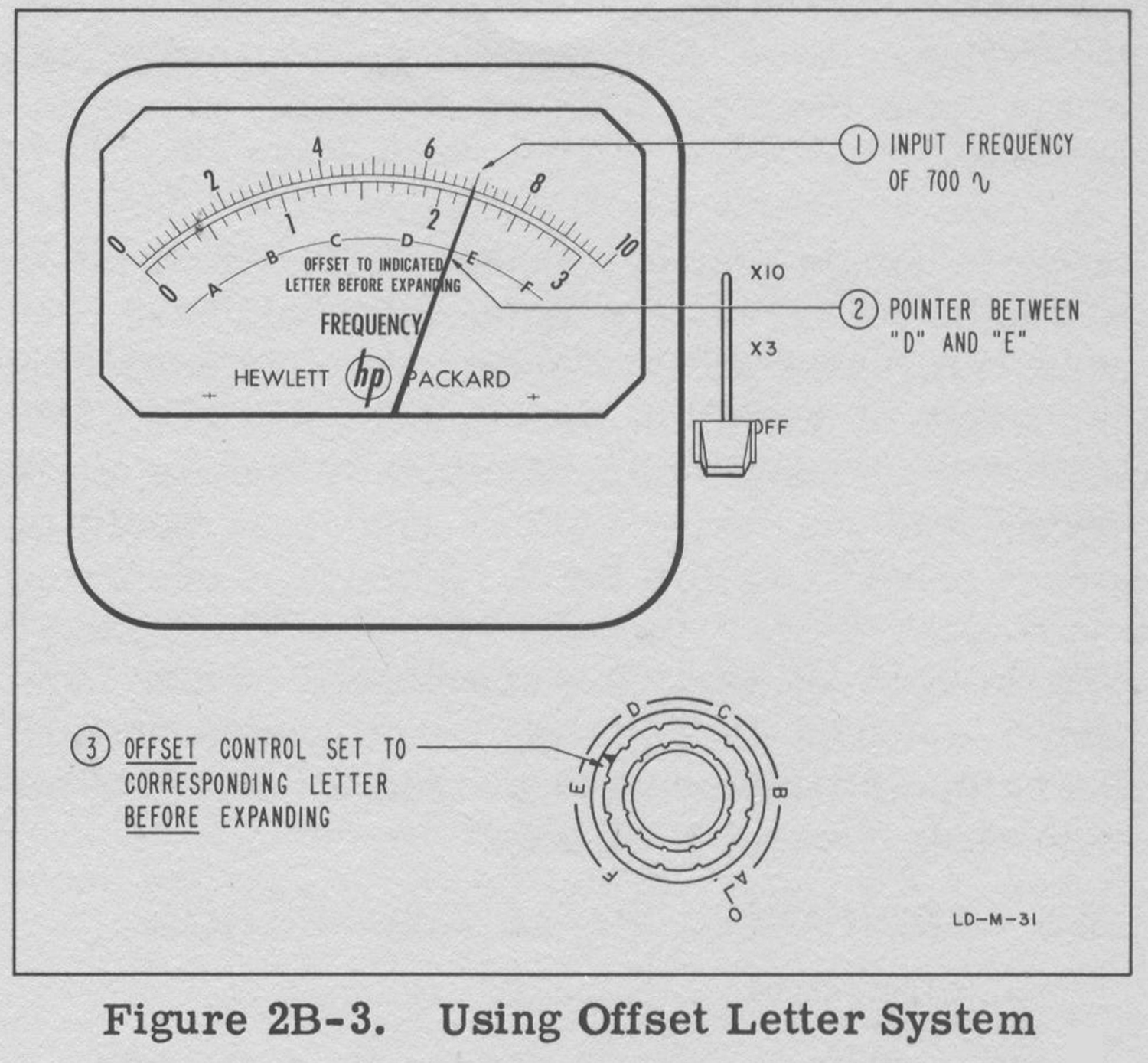
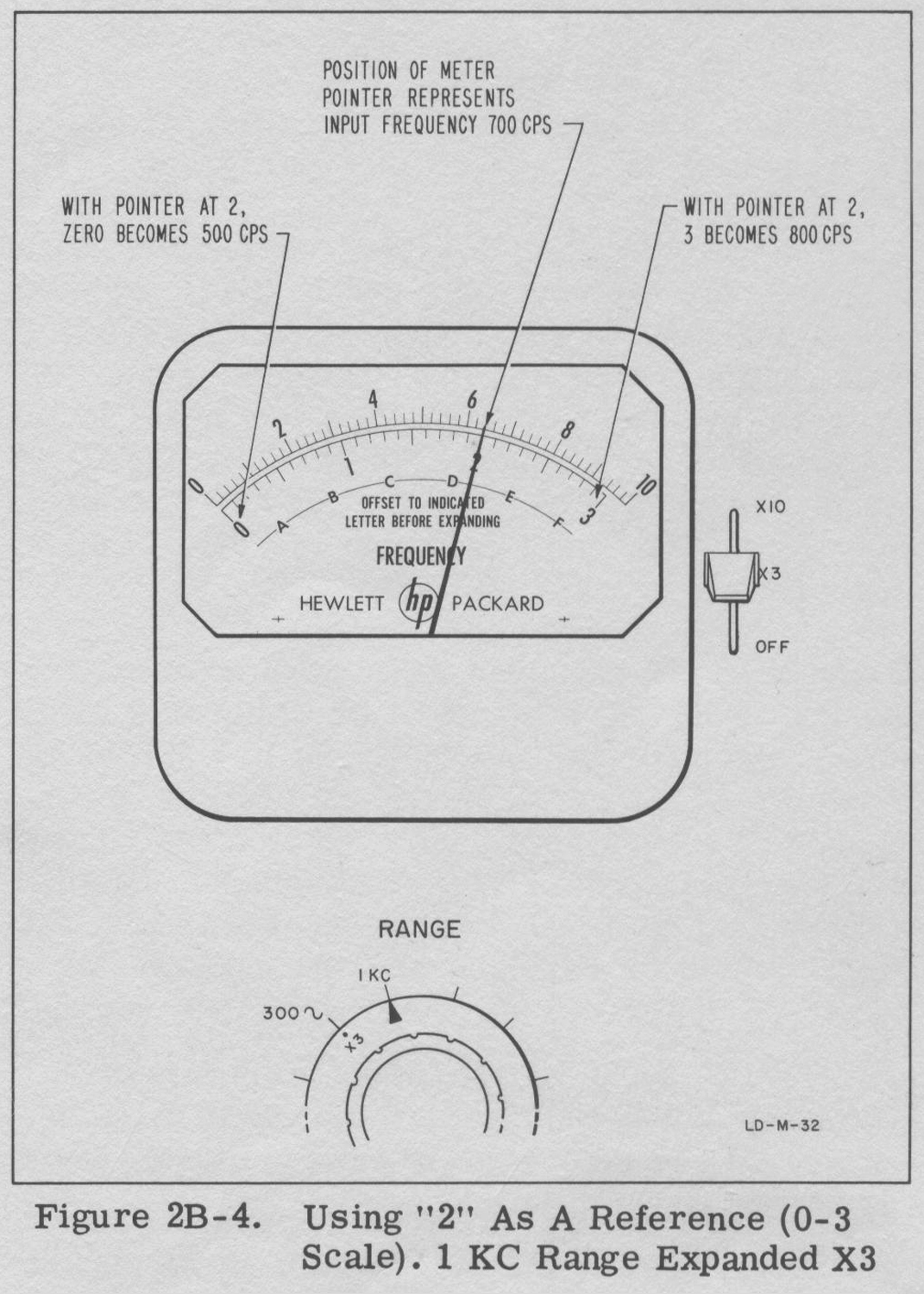
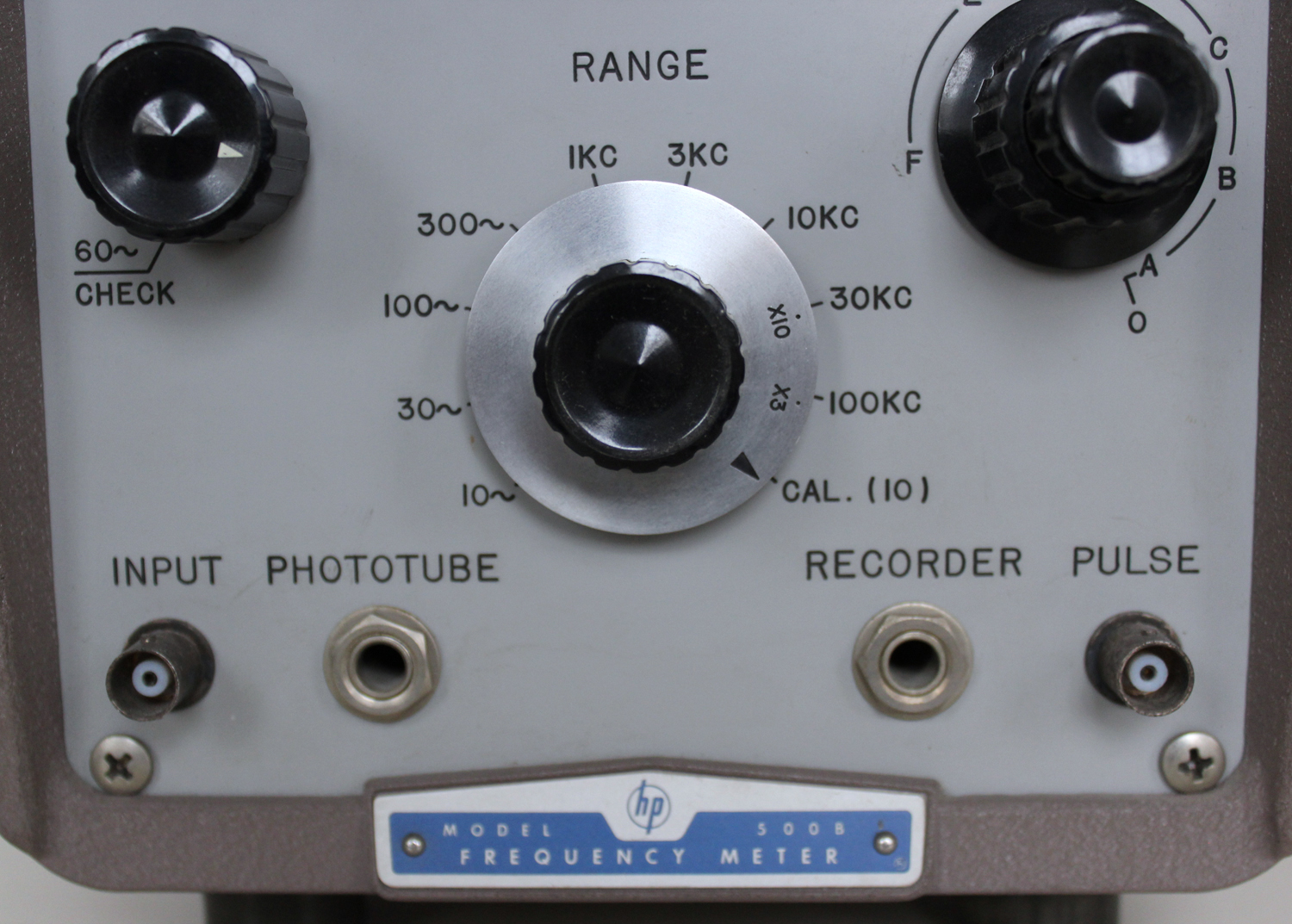
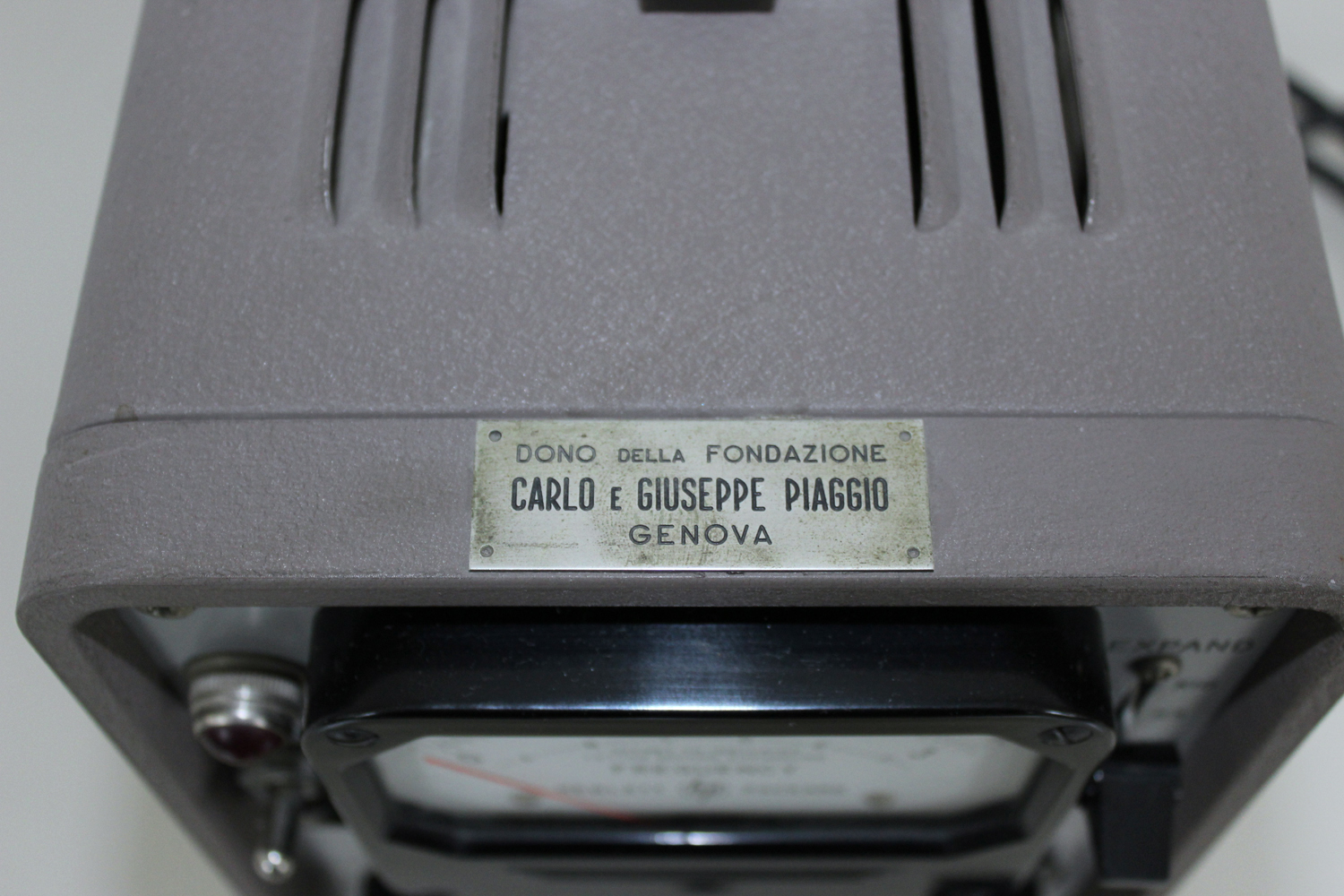 2B-7 RANDOM COUNTING, GENERAL
2B-7 RANDOM COUNTING, GENERAL